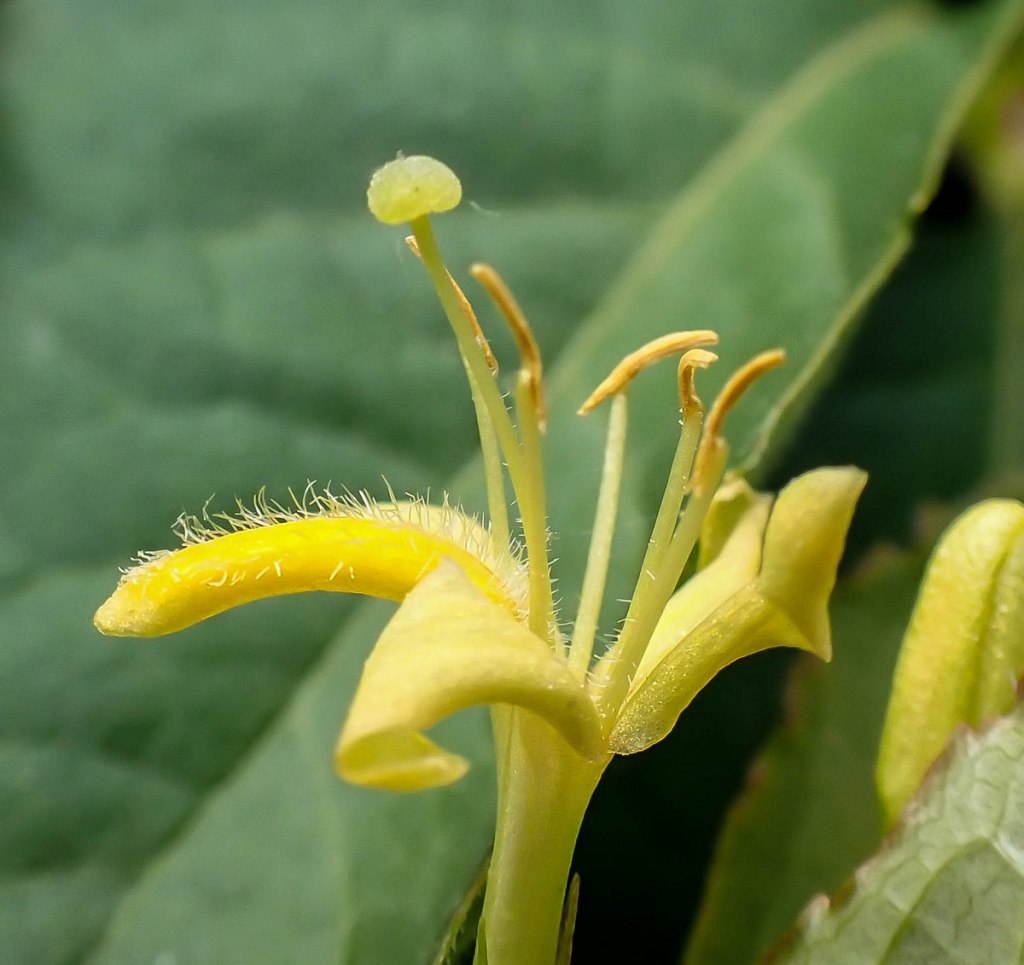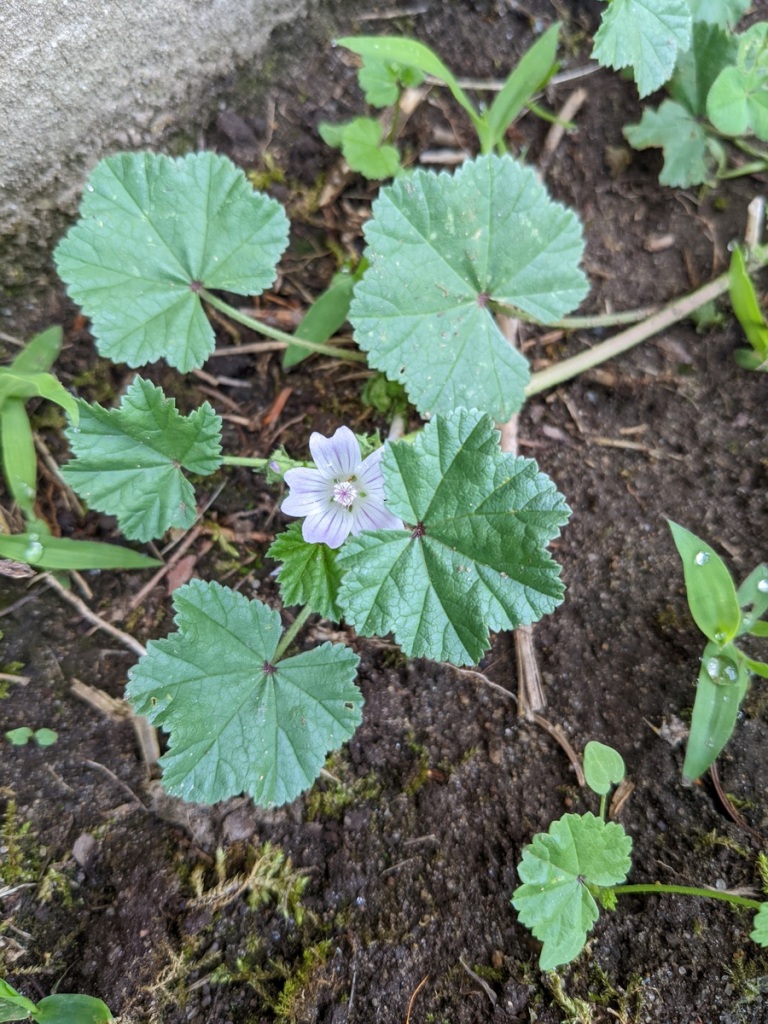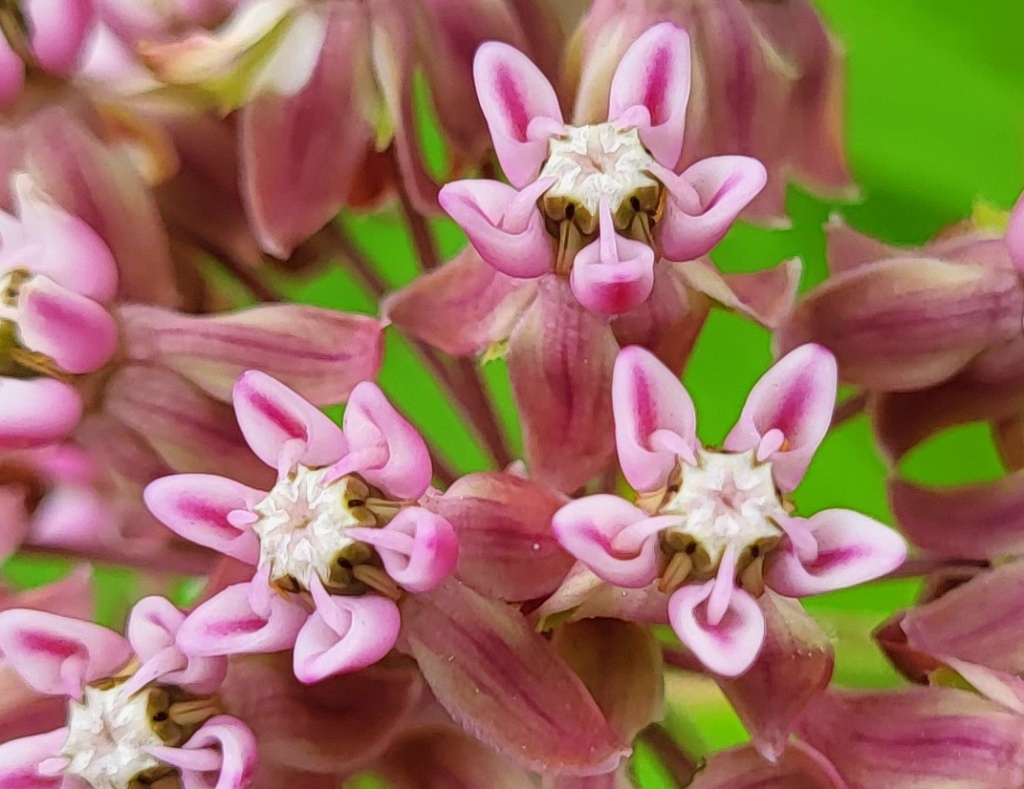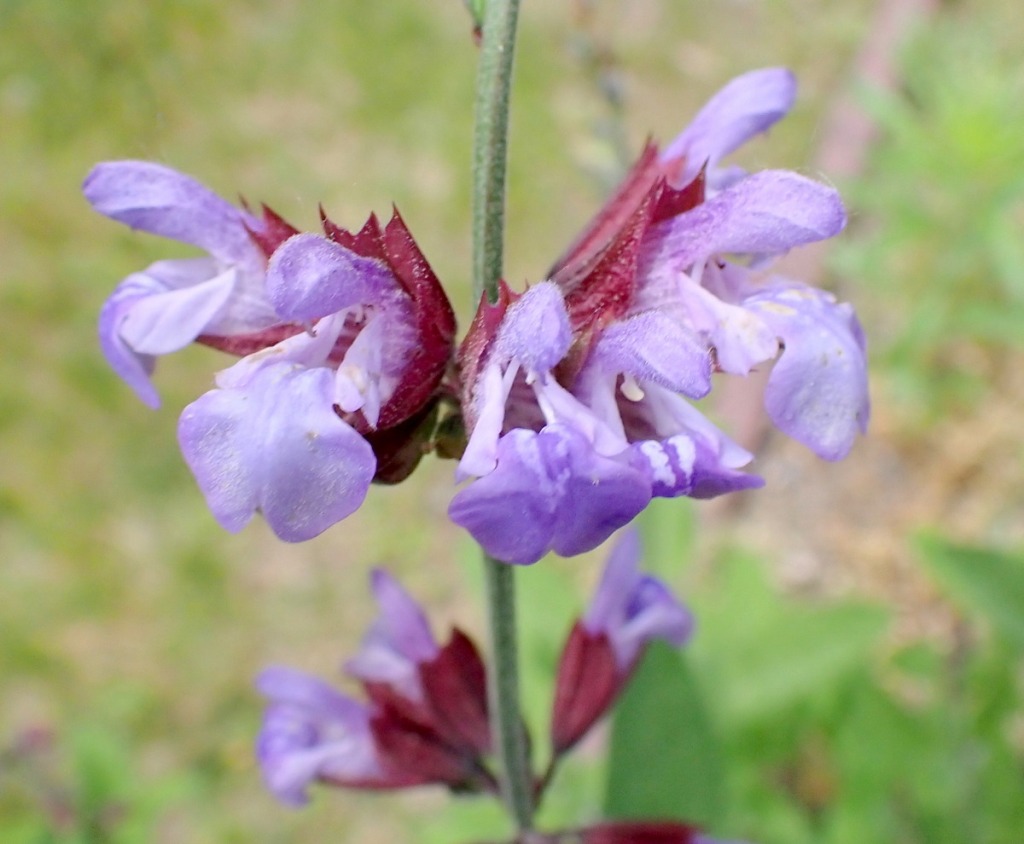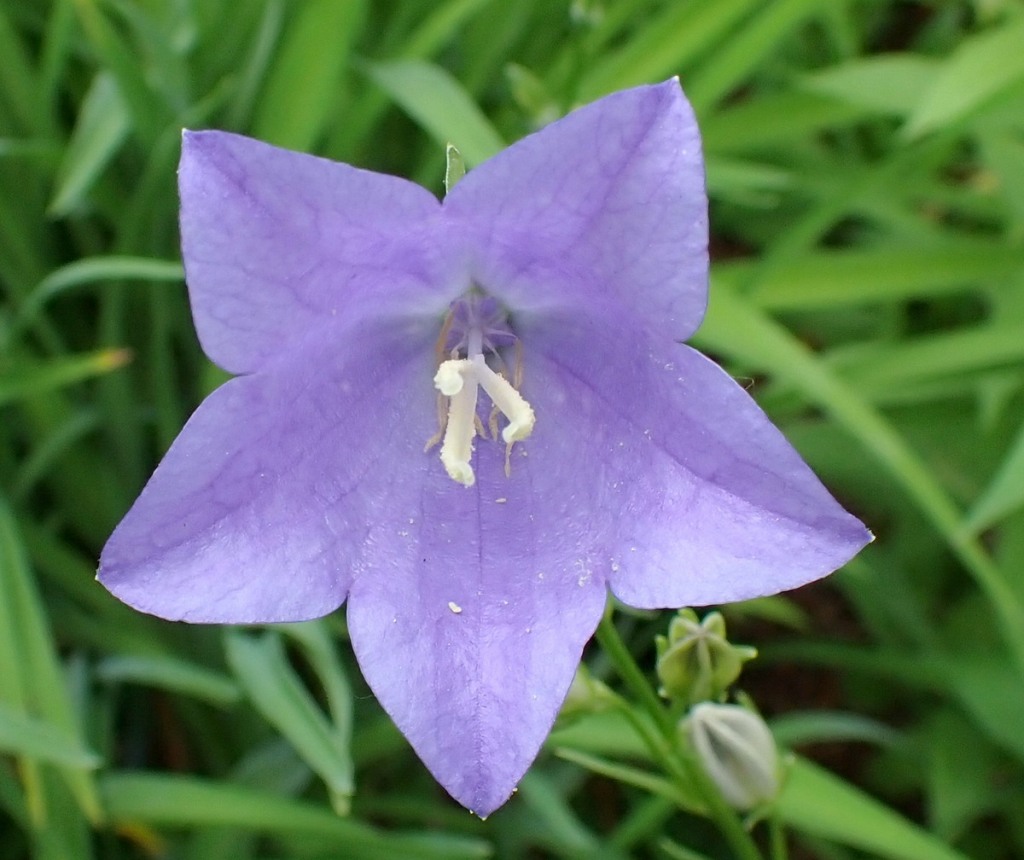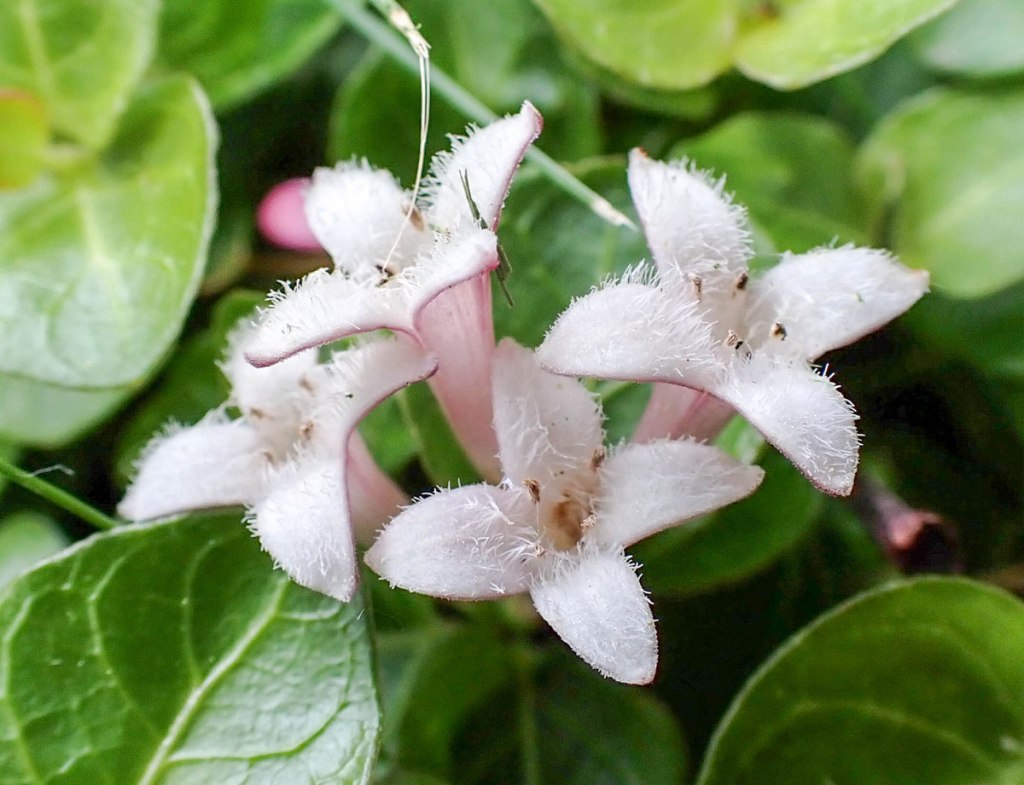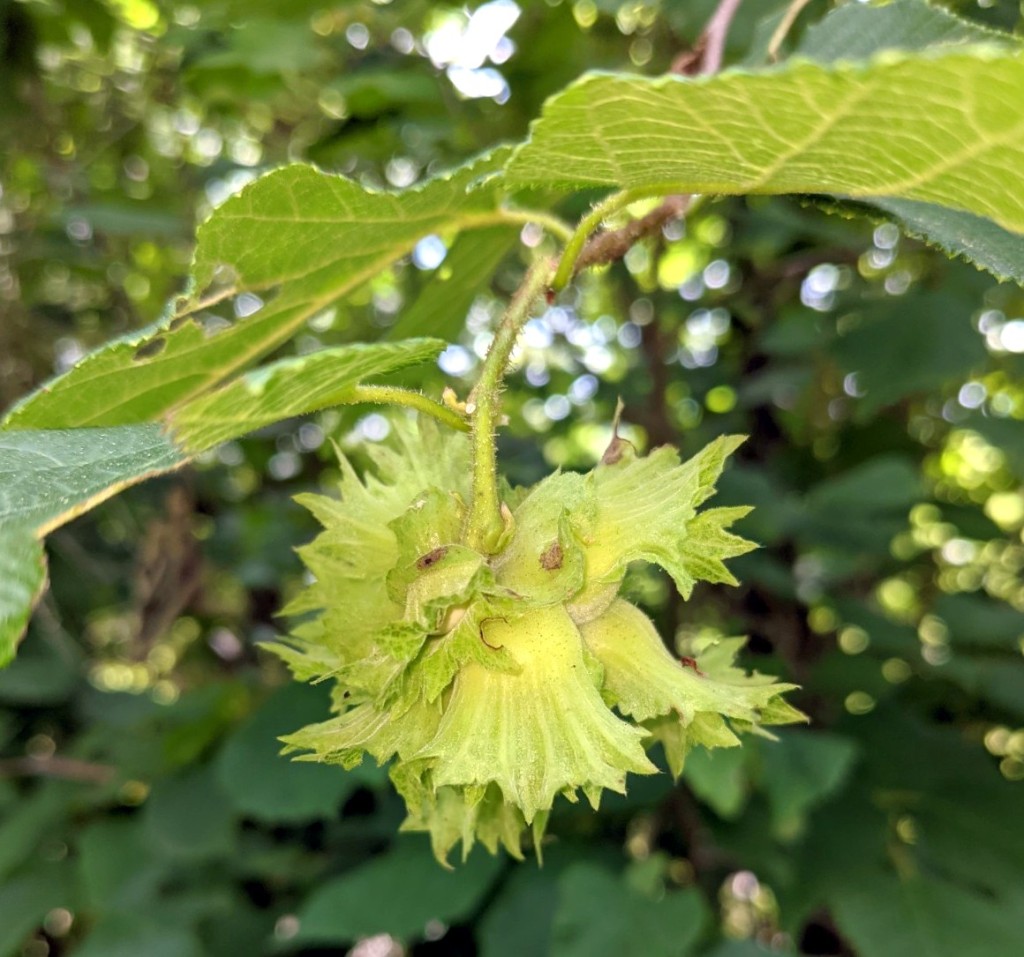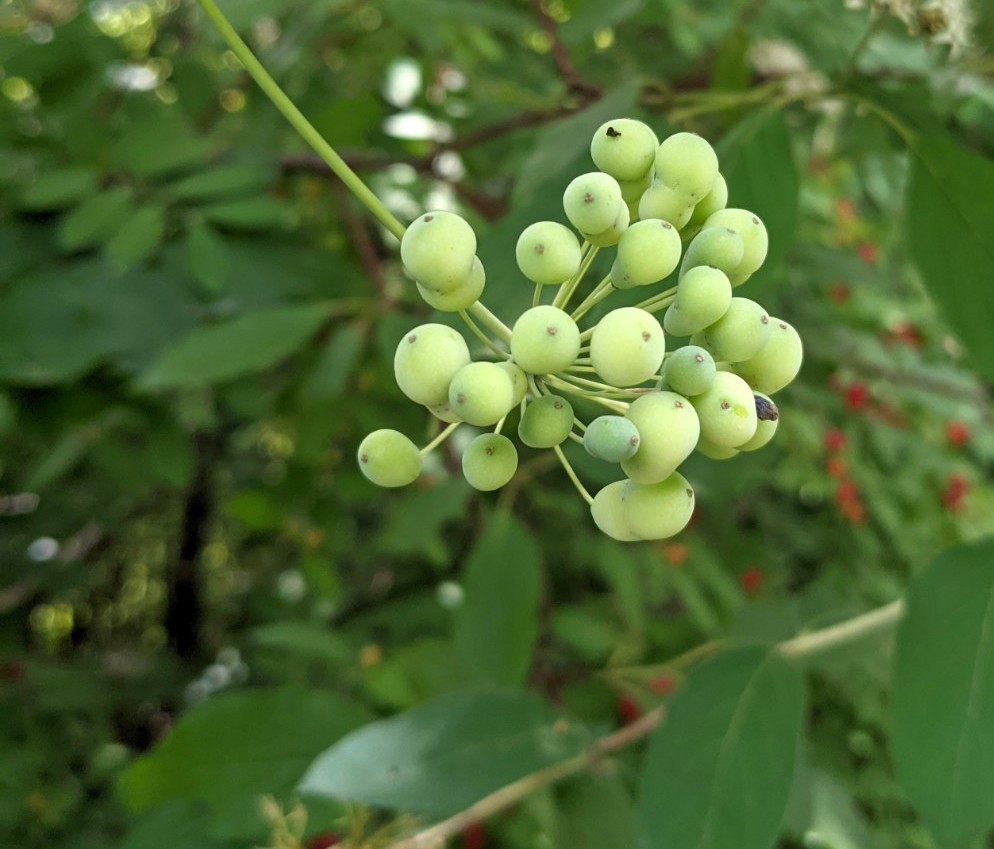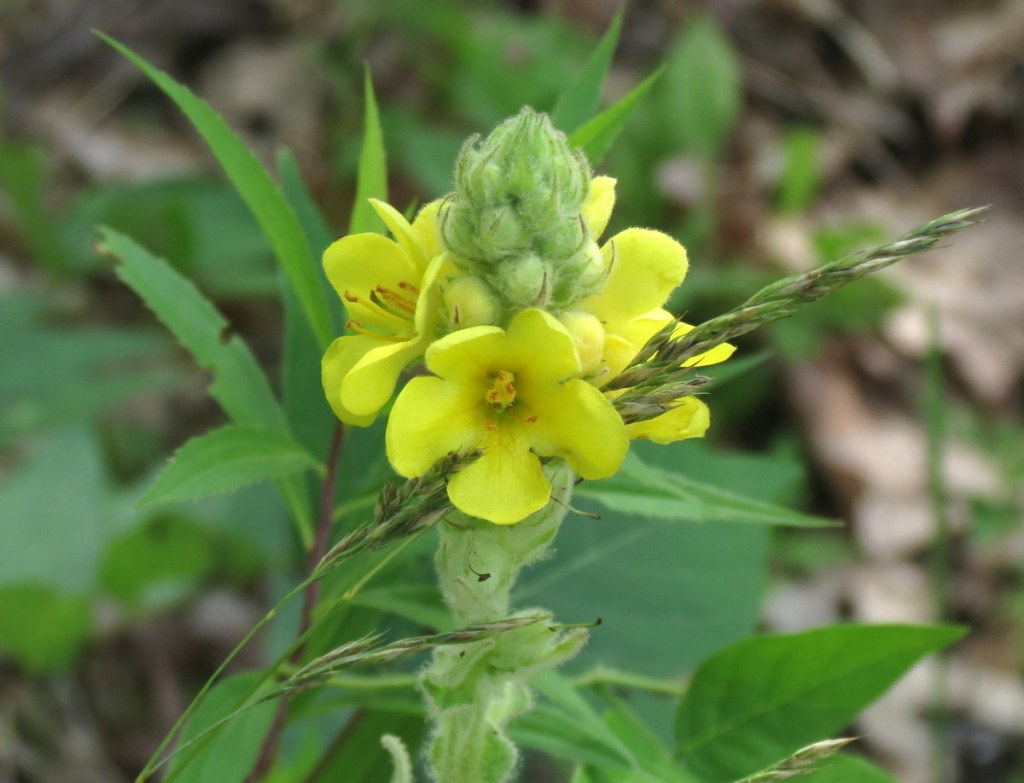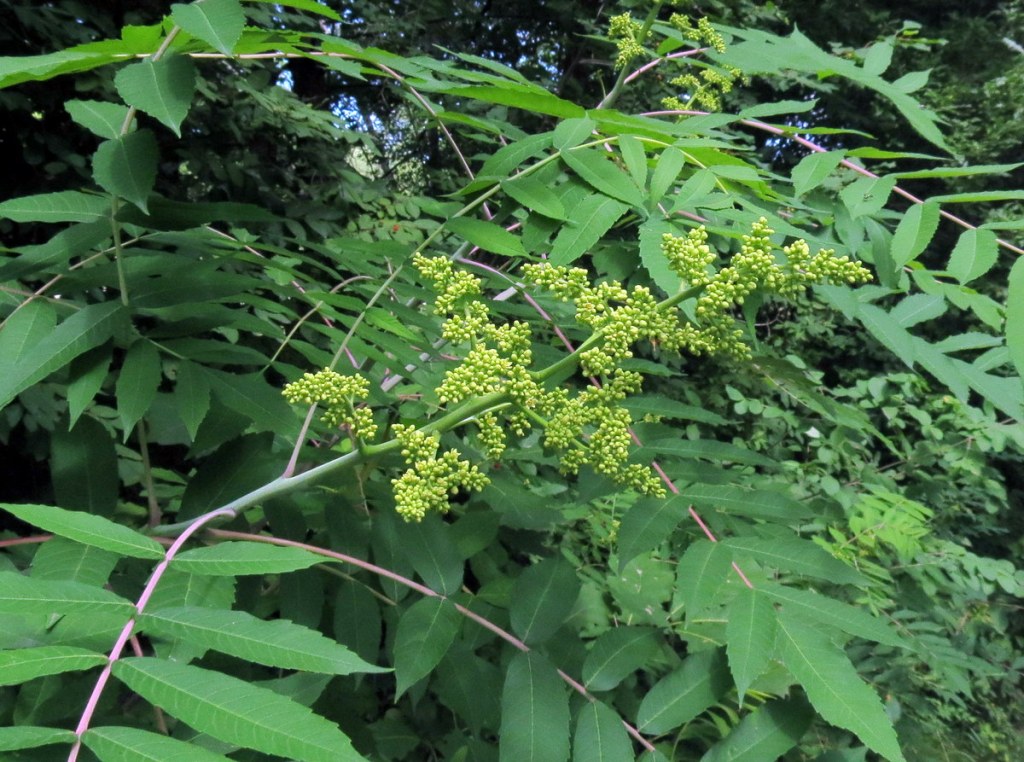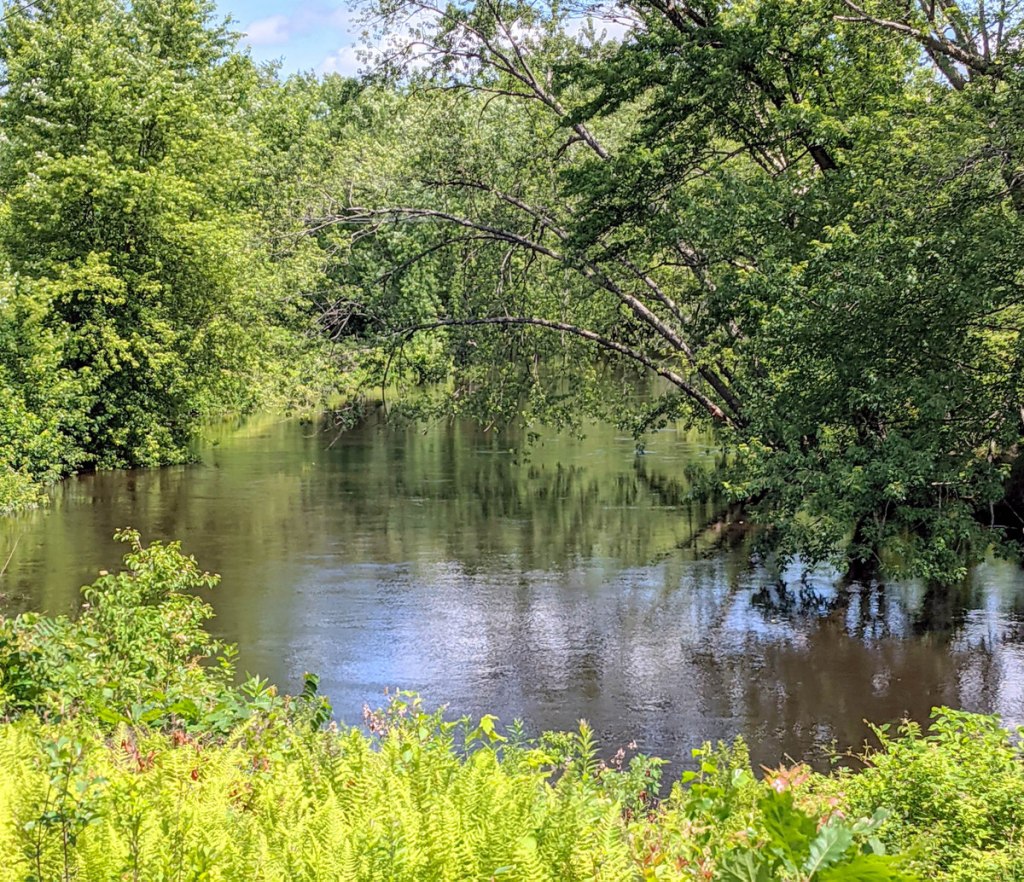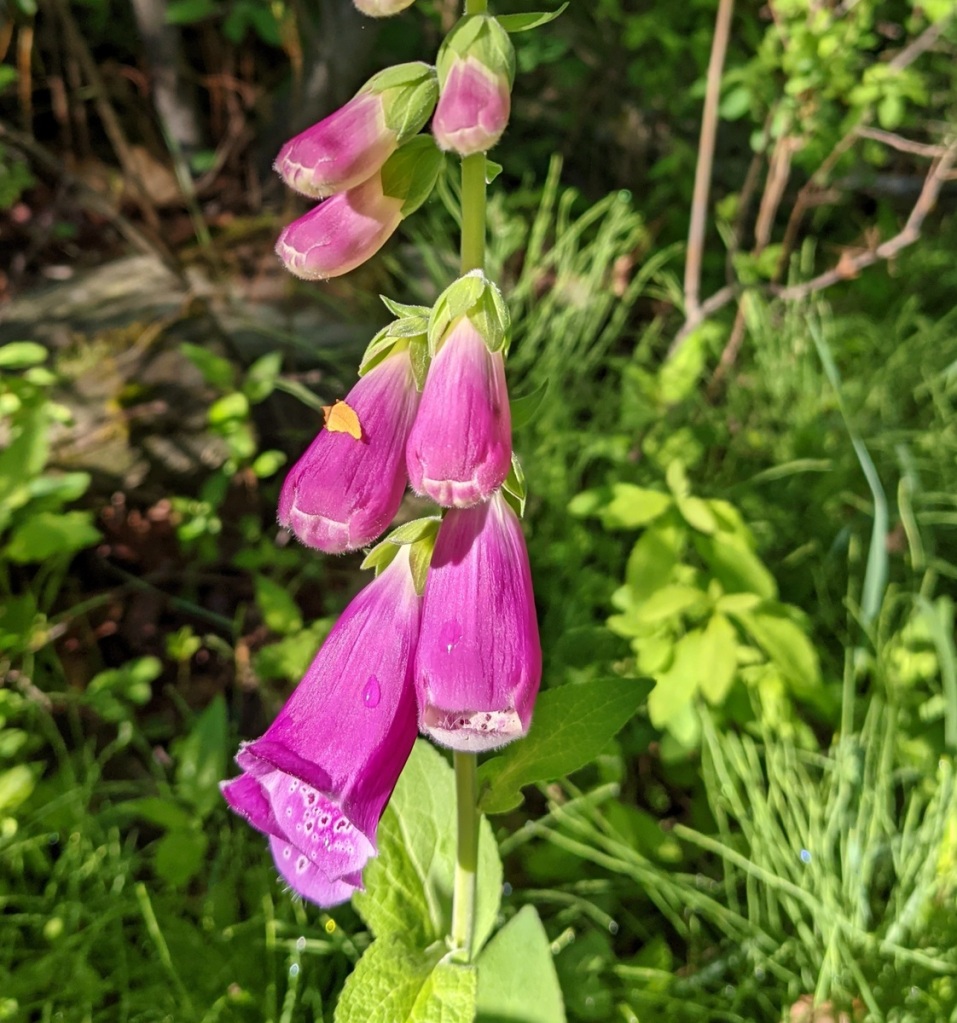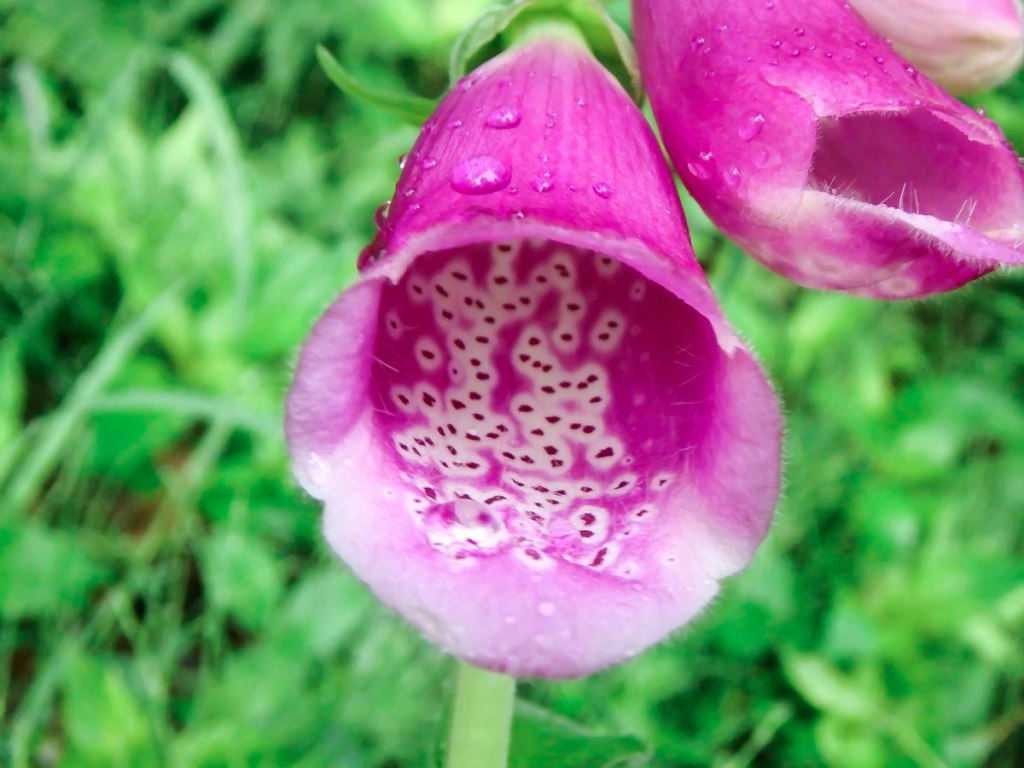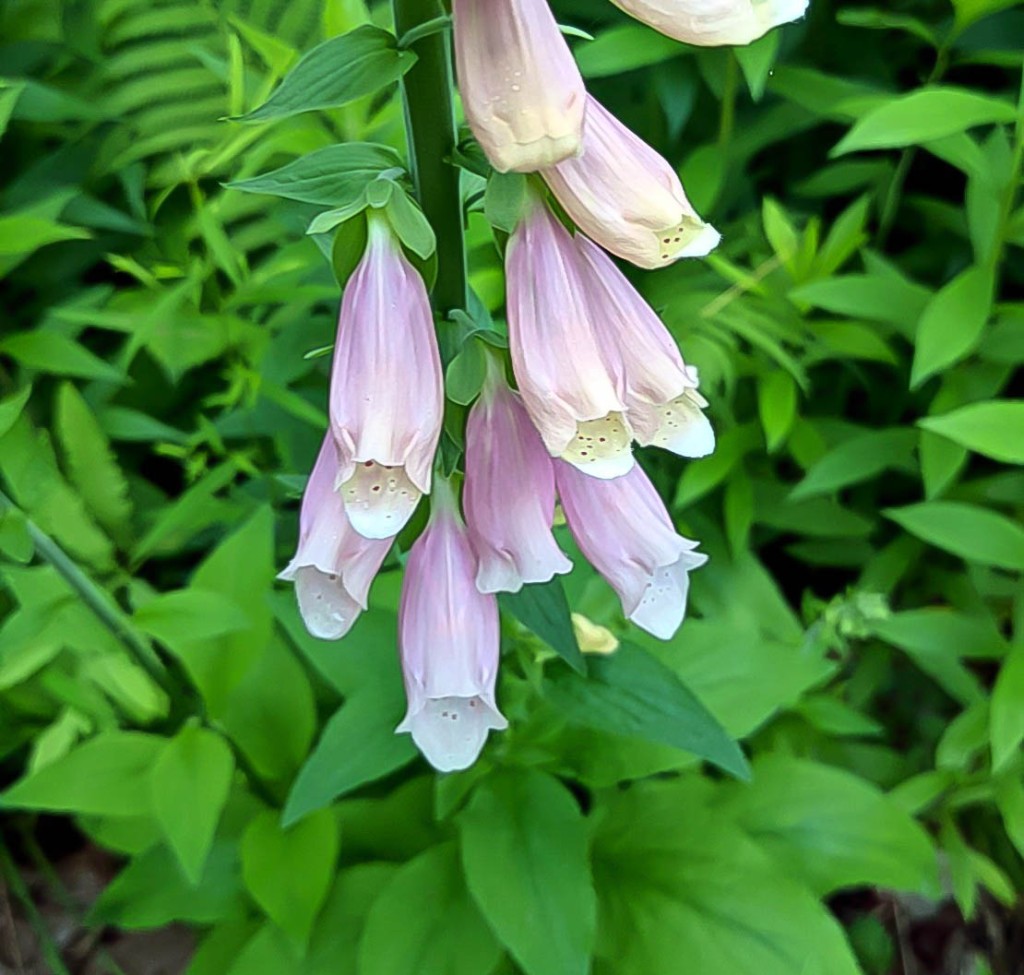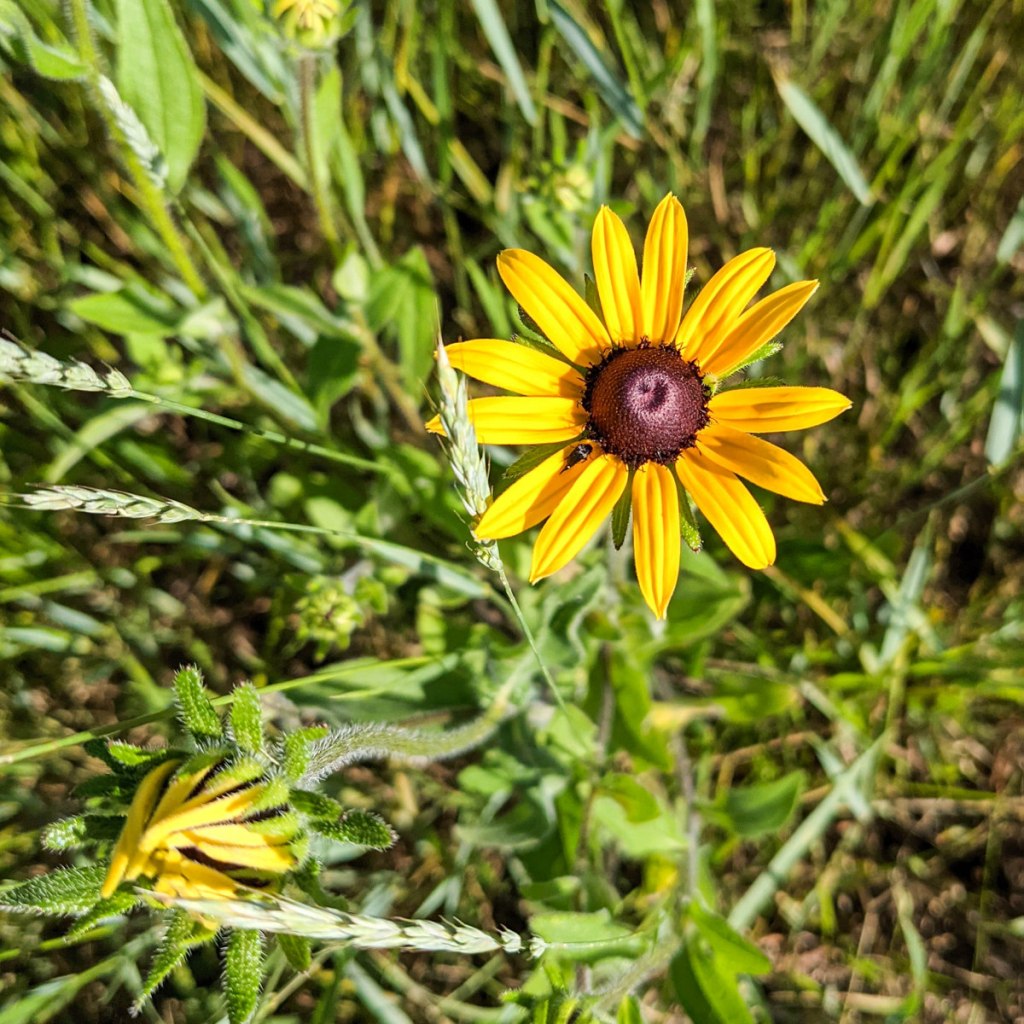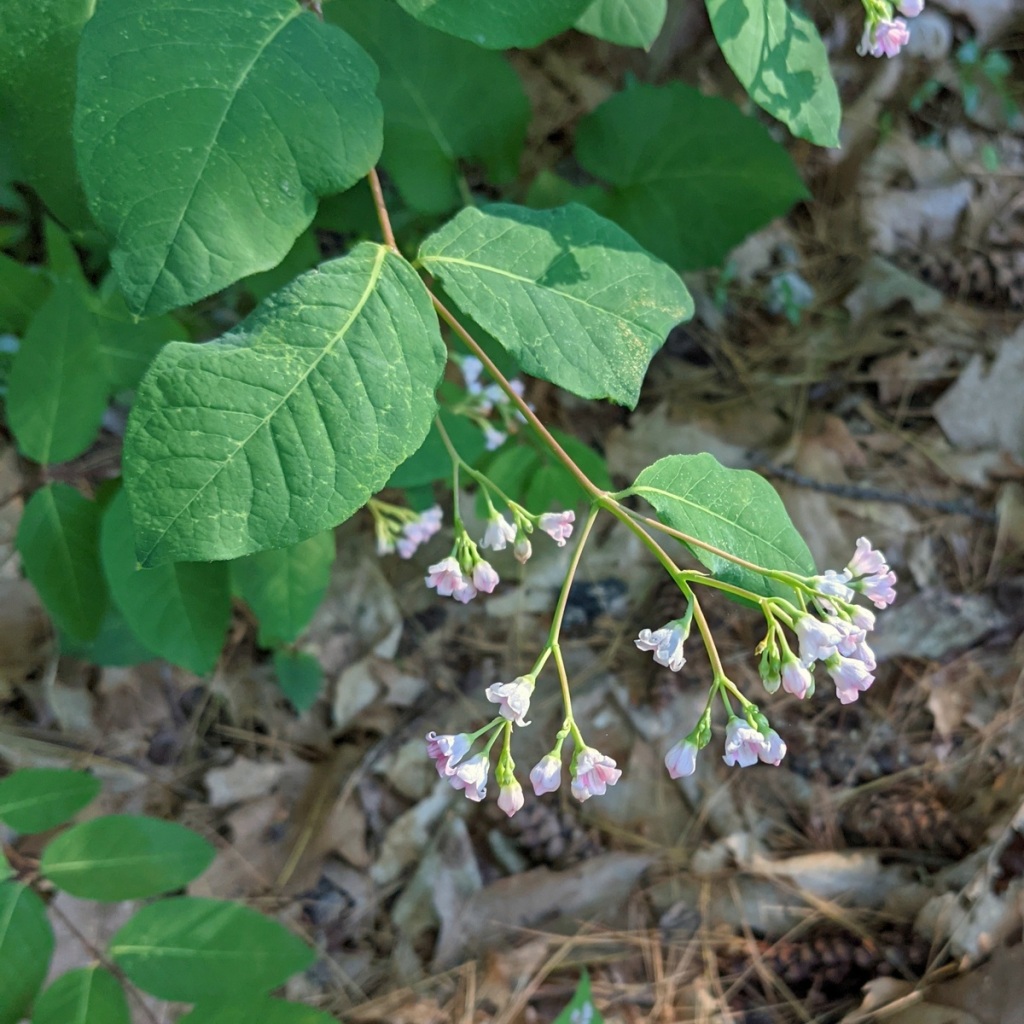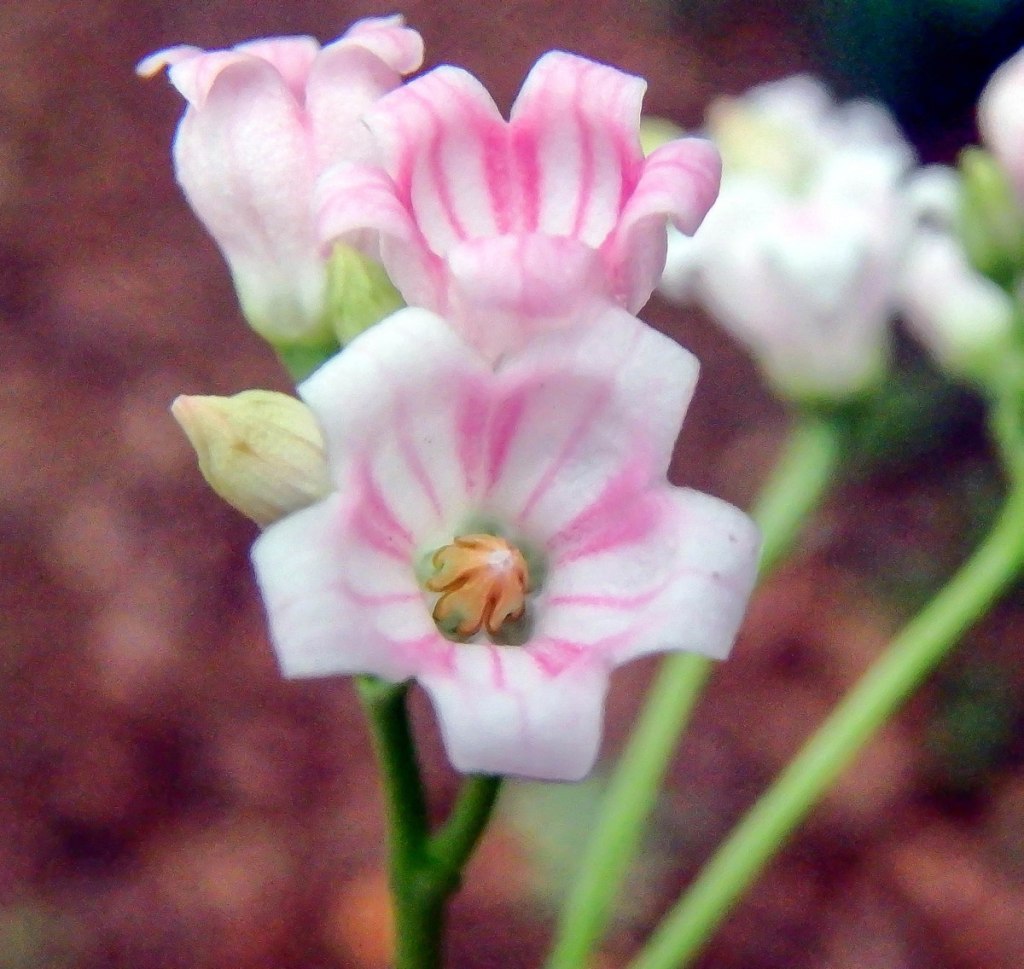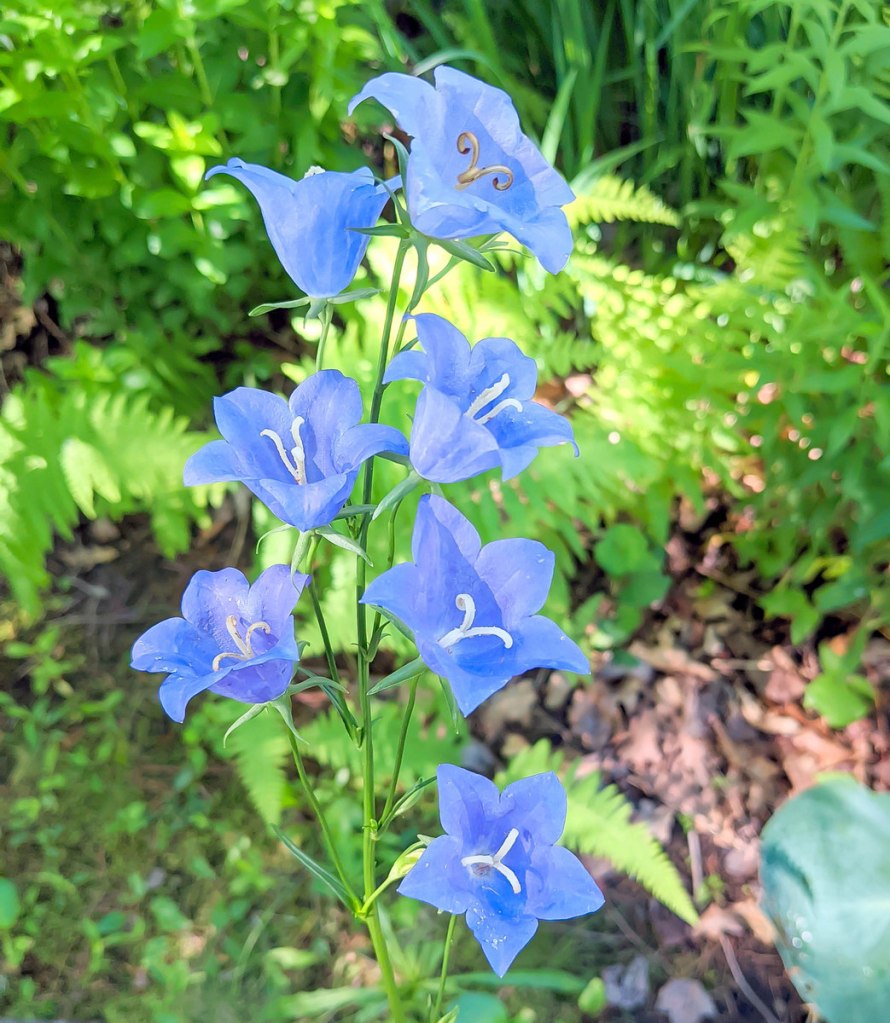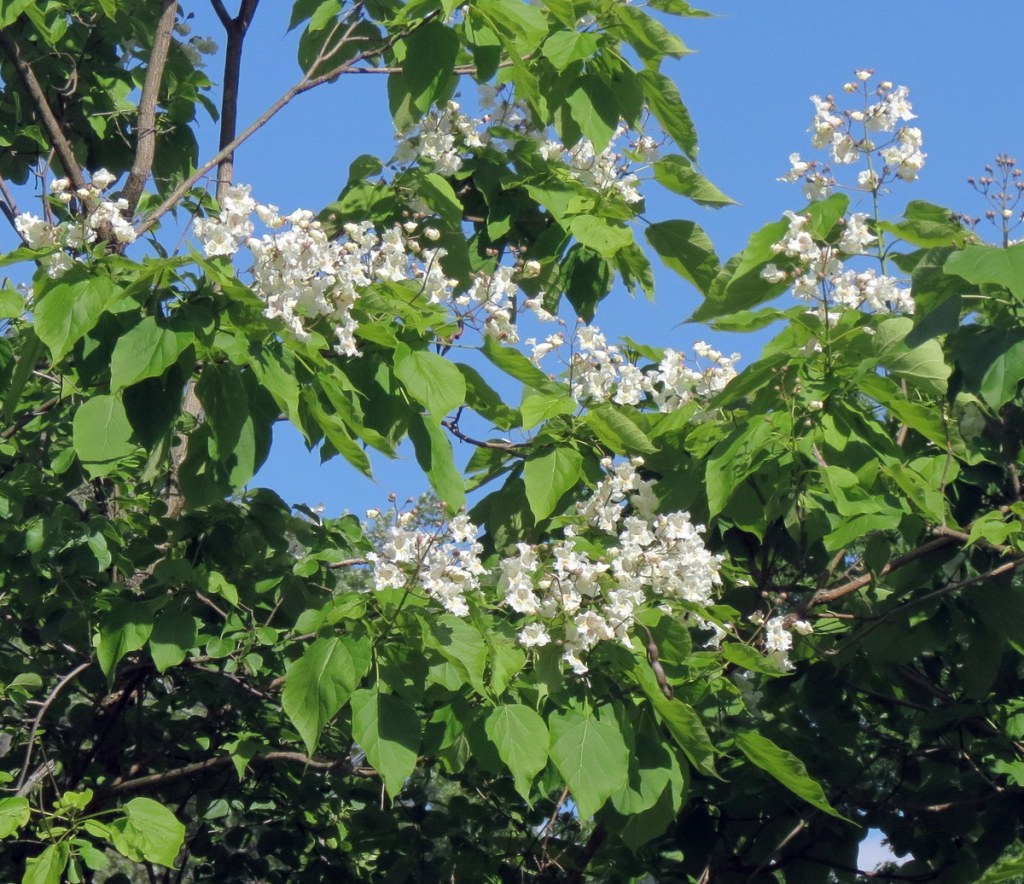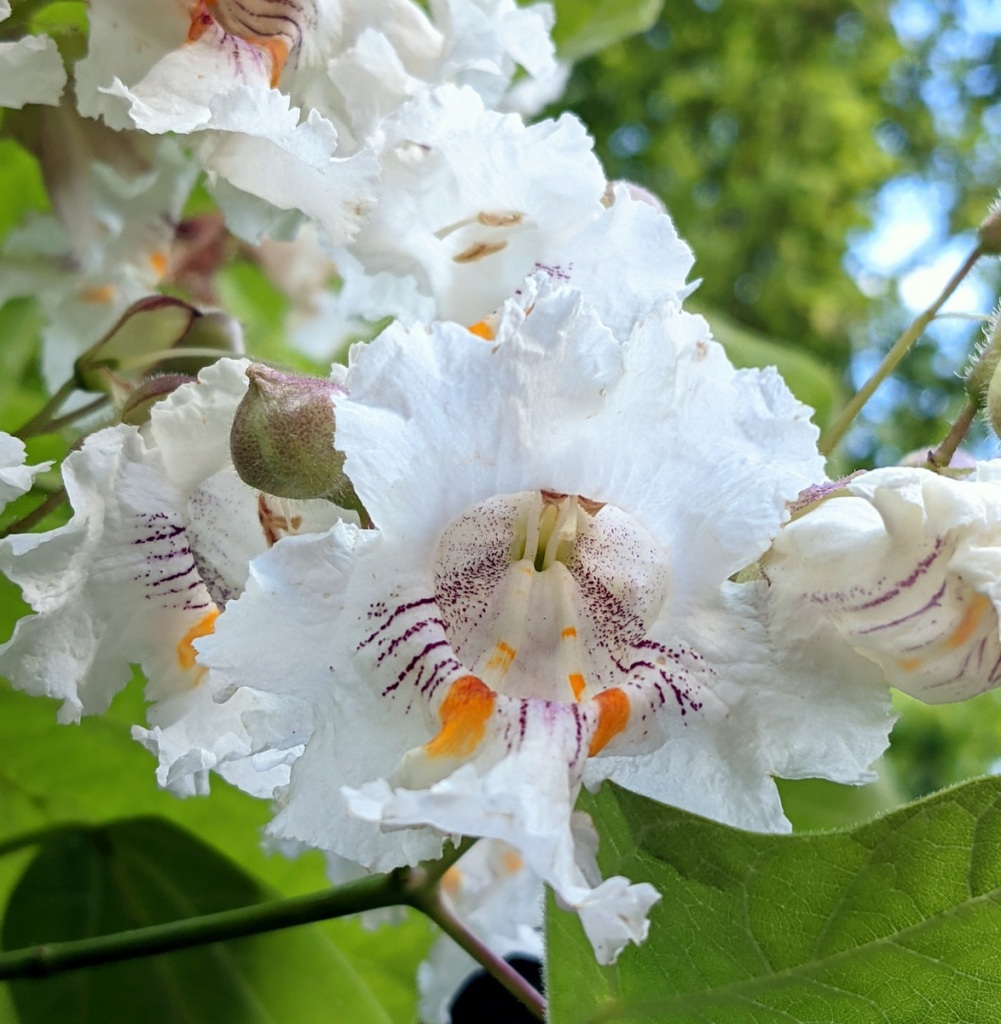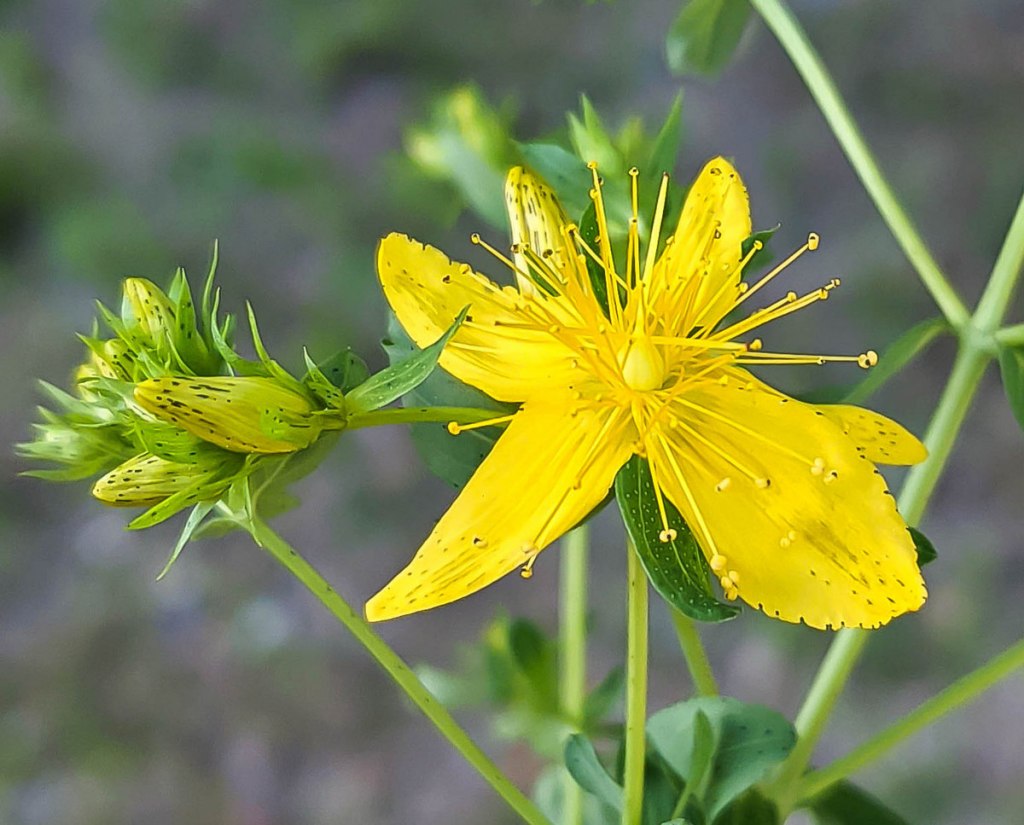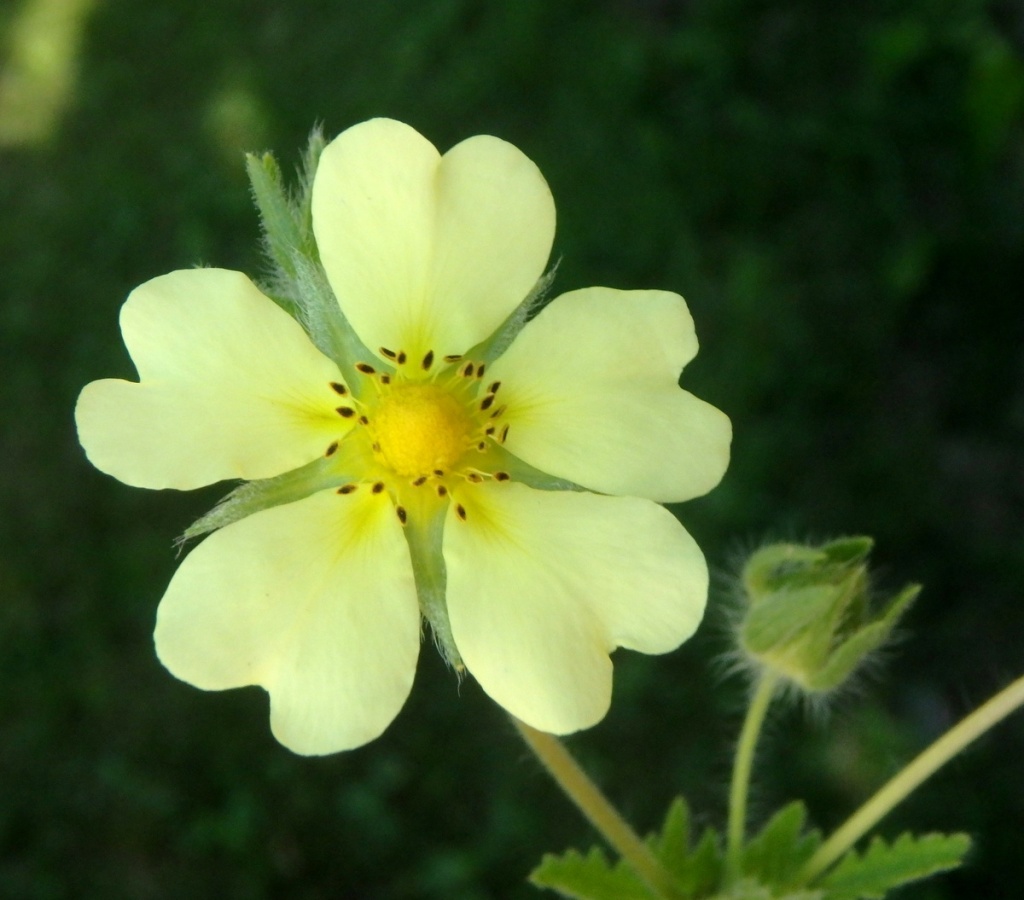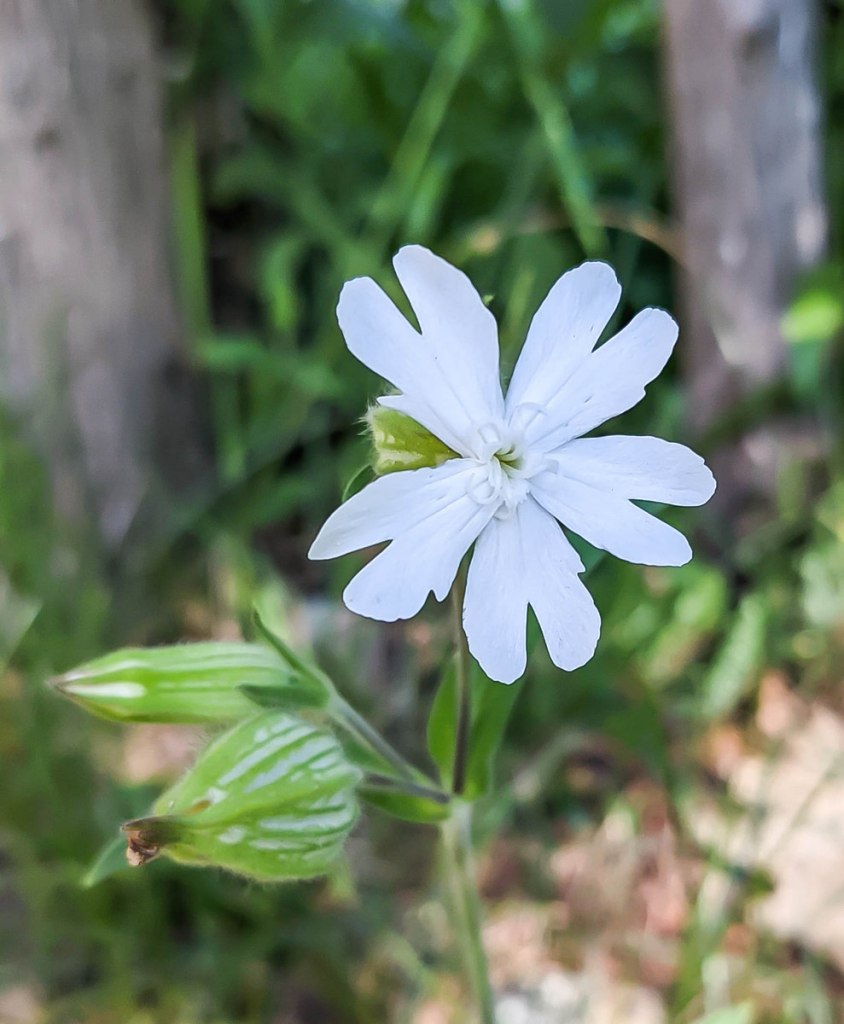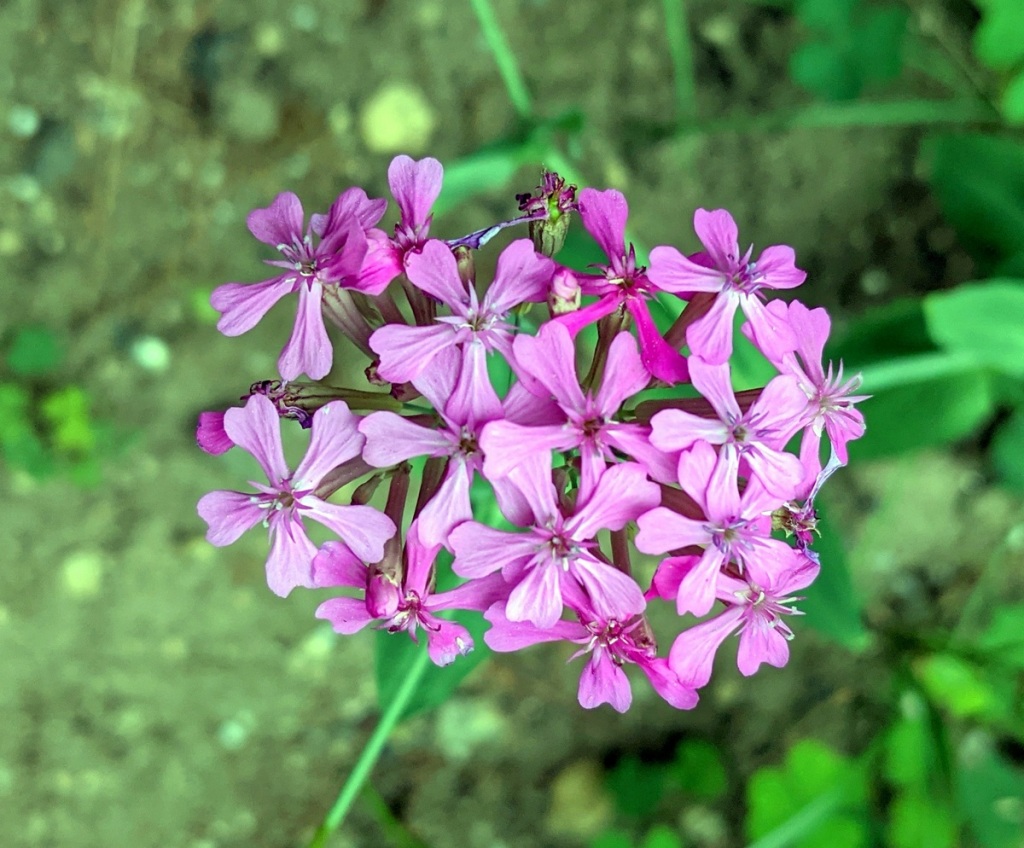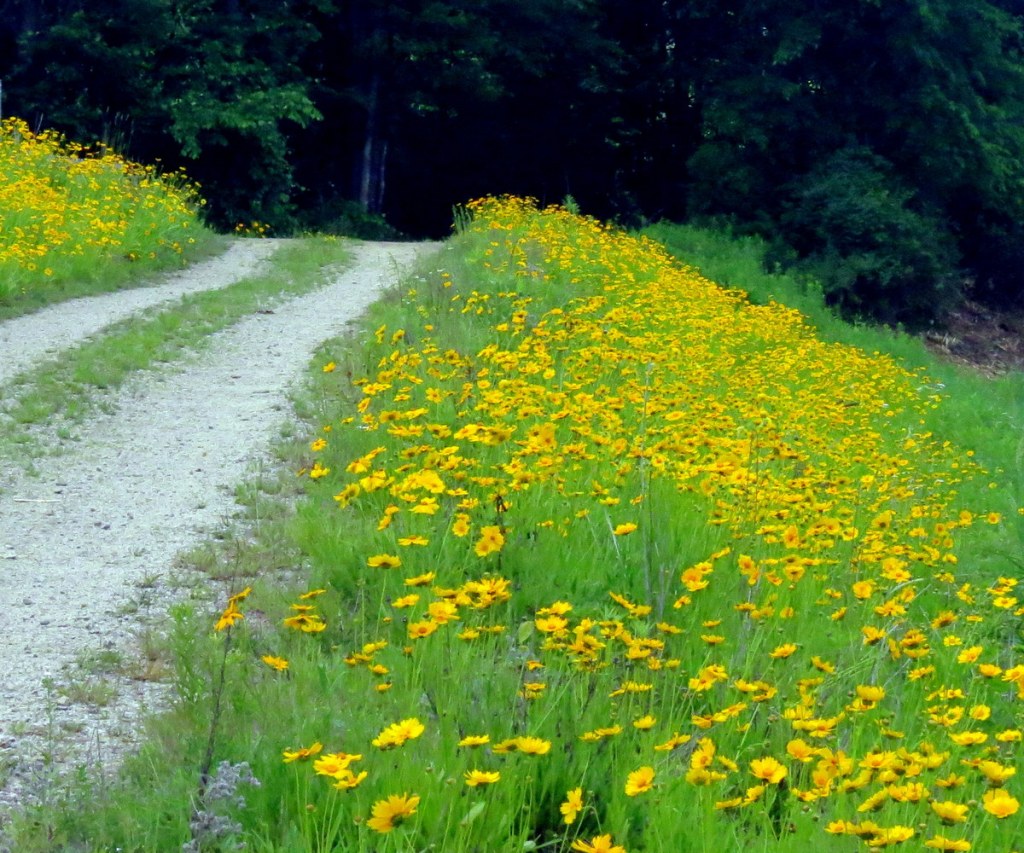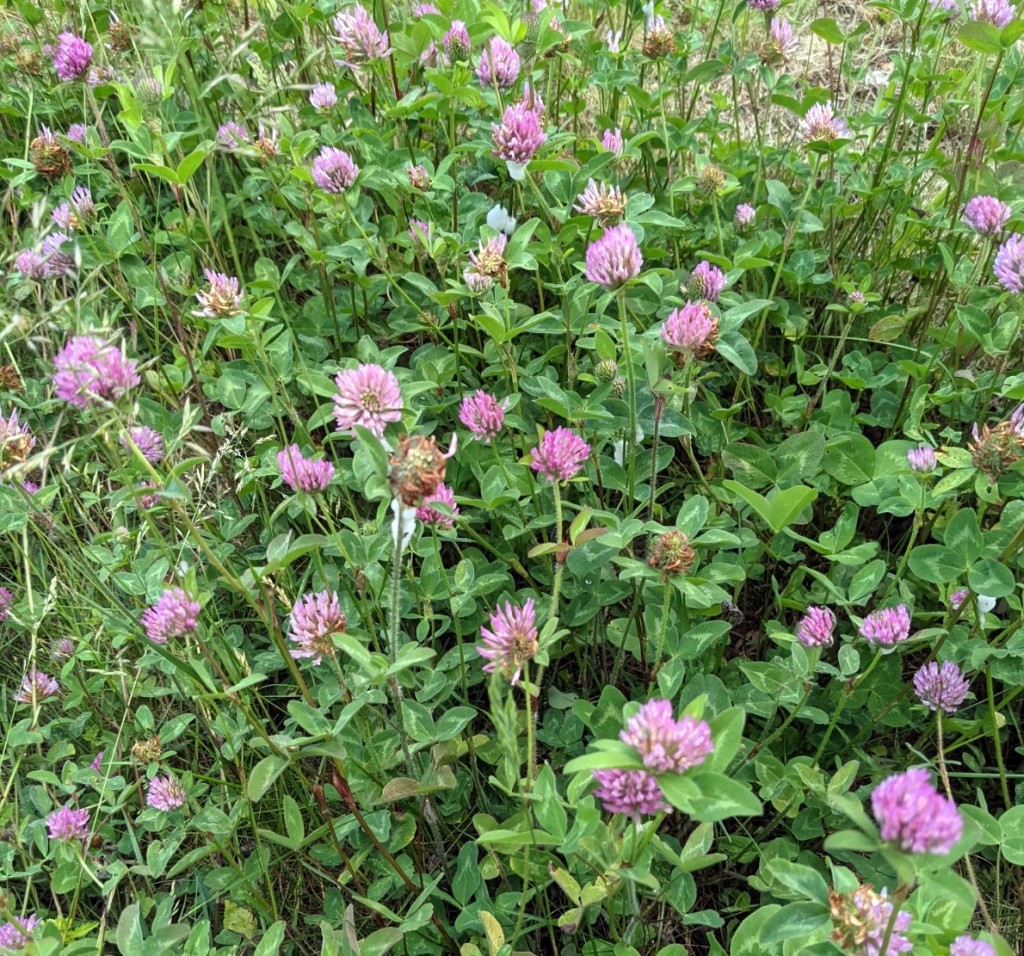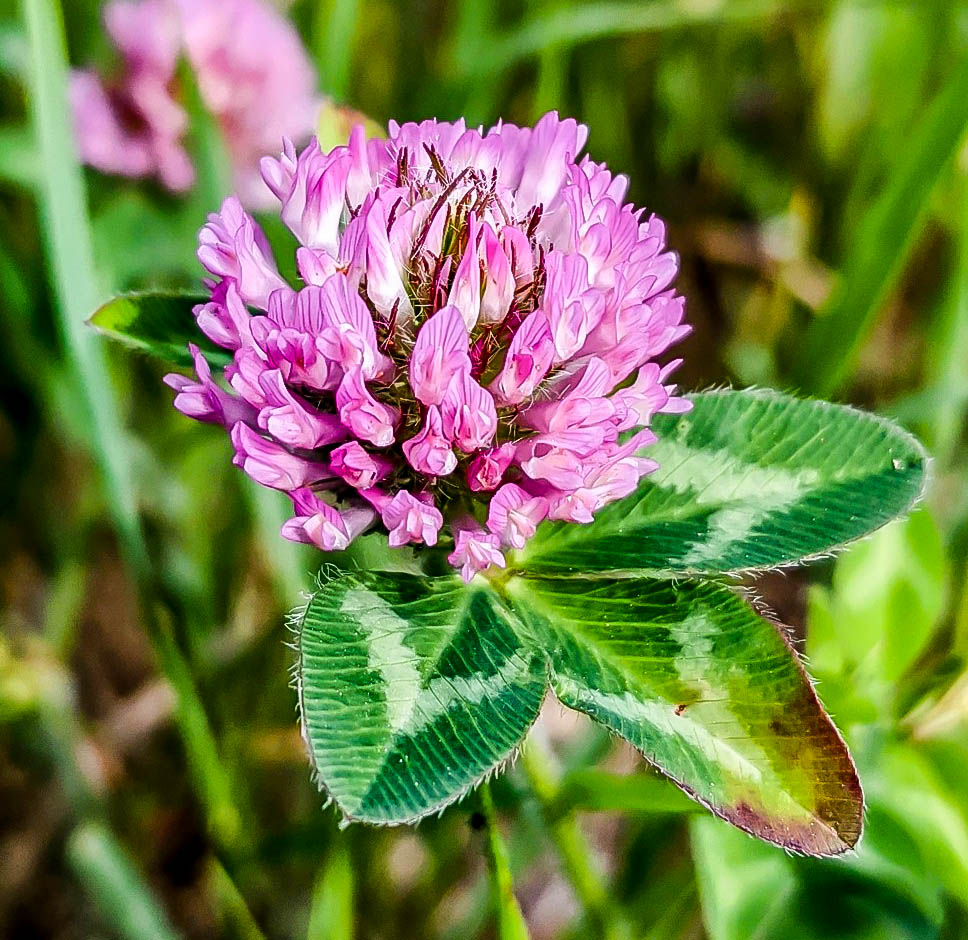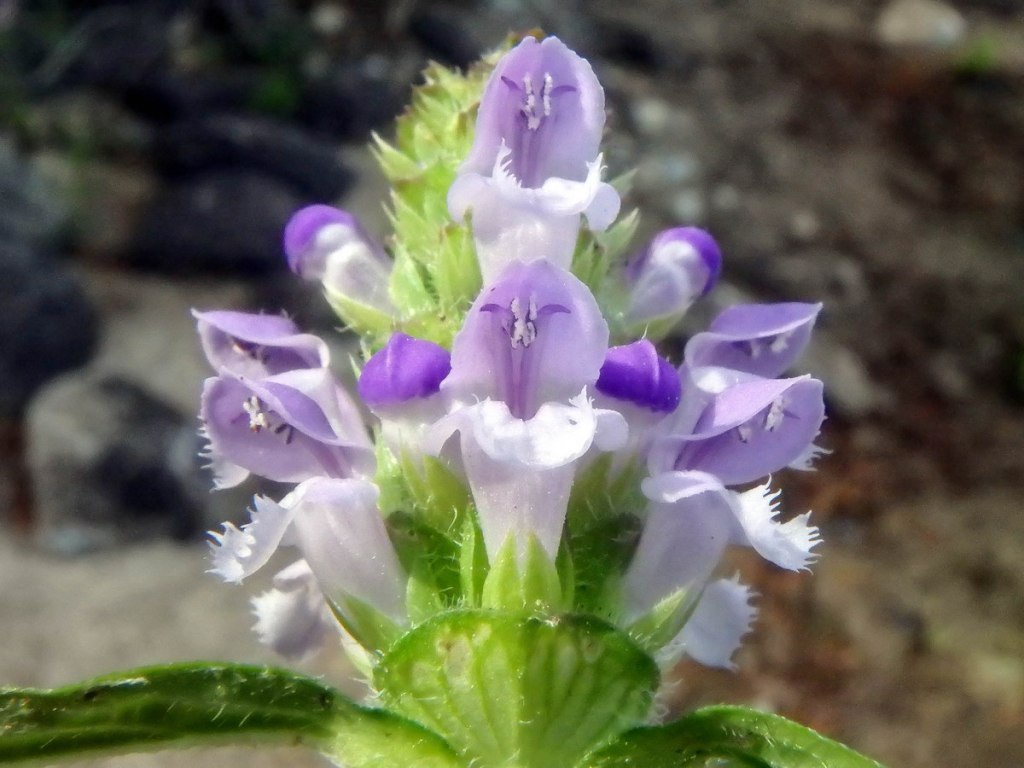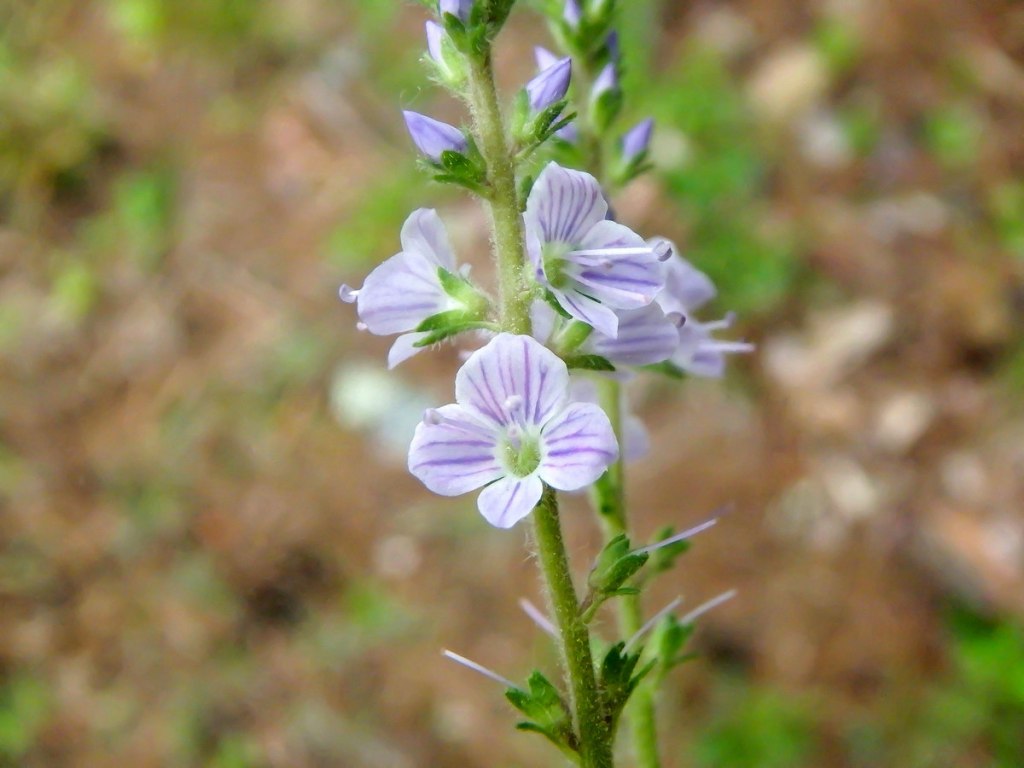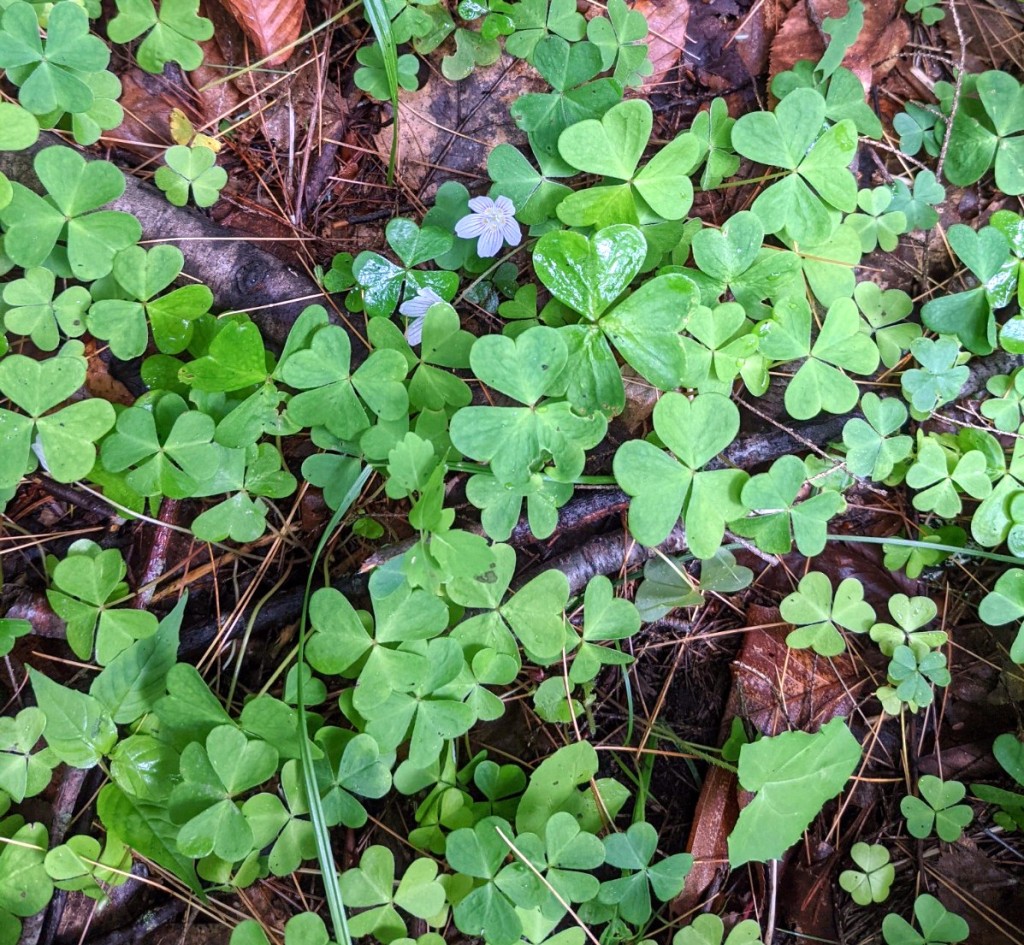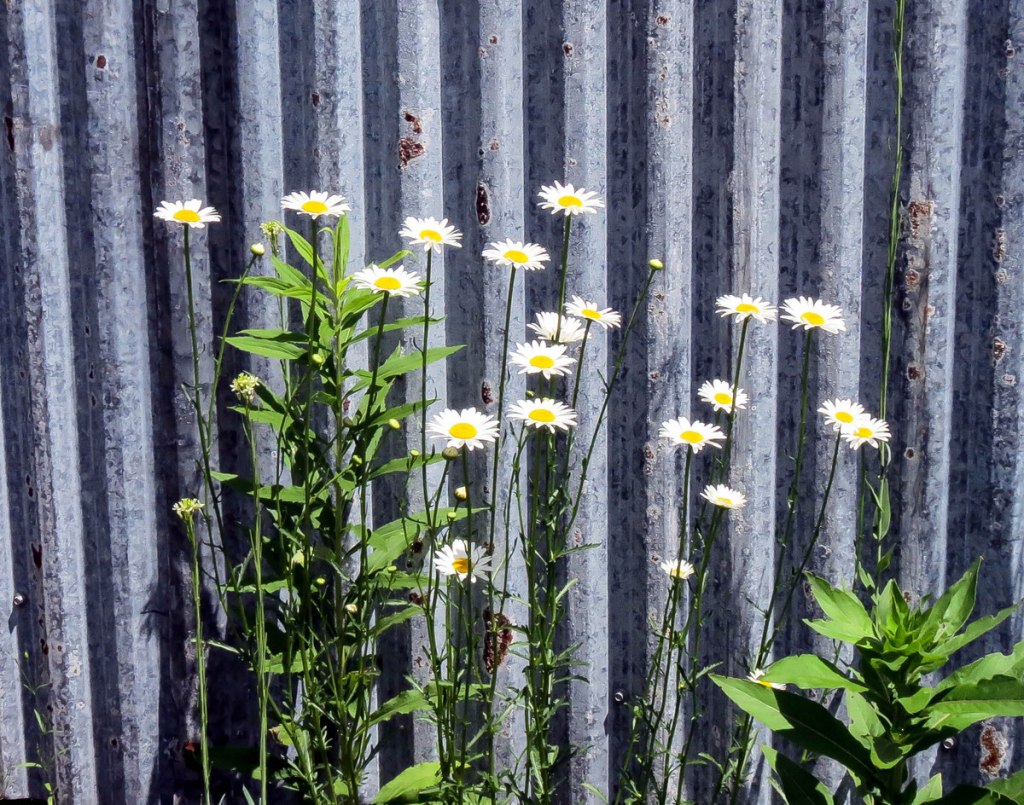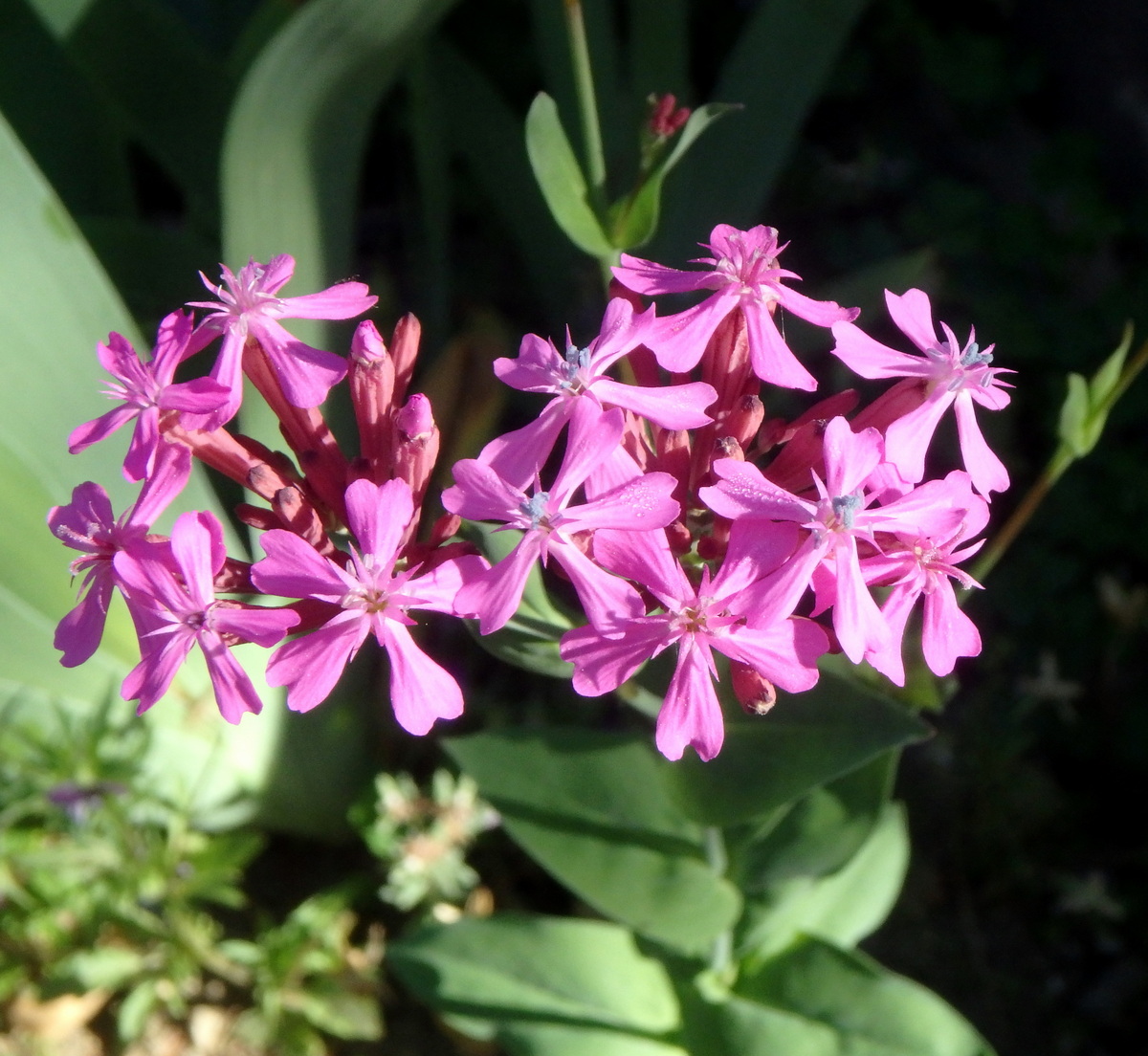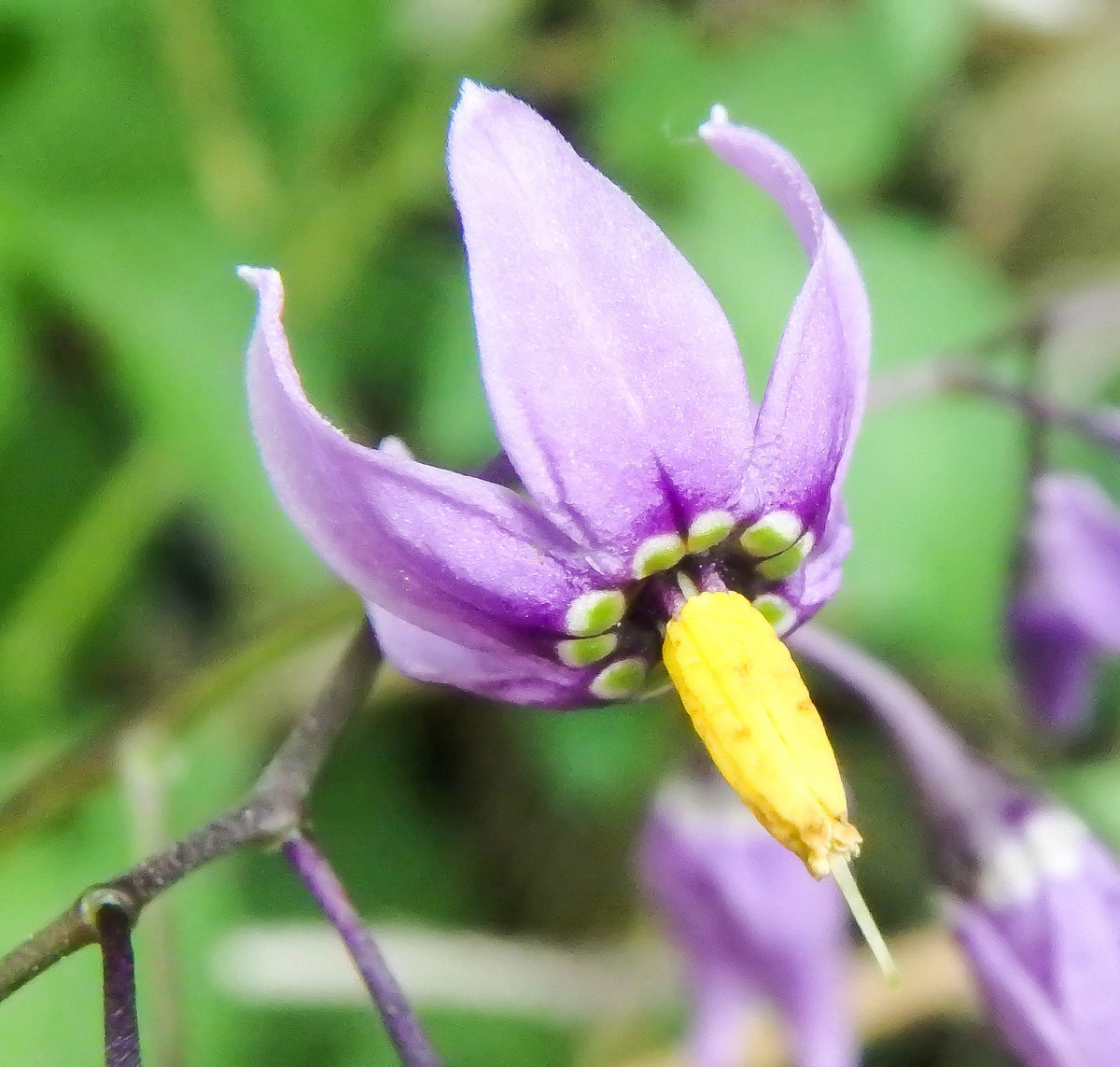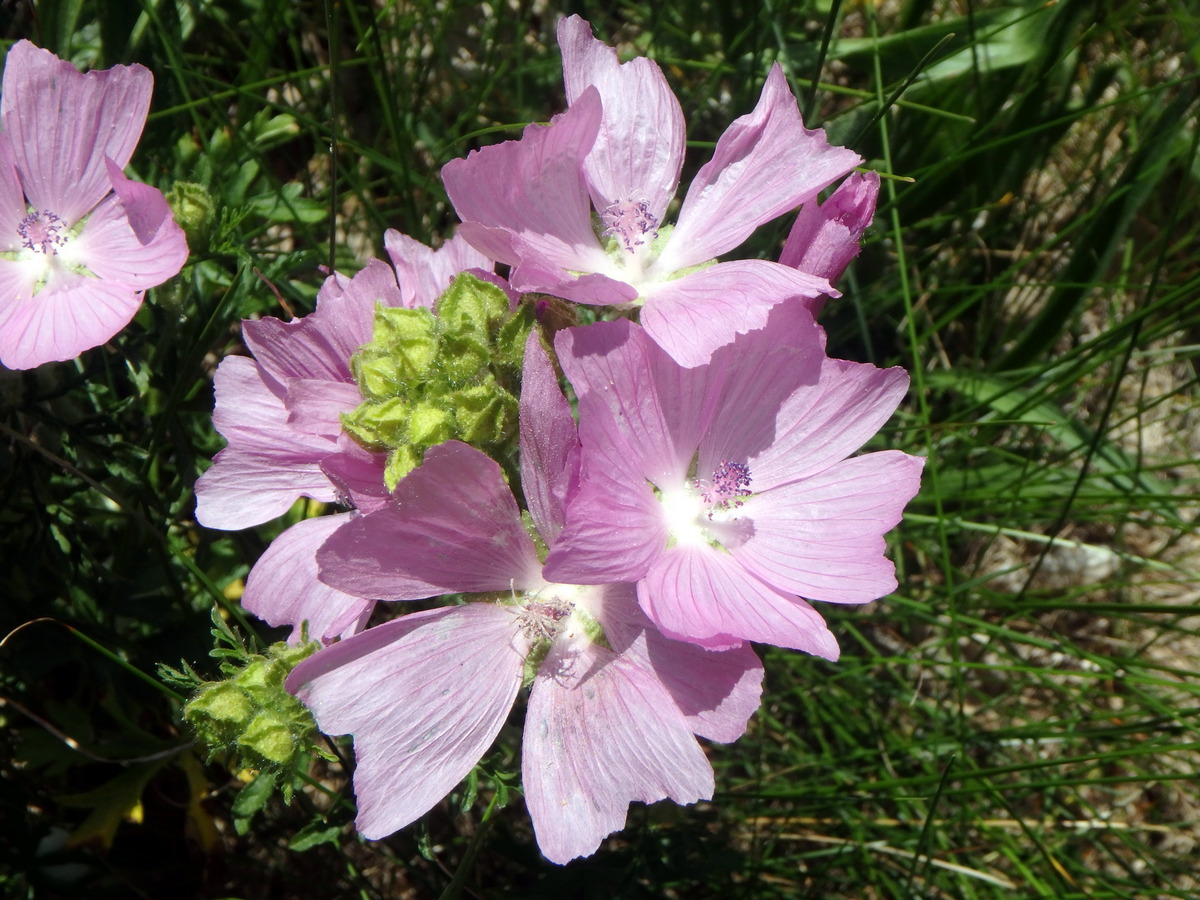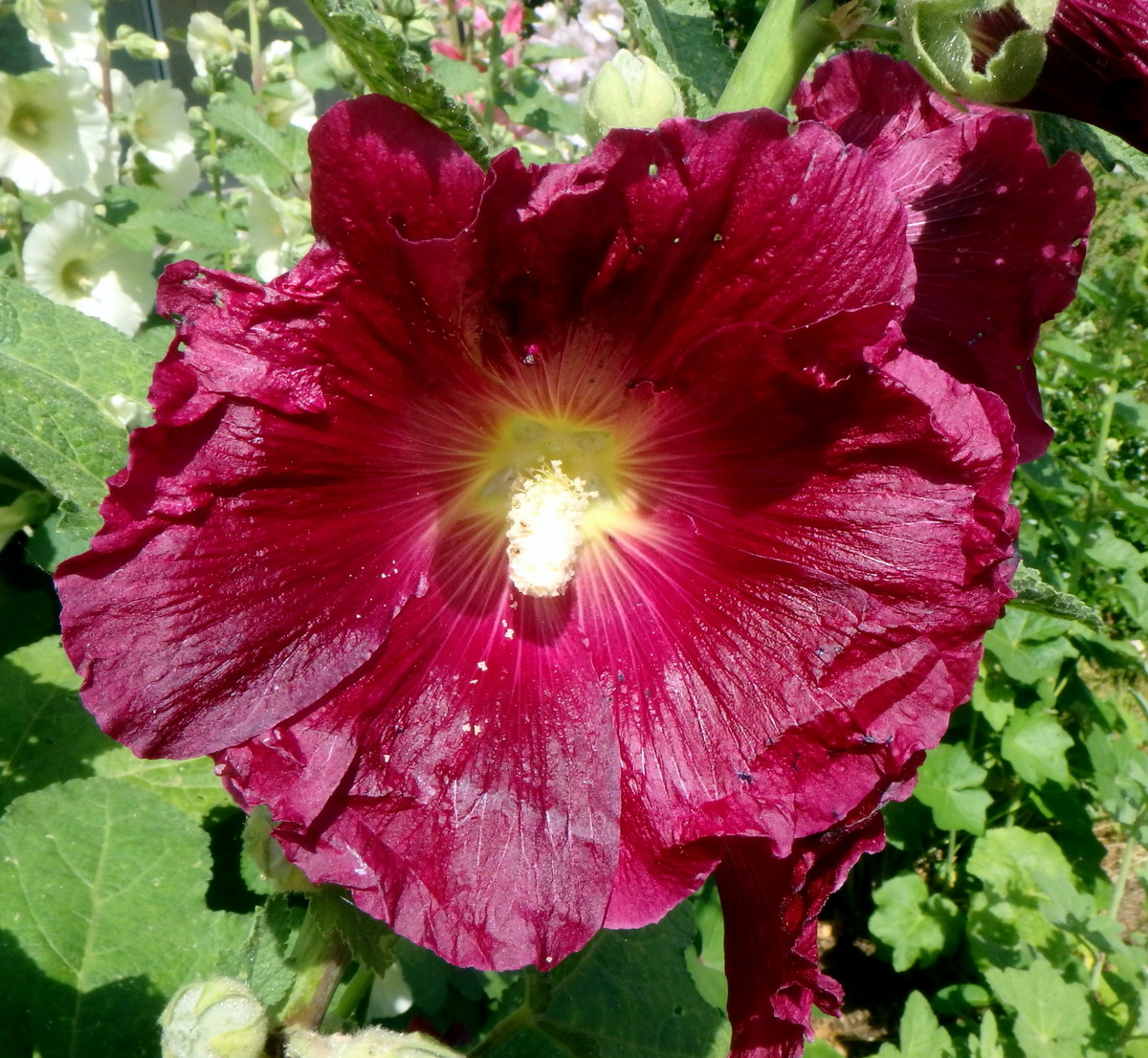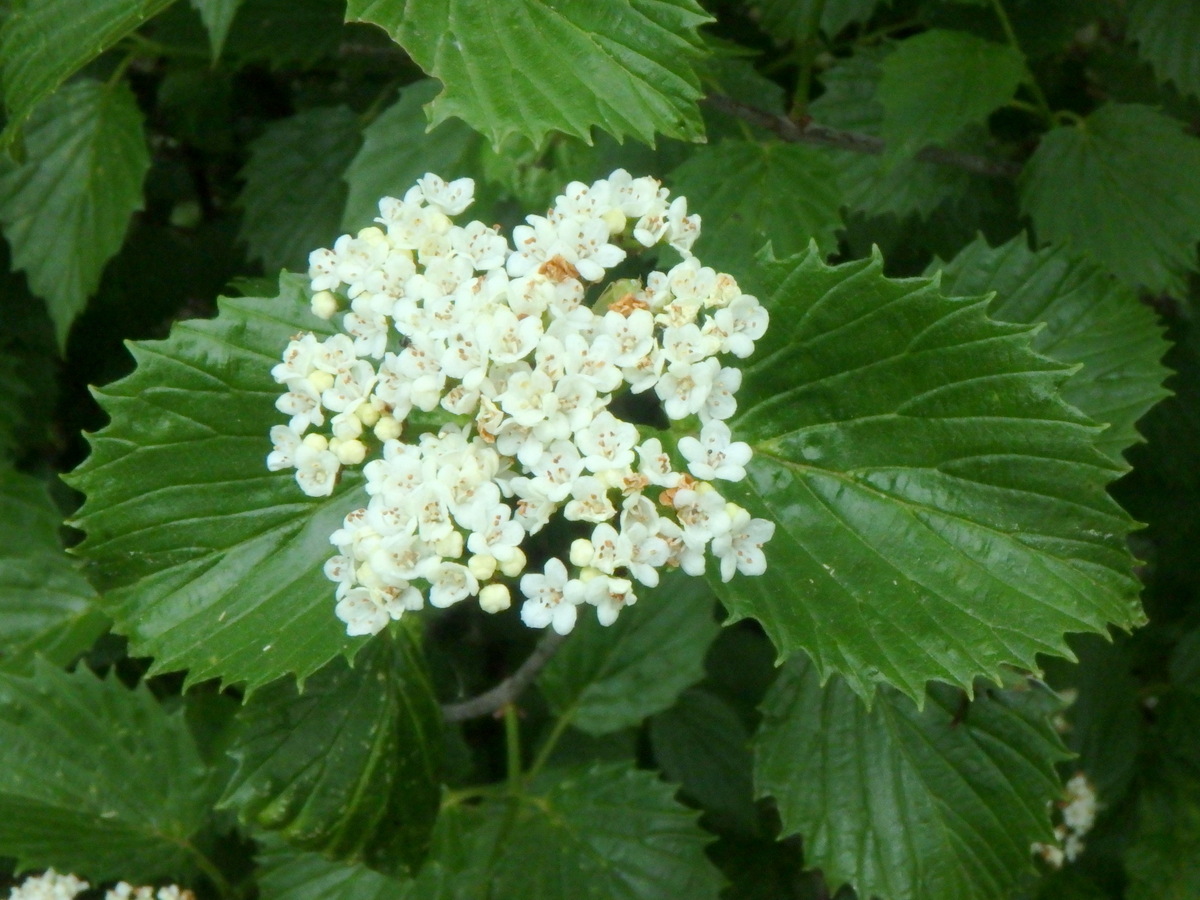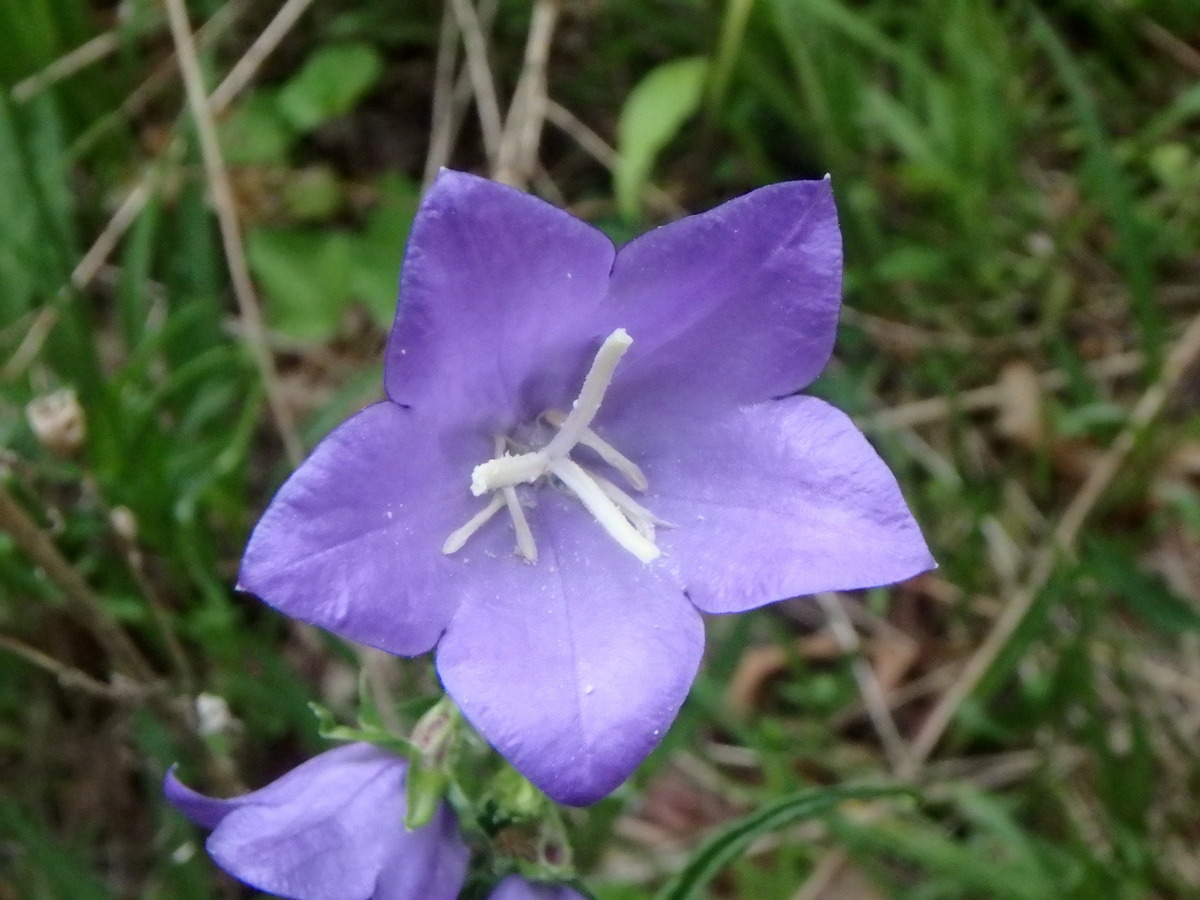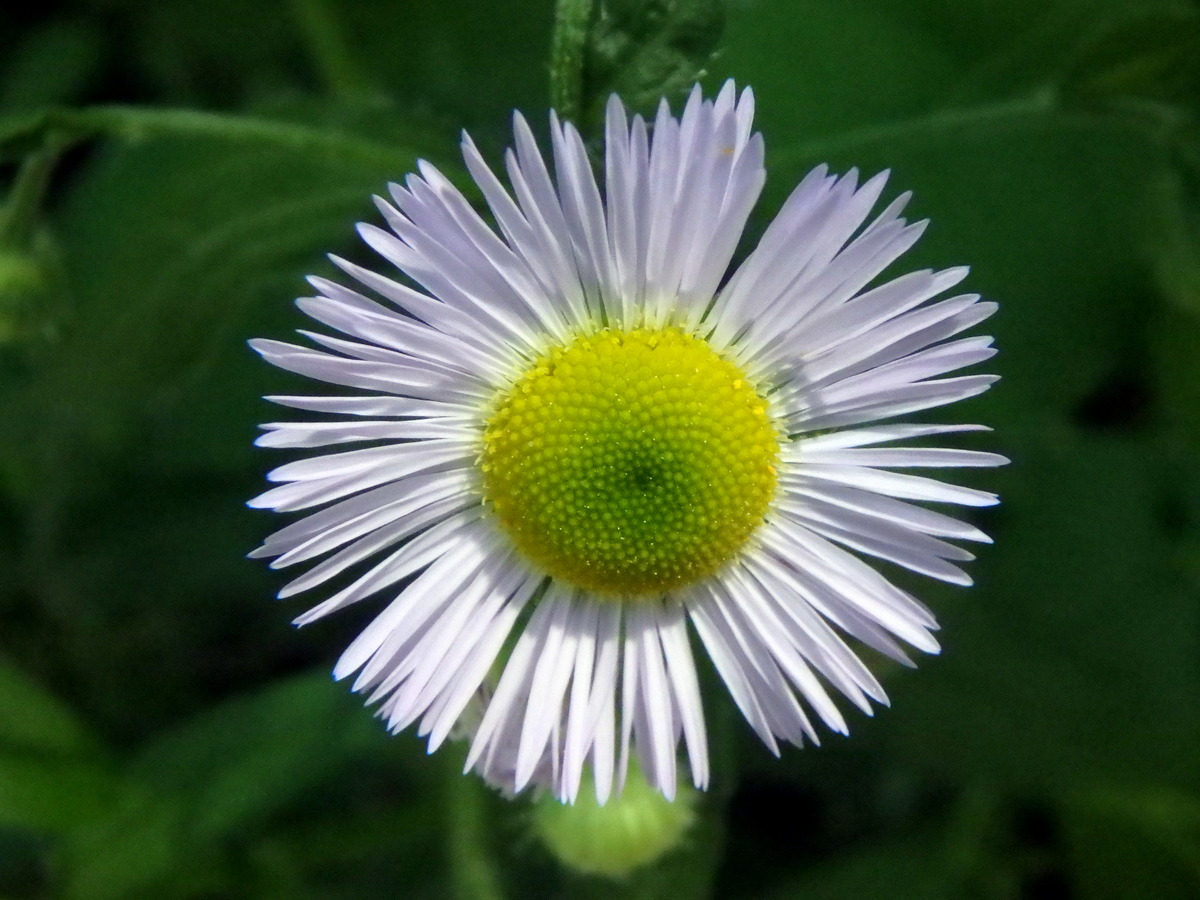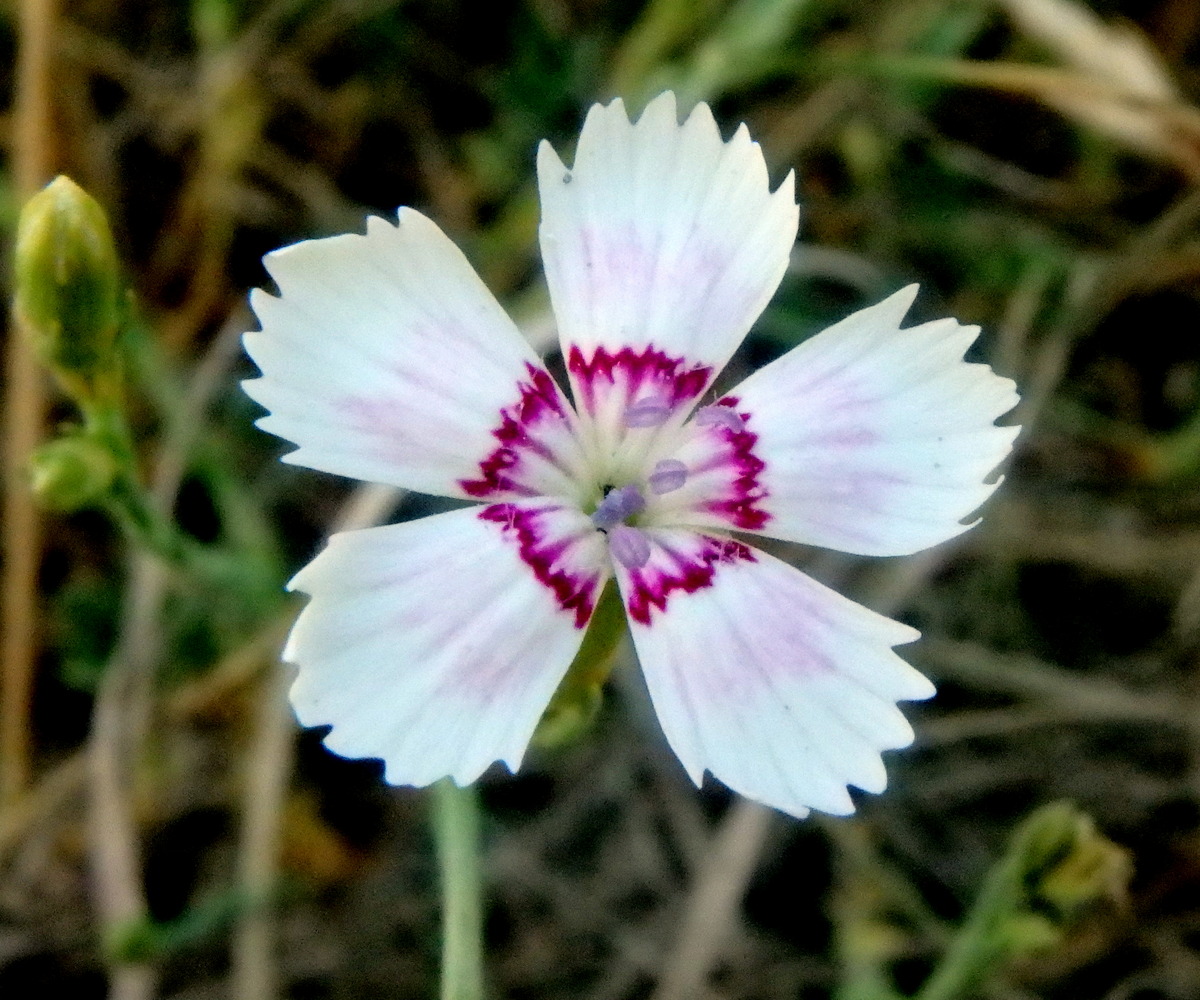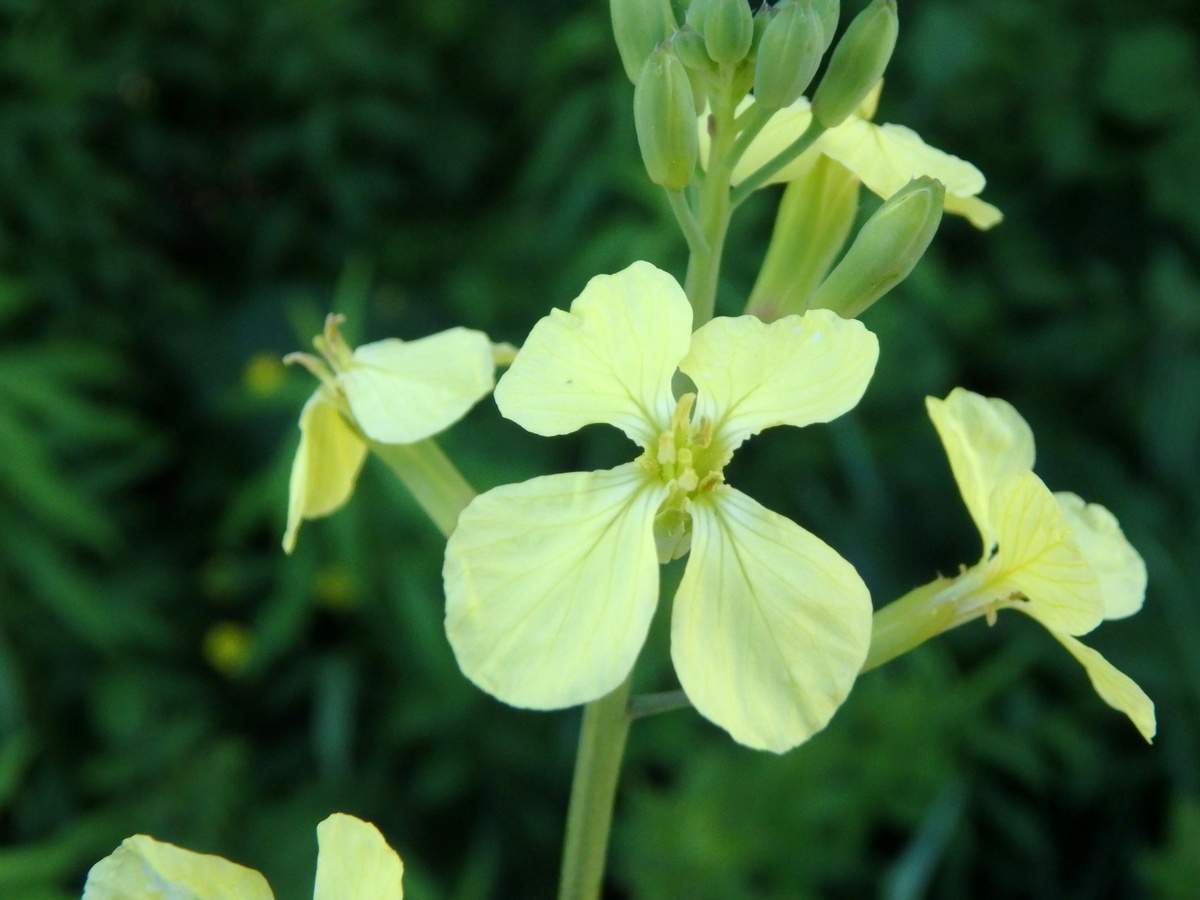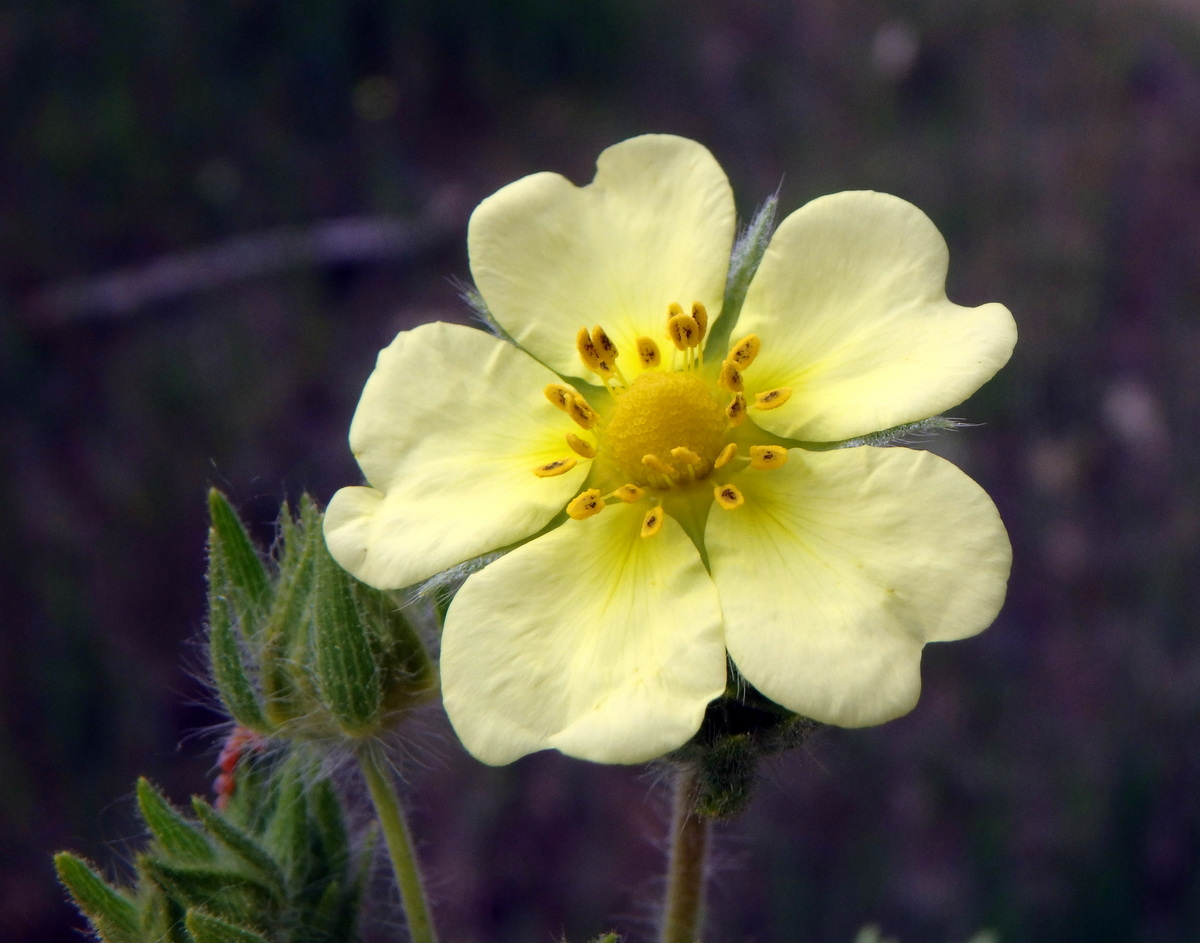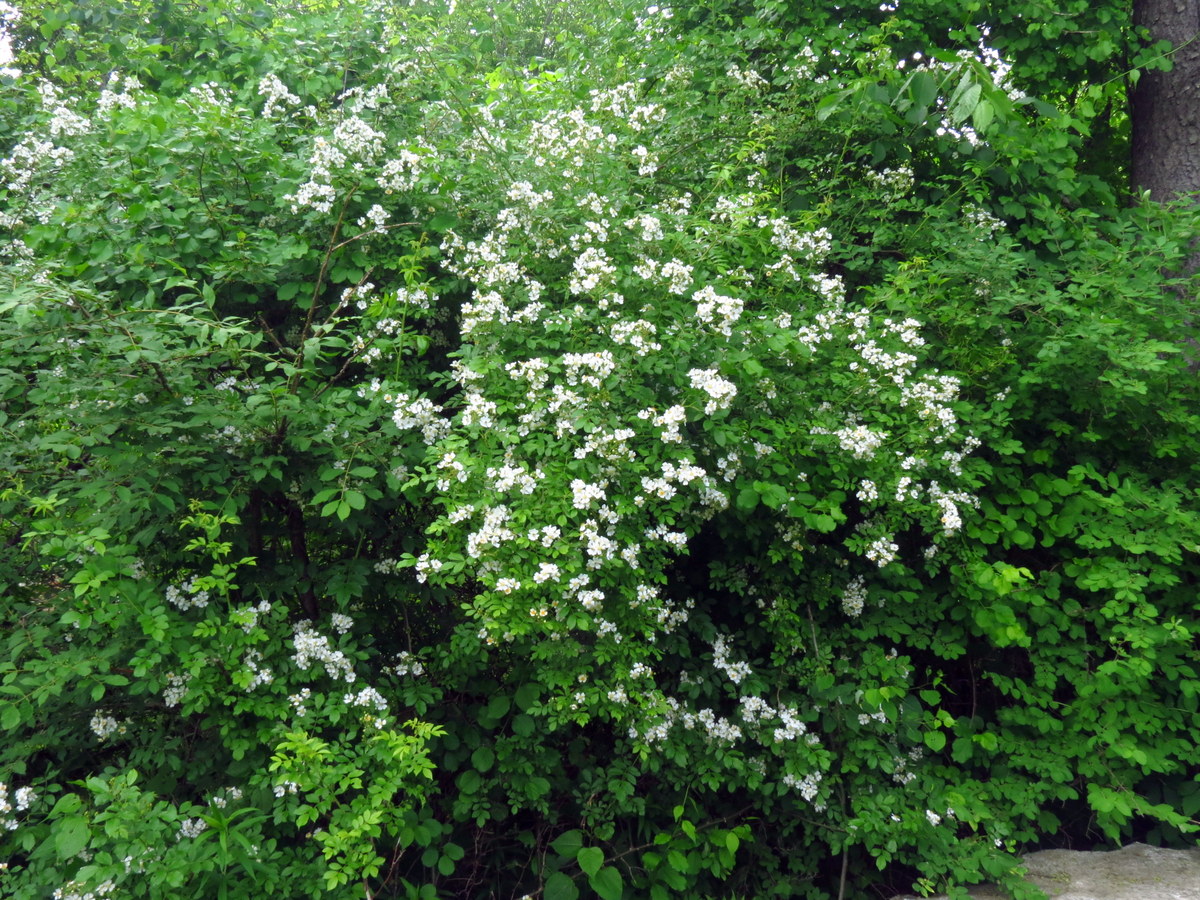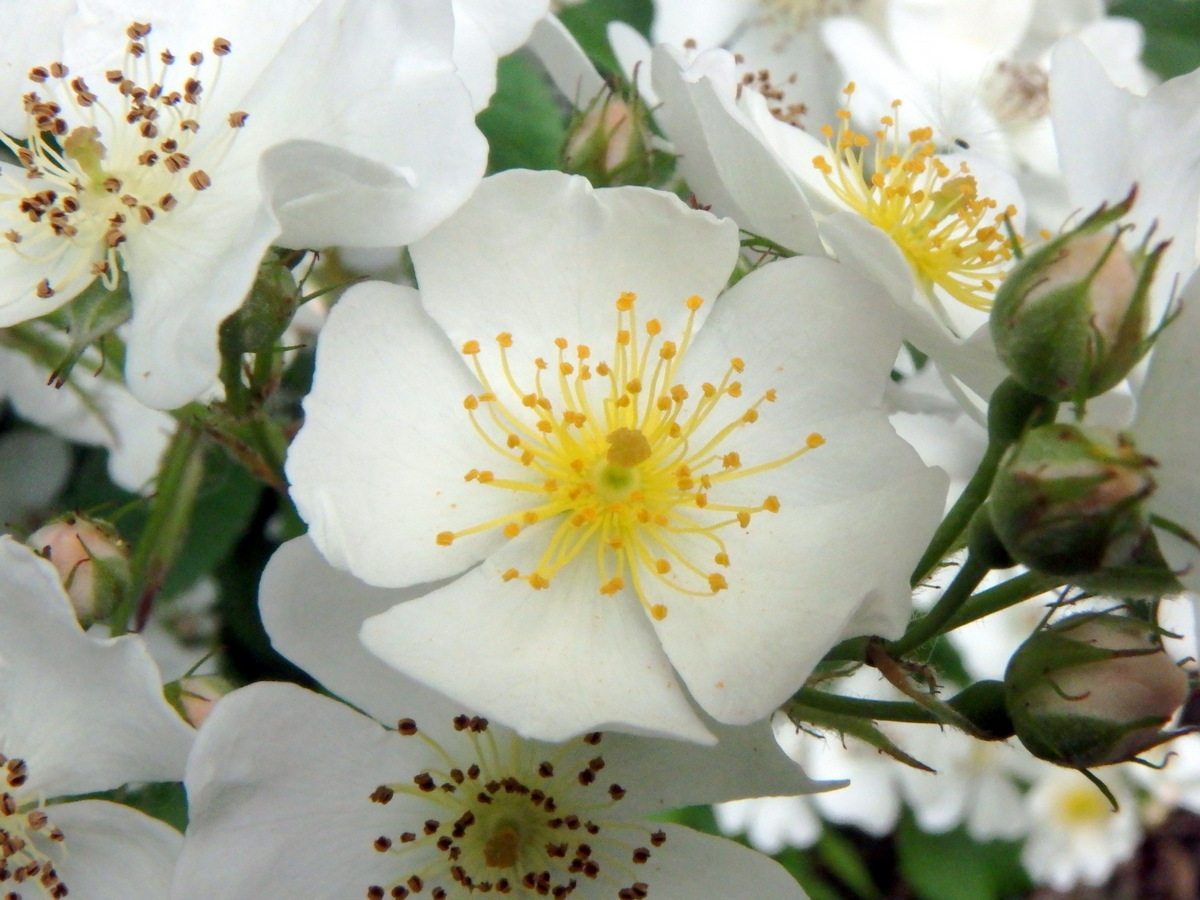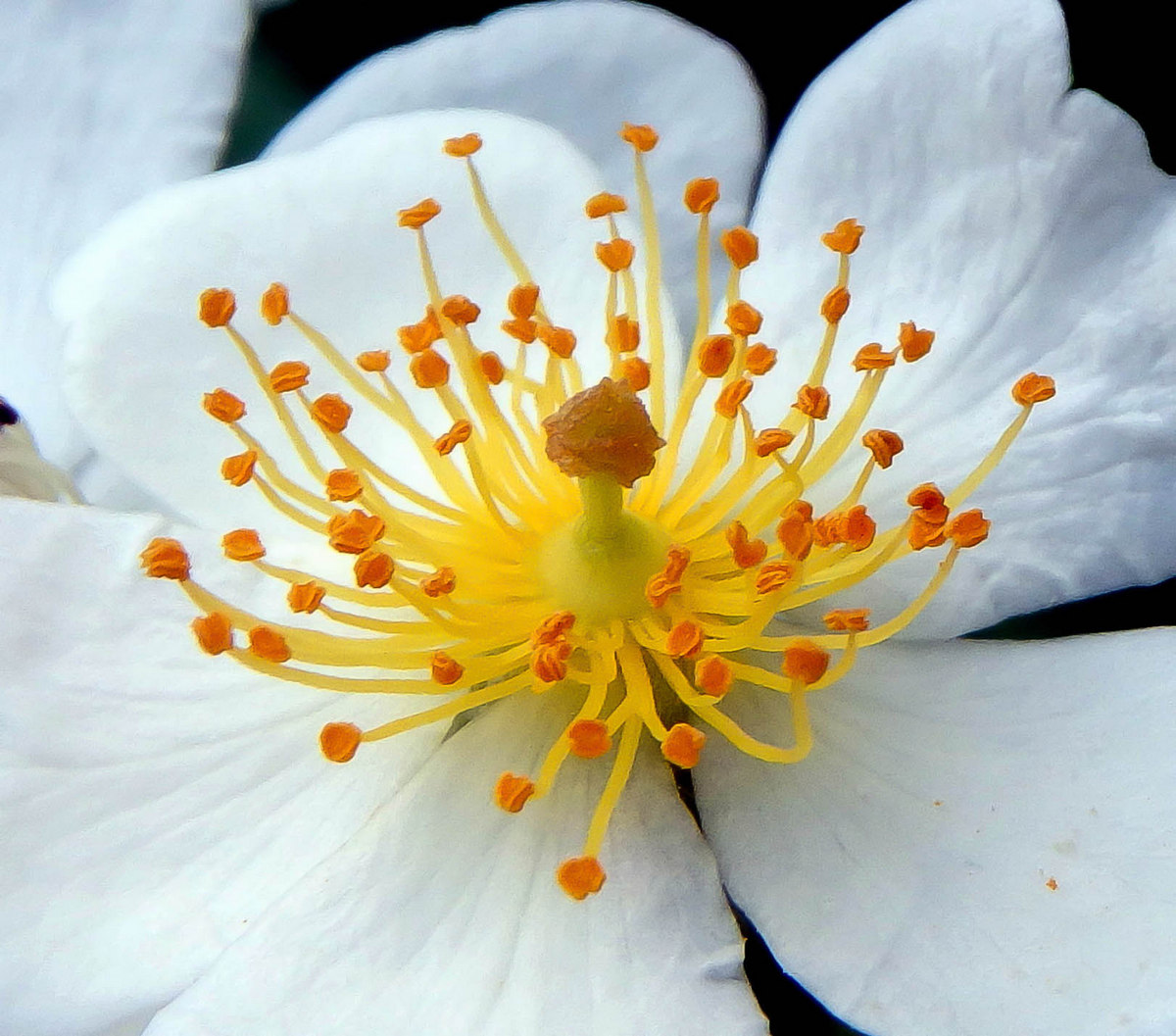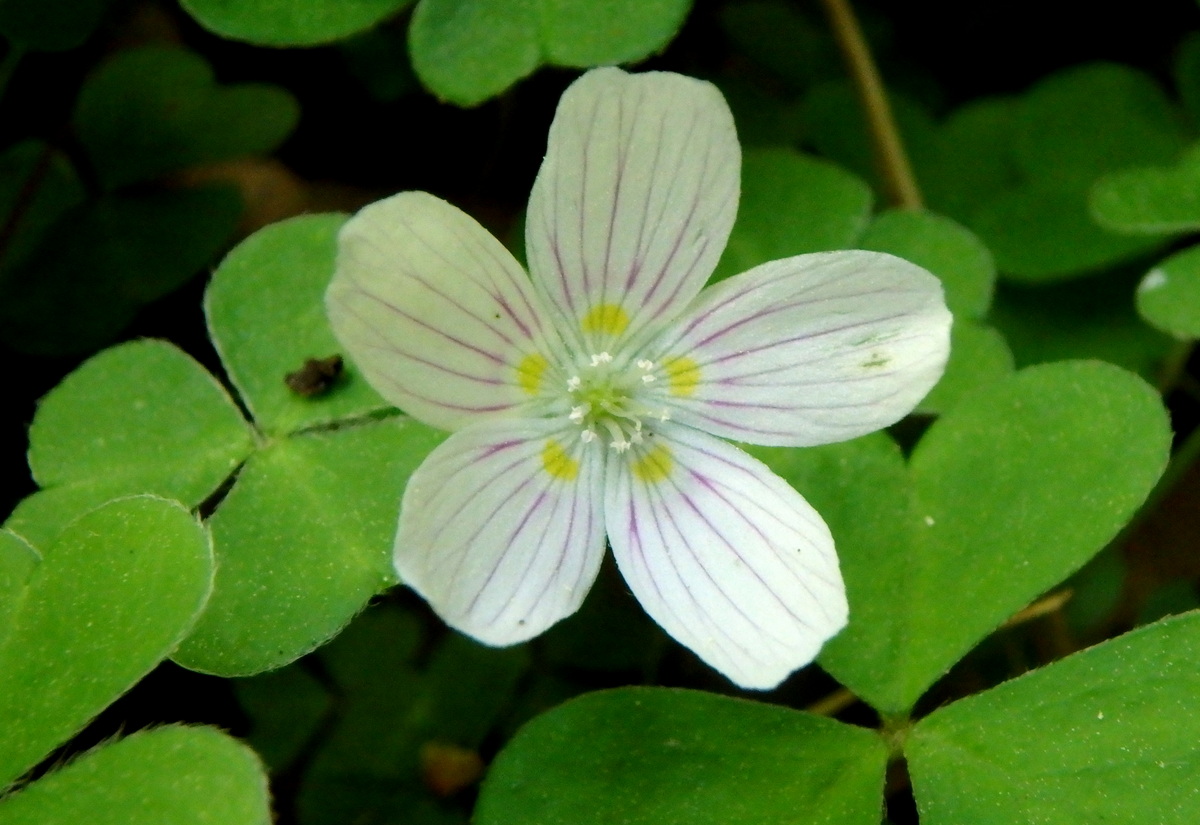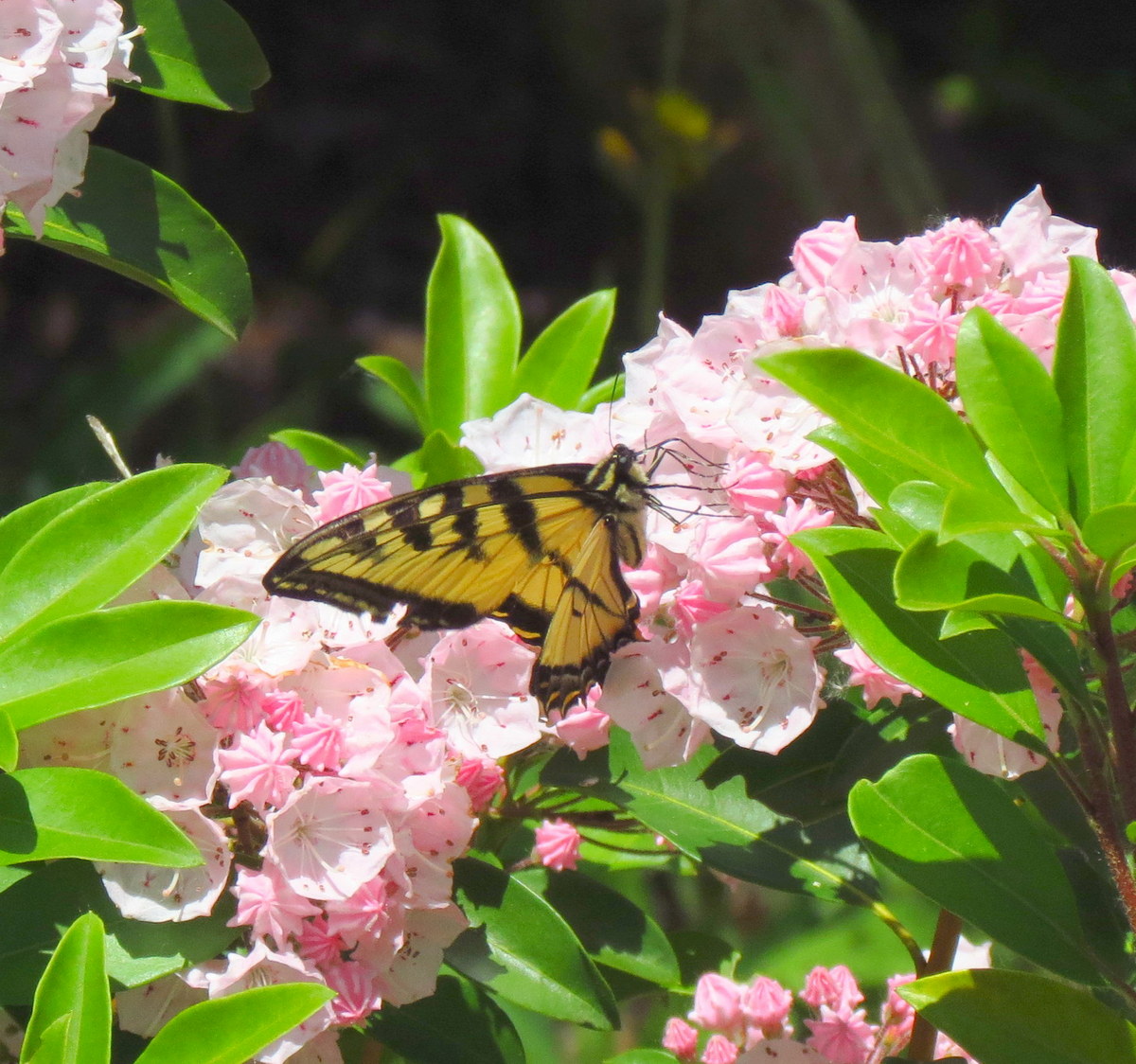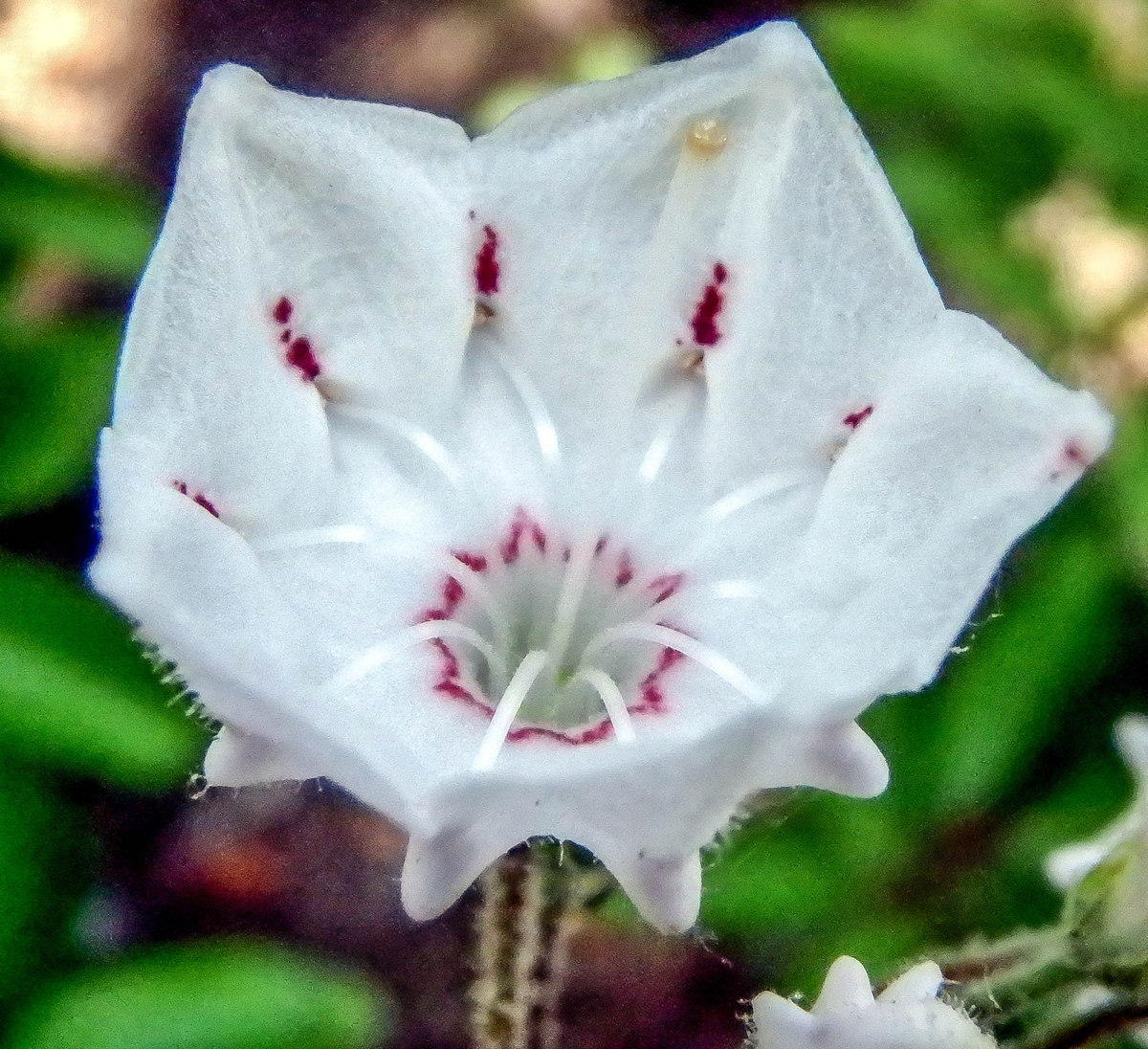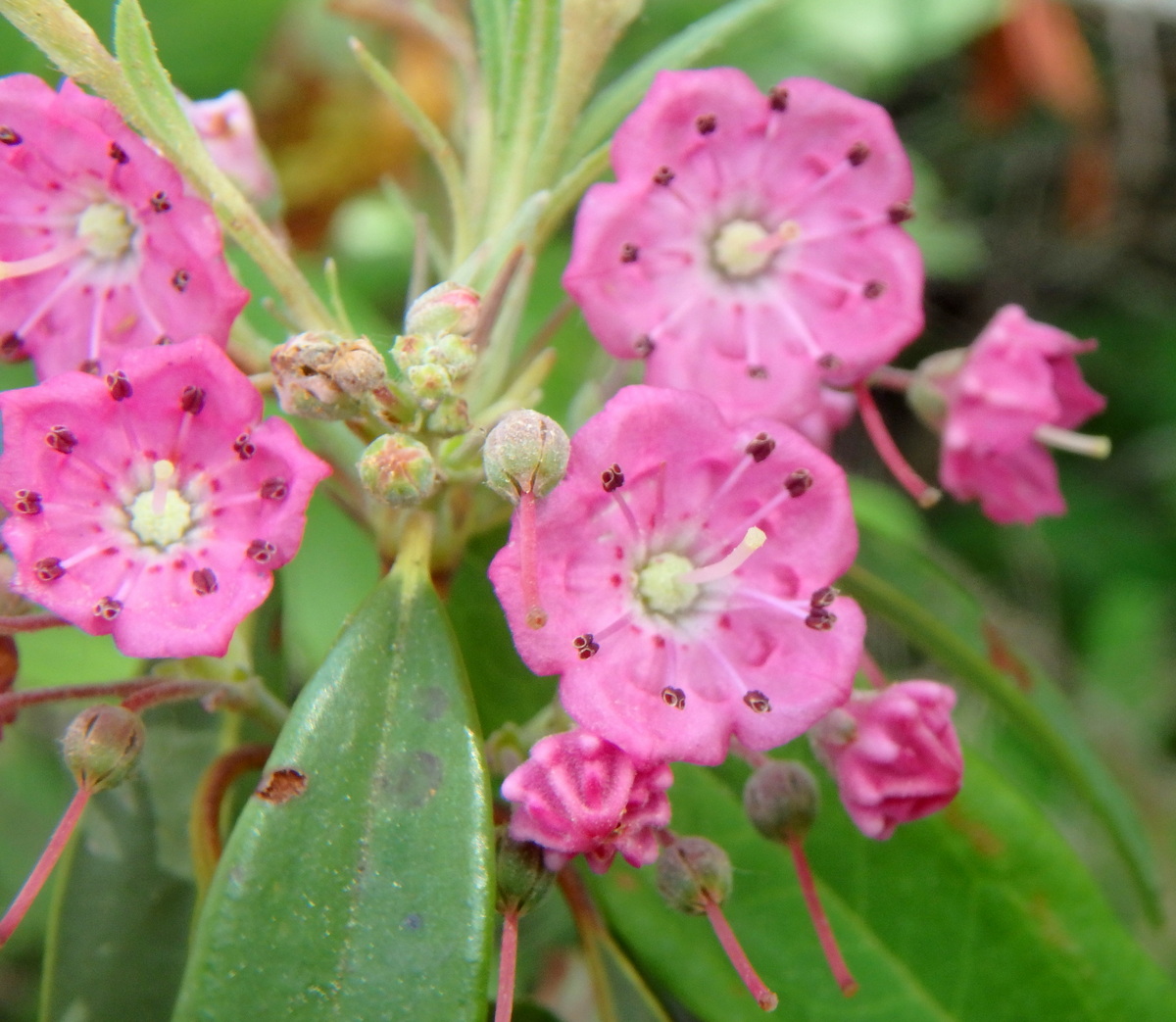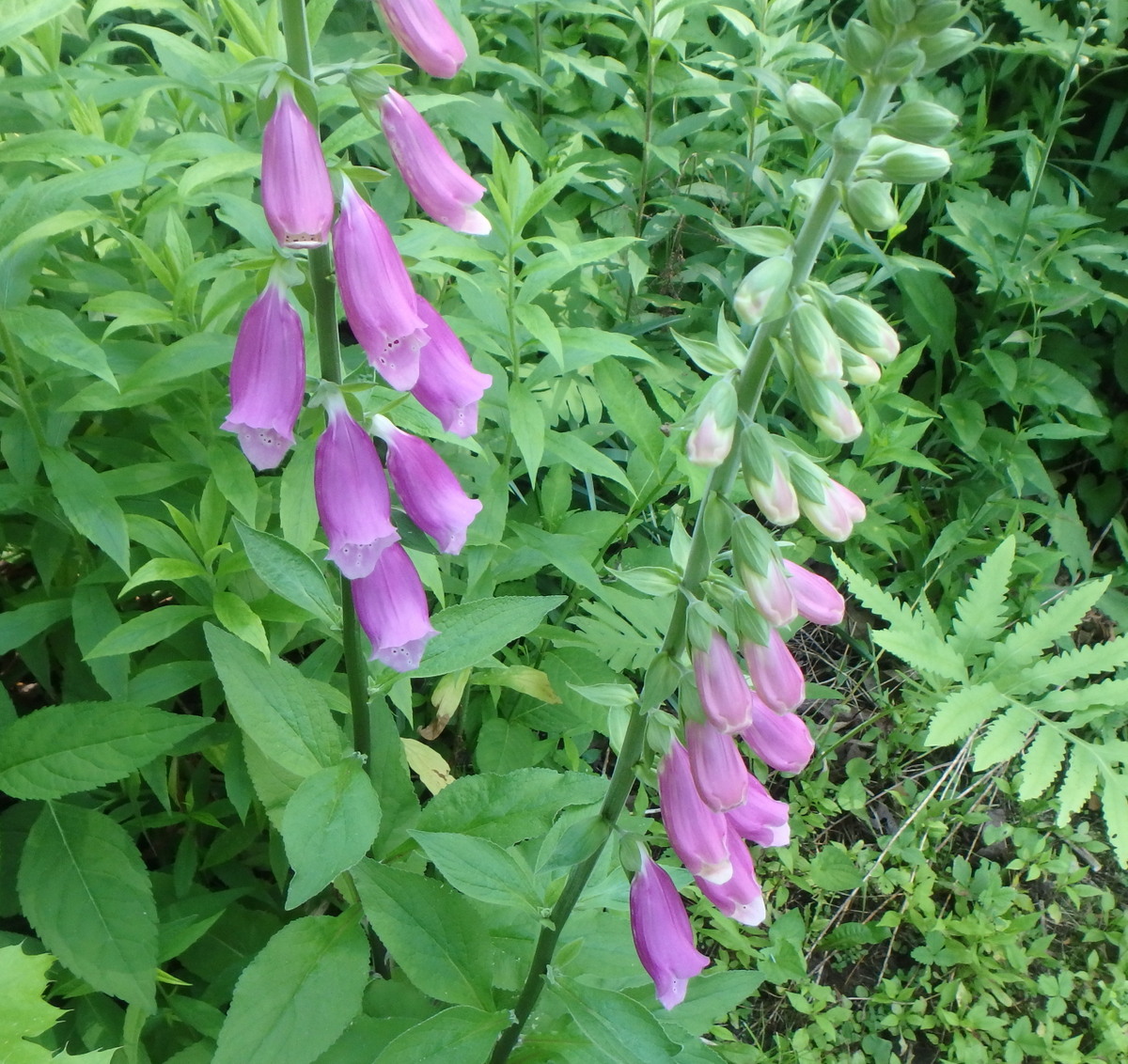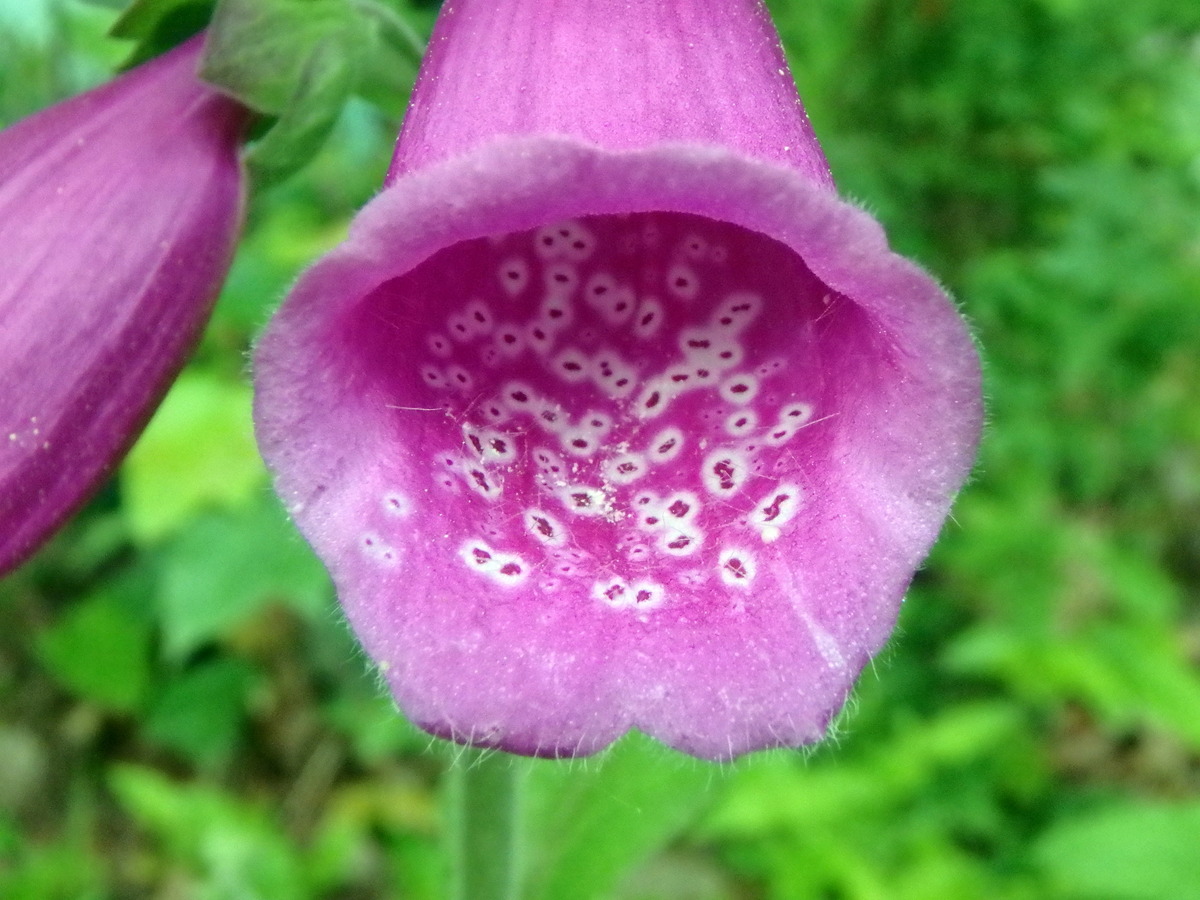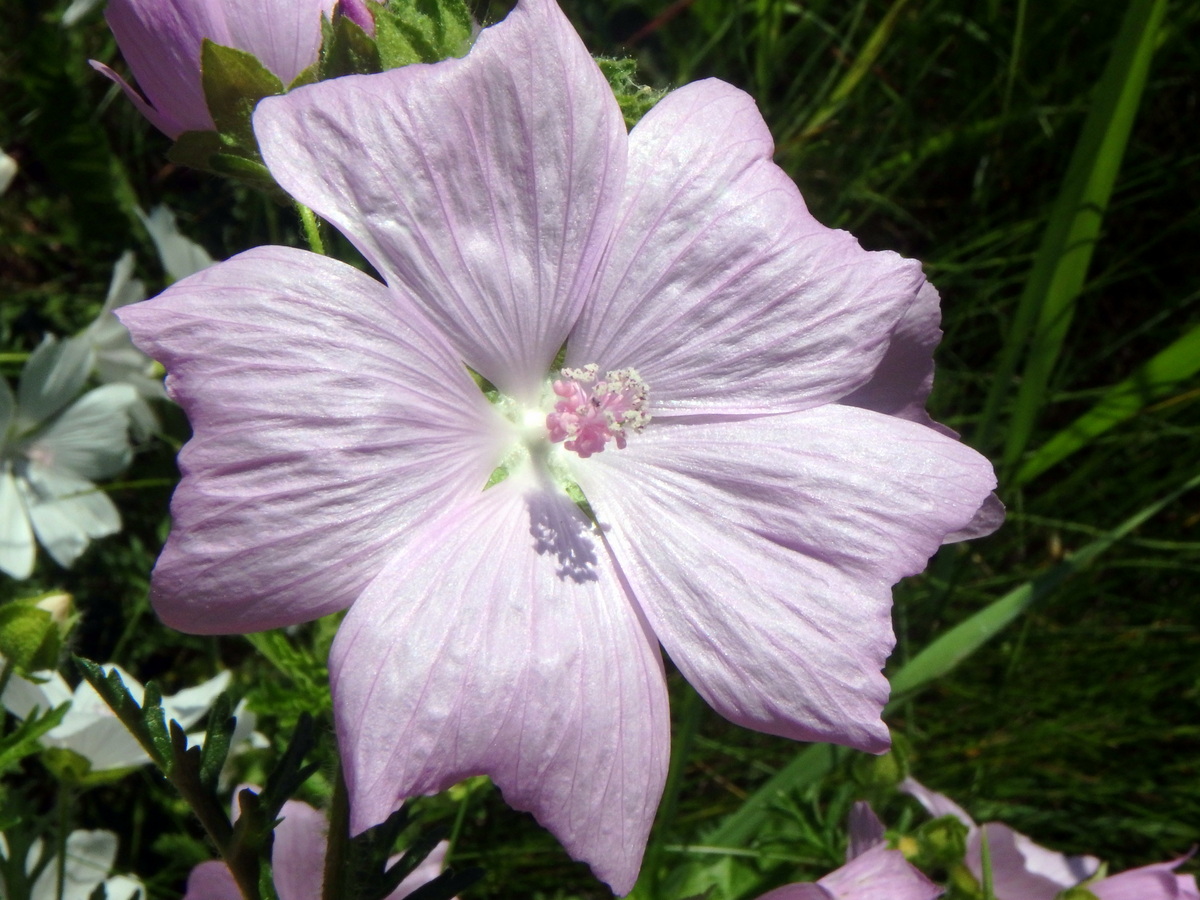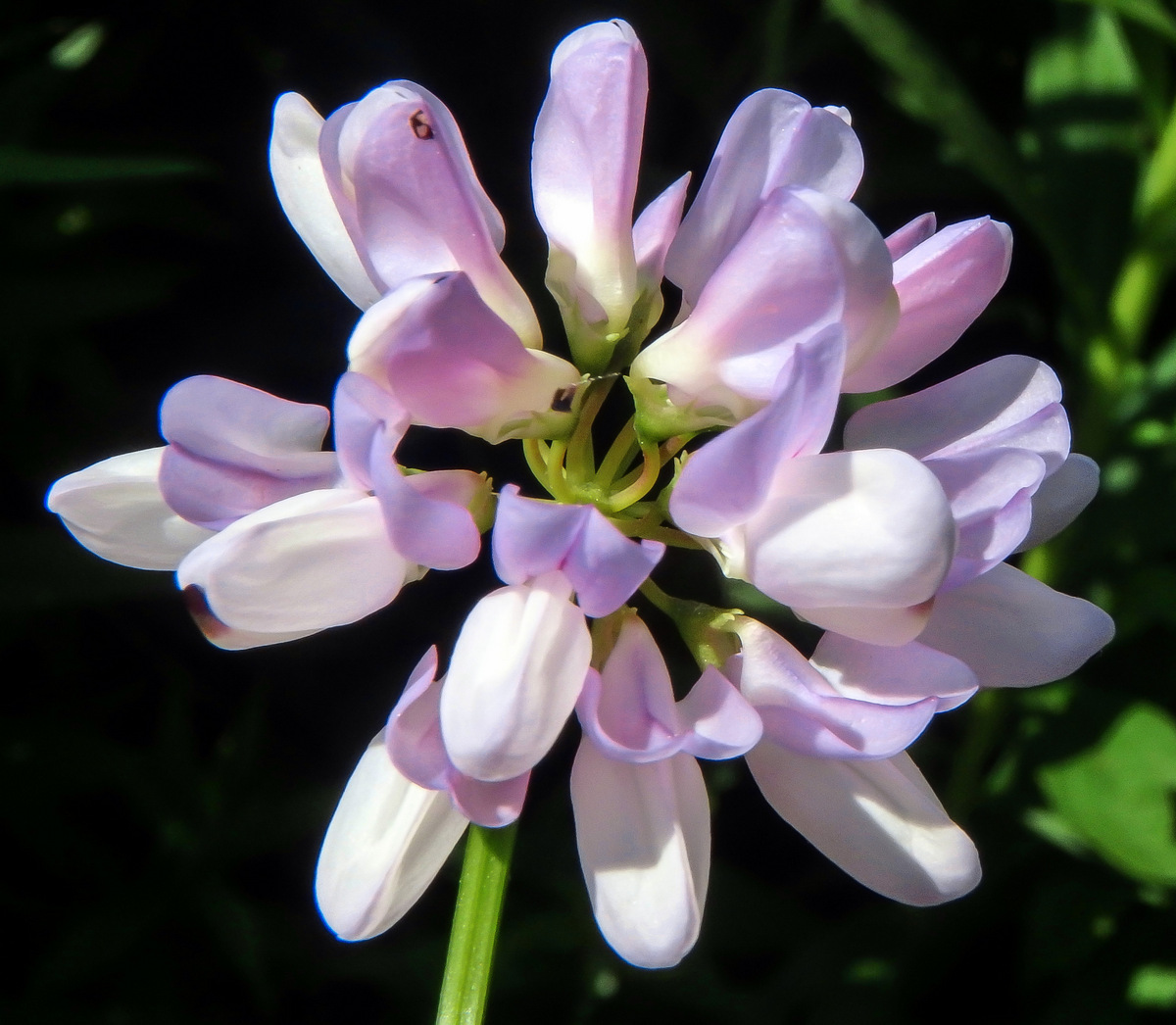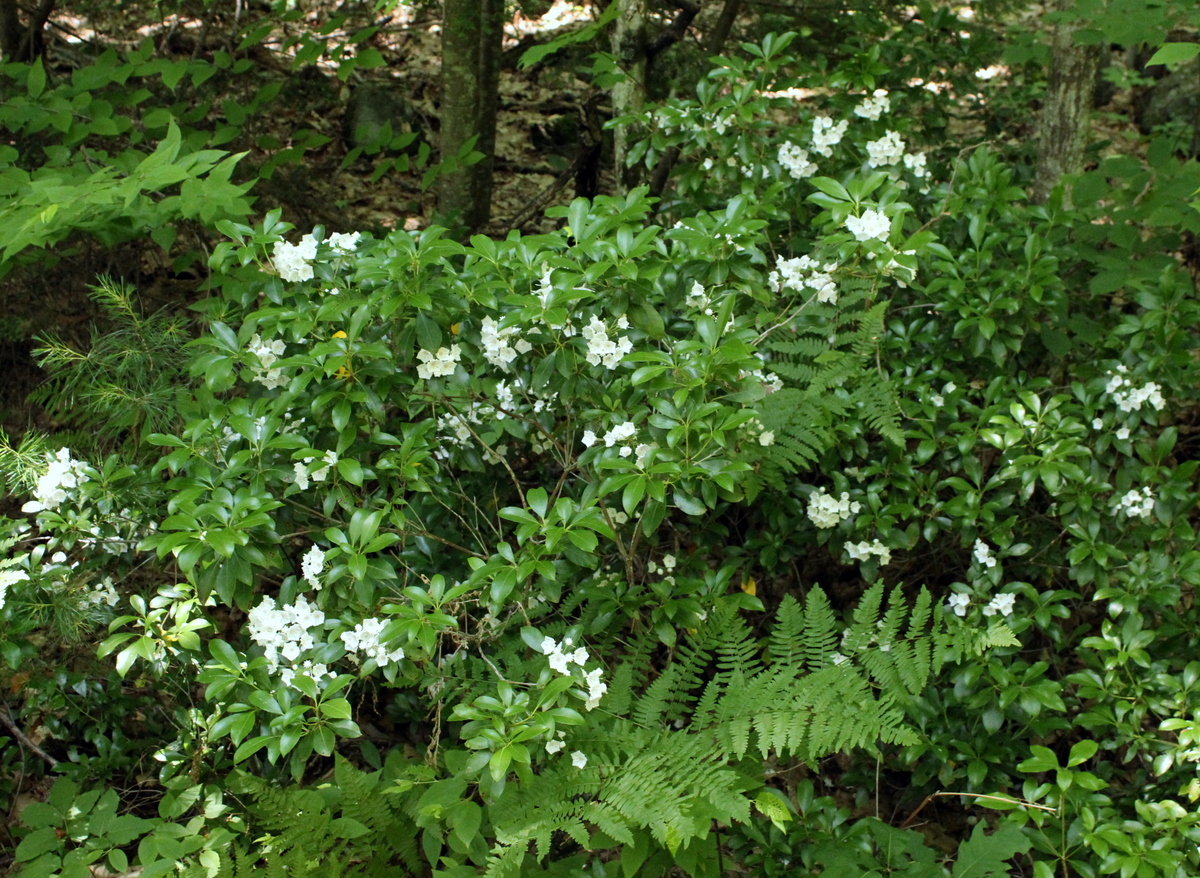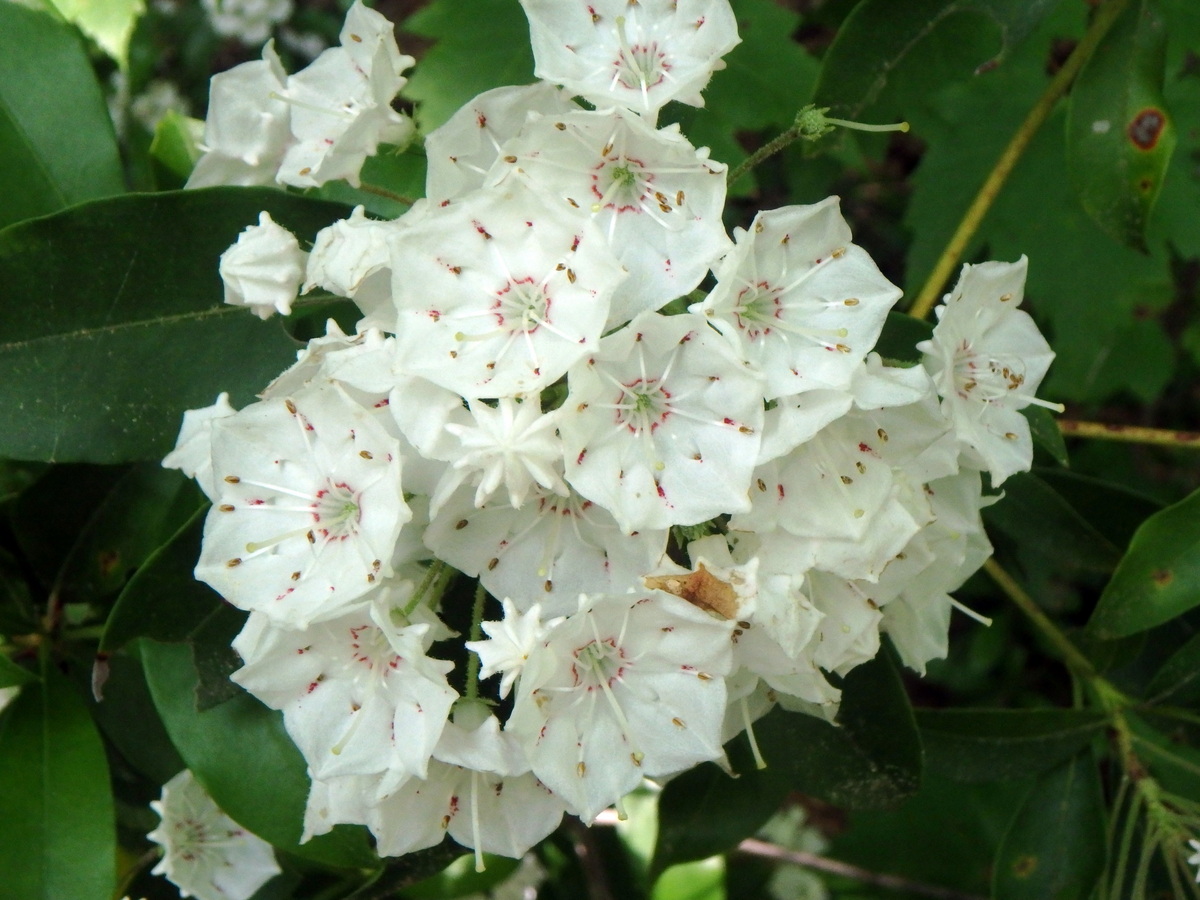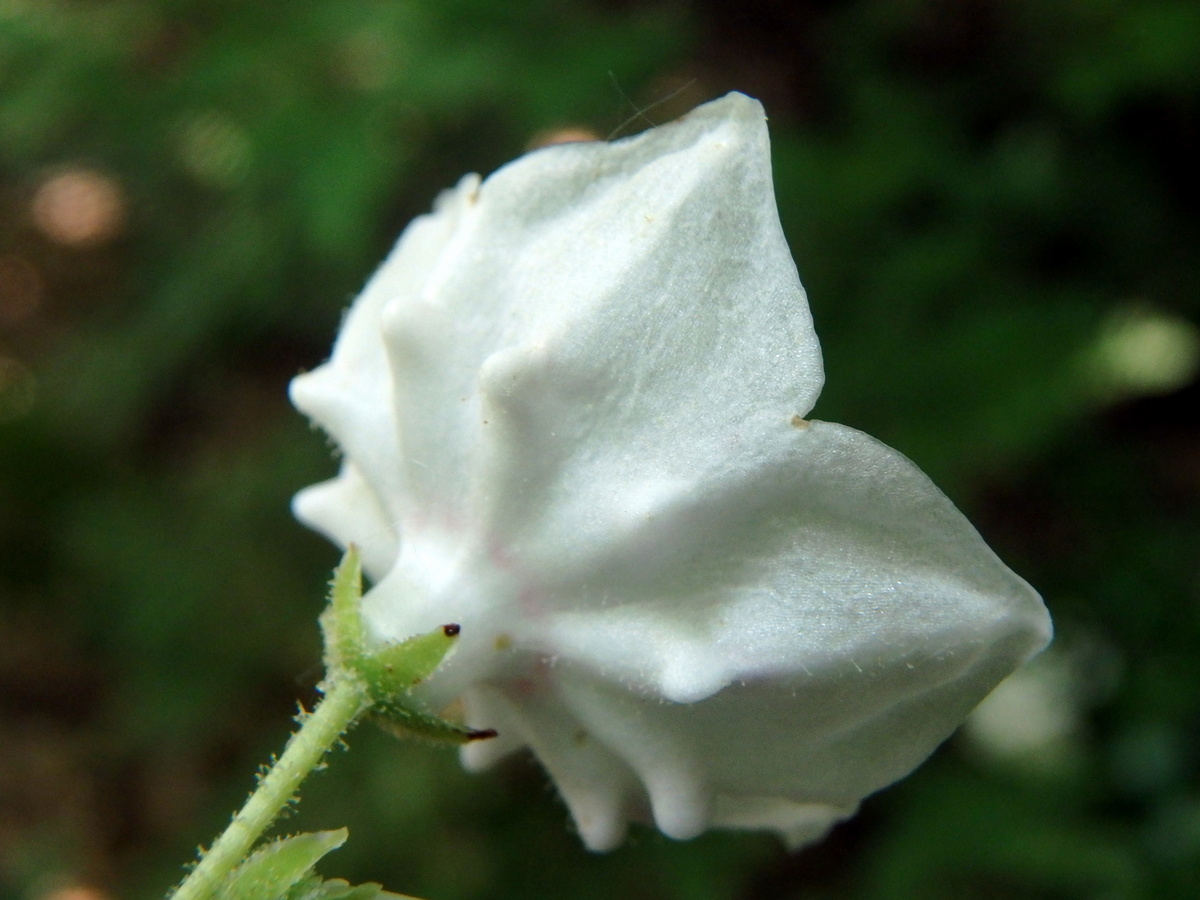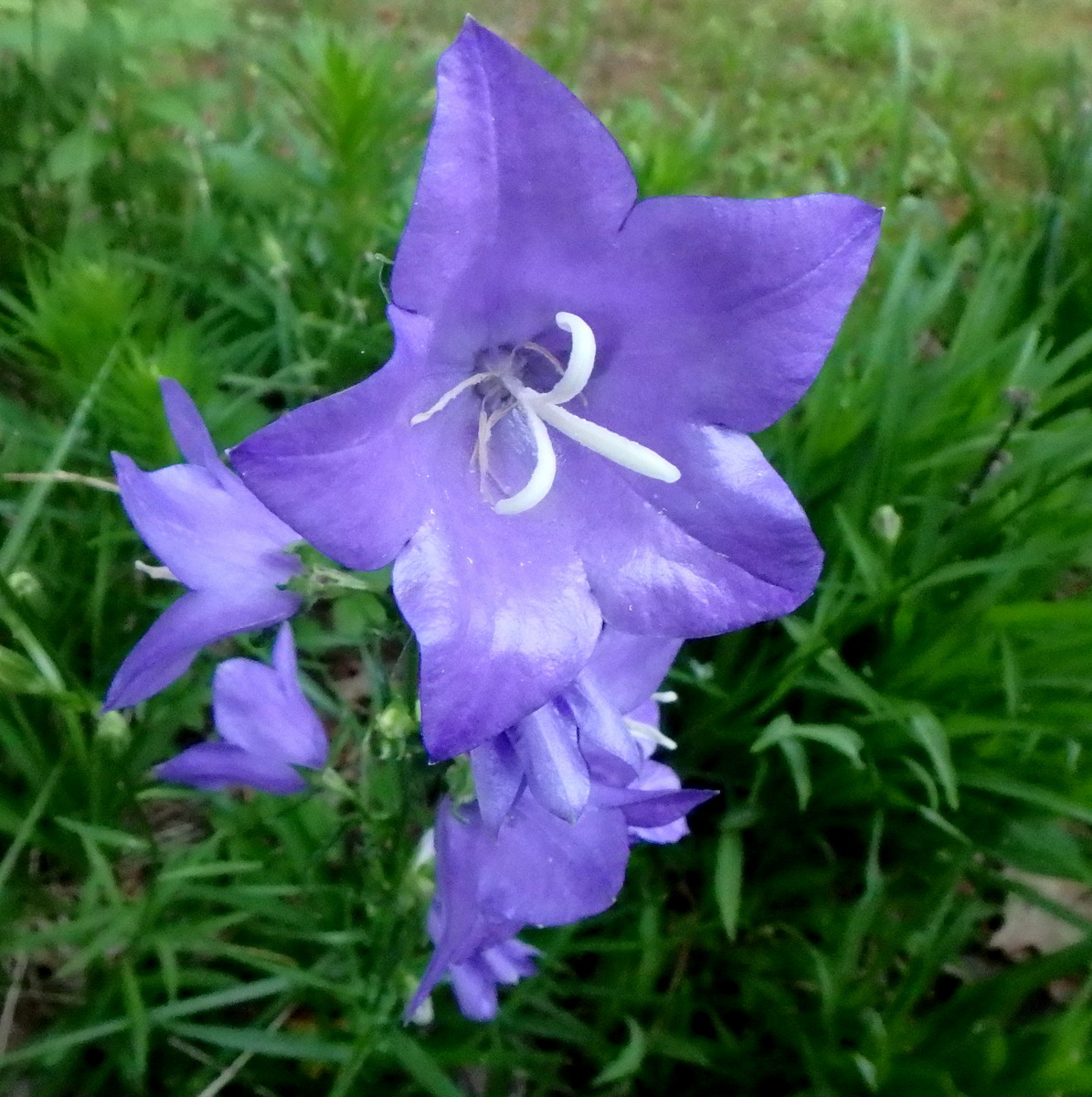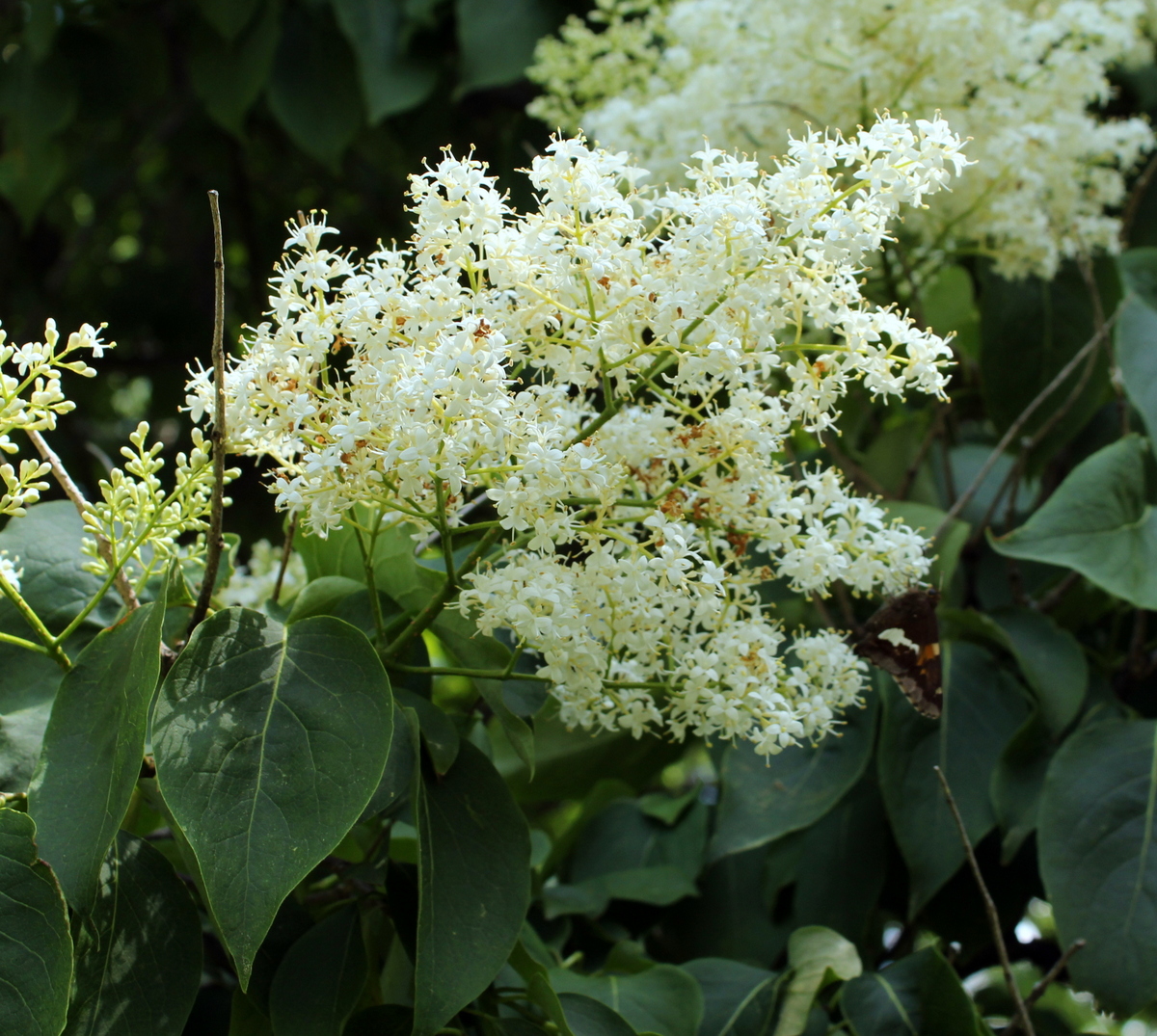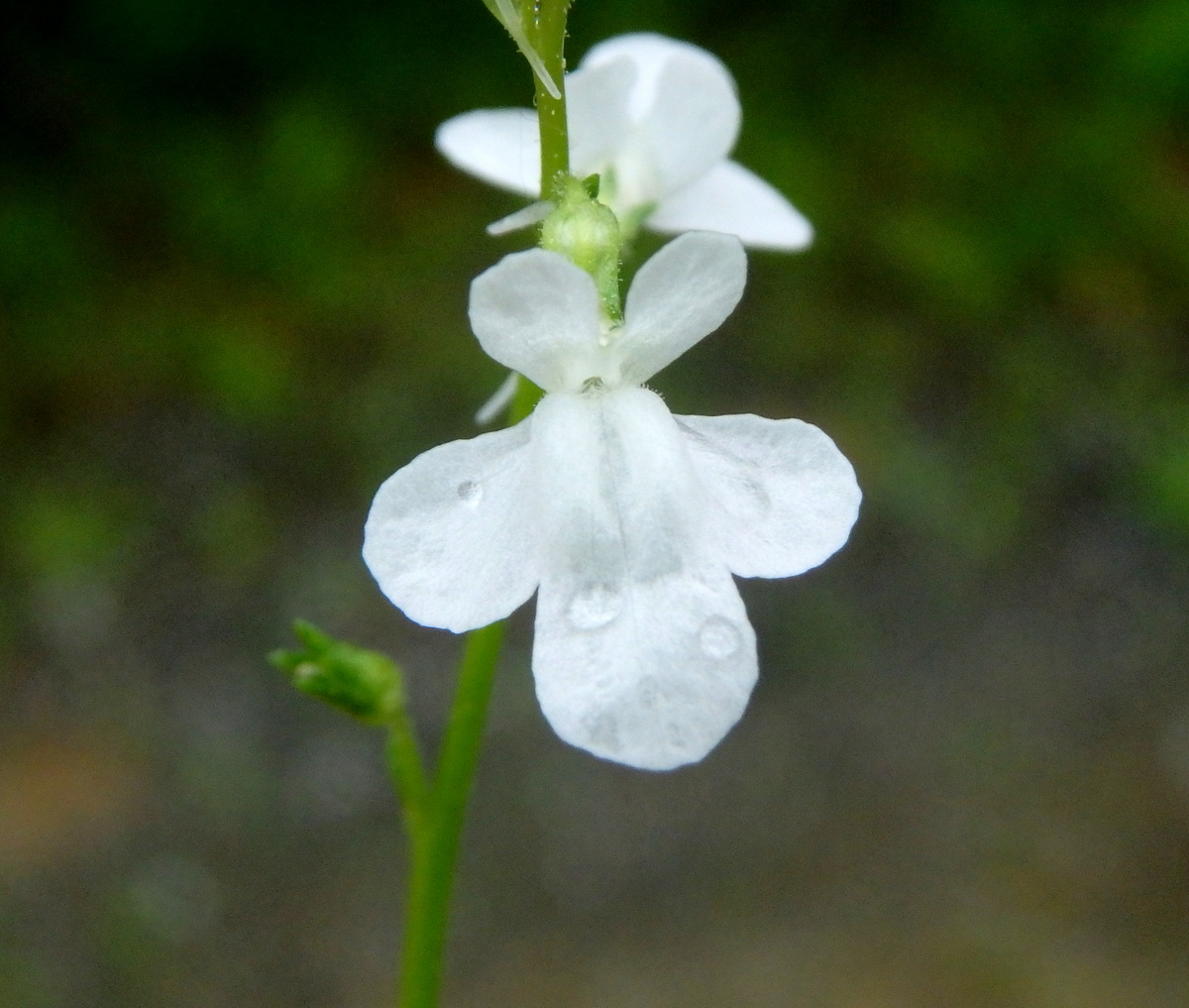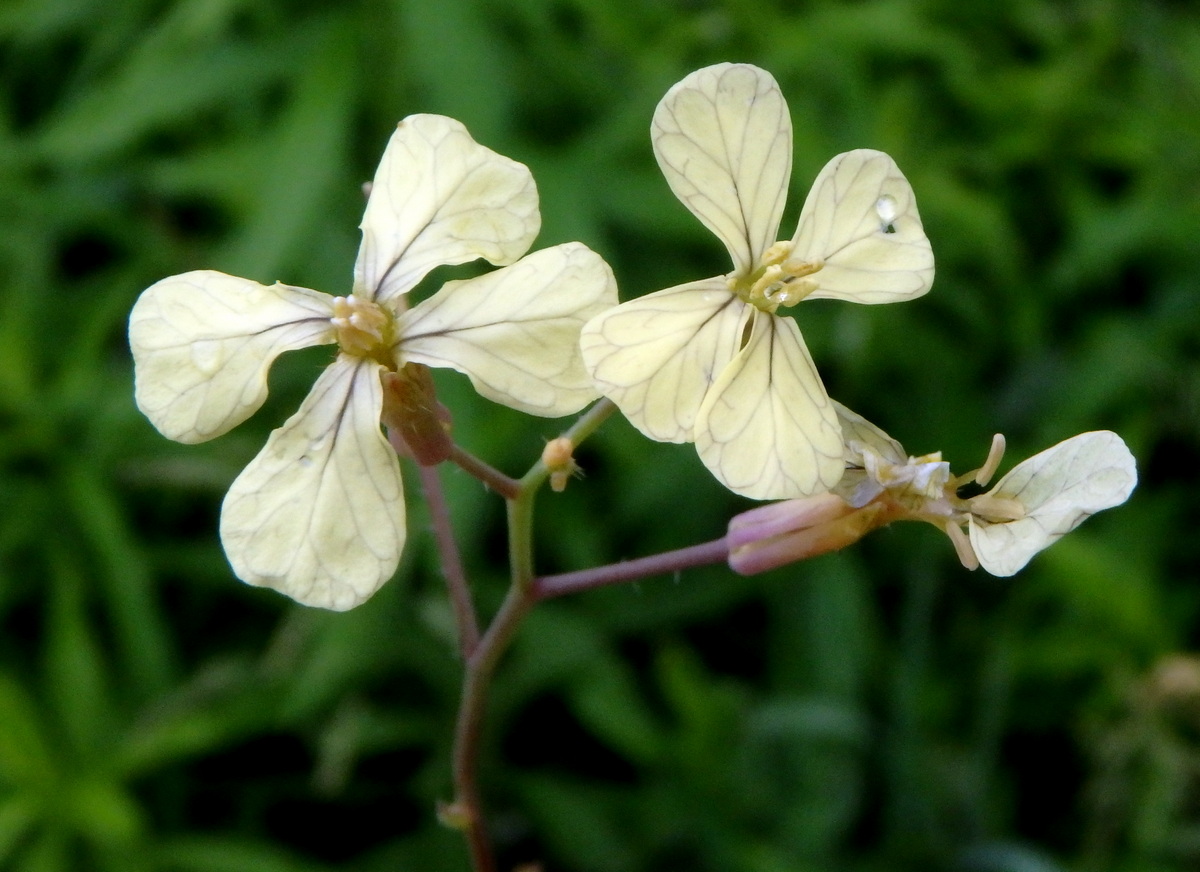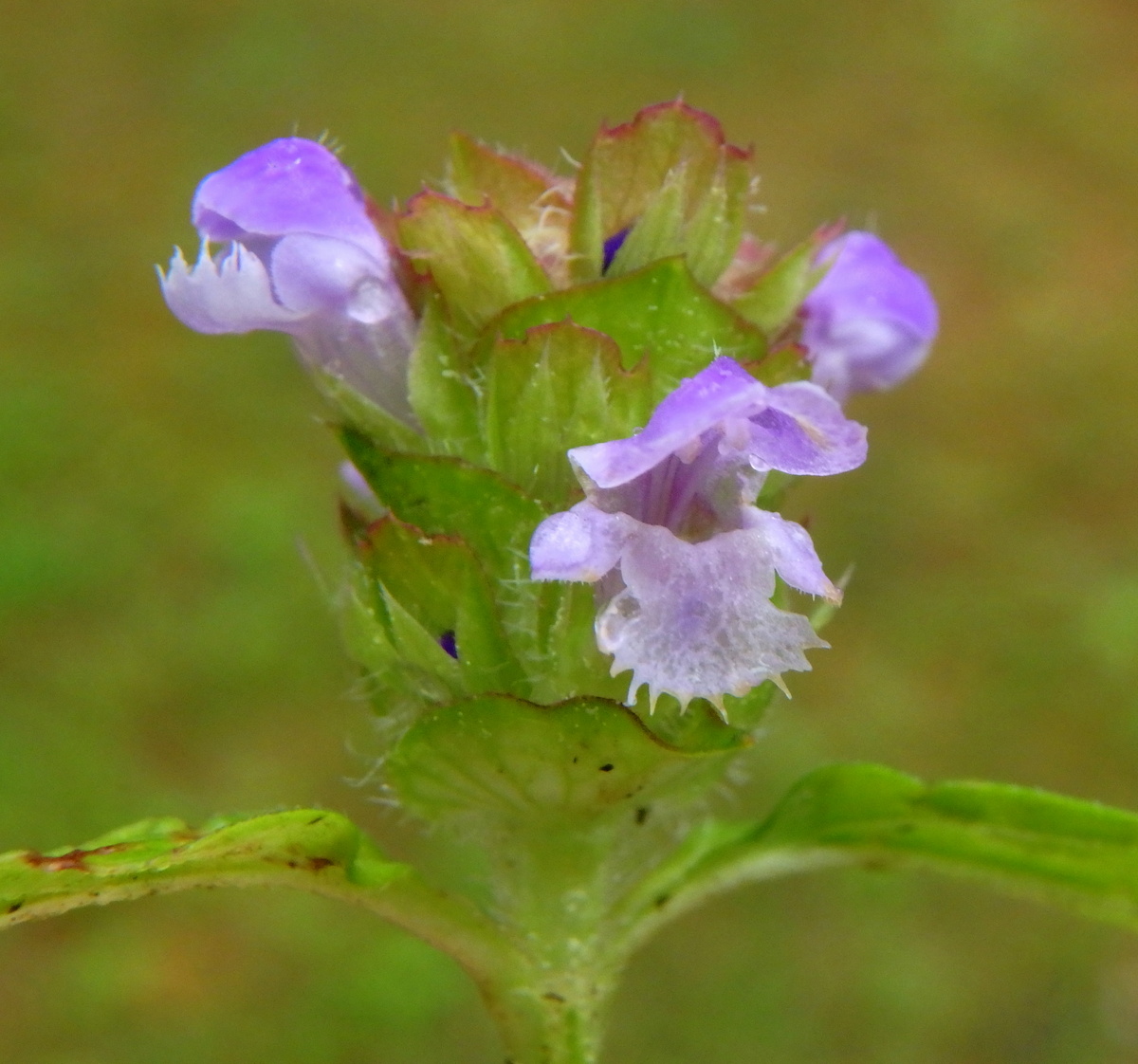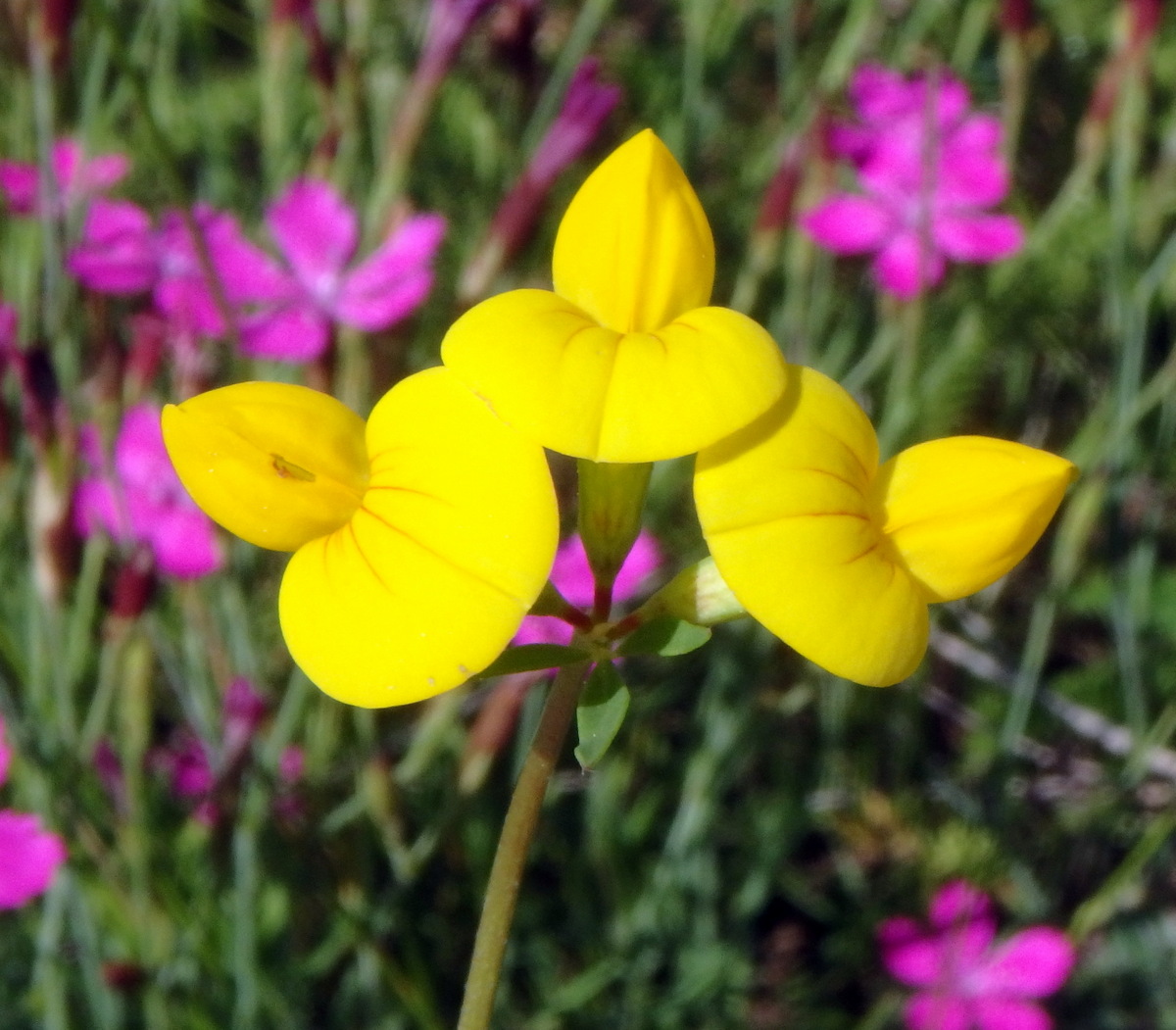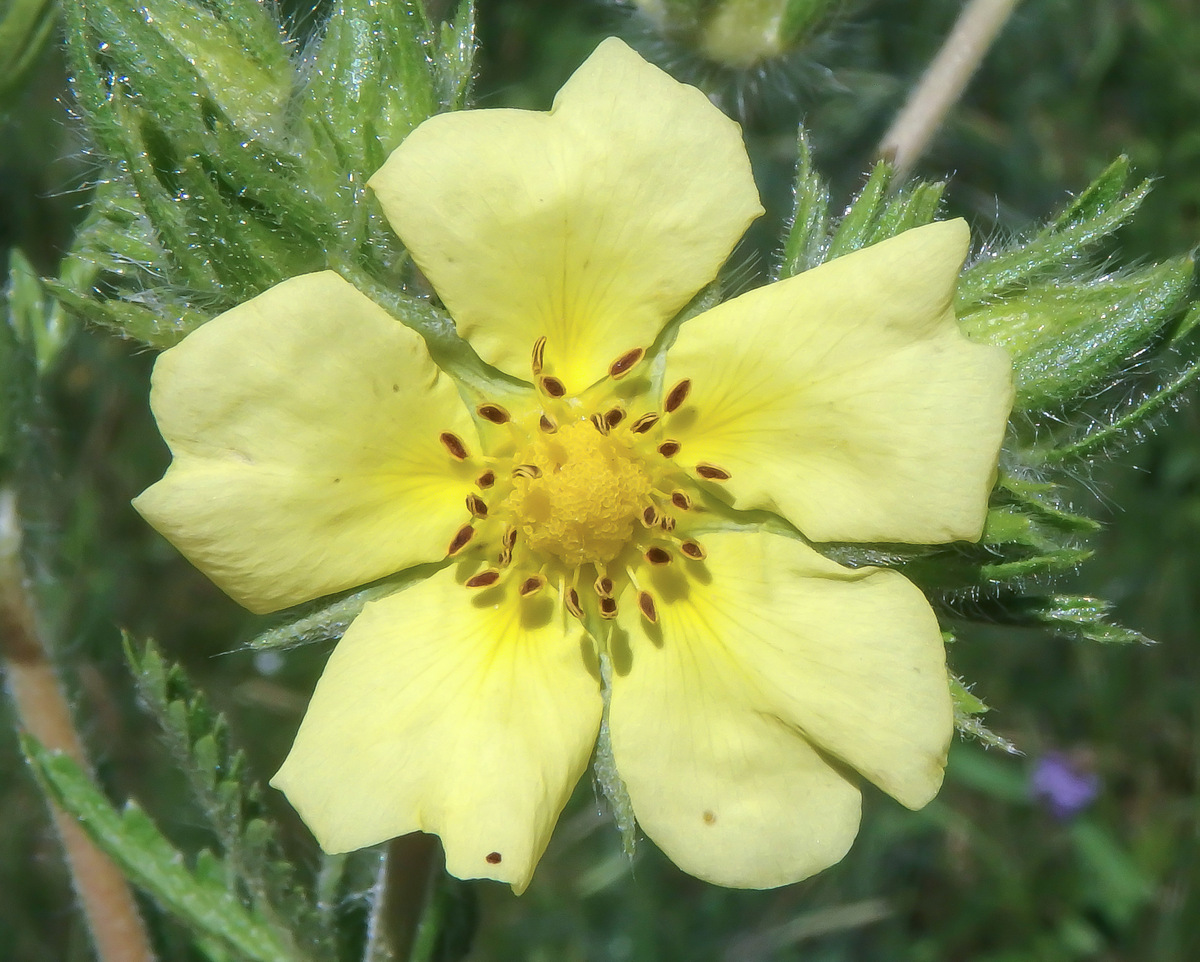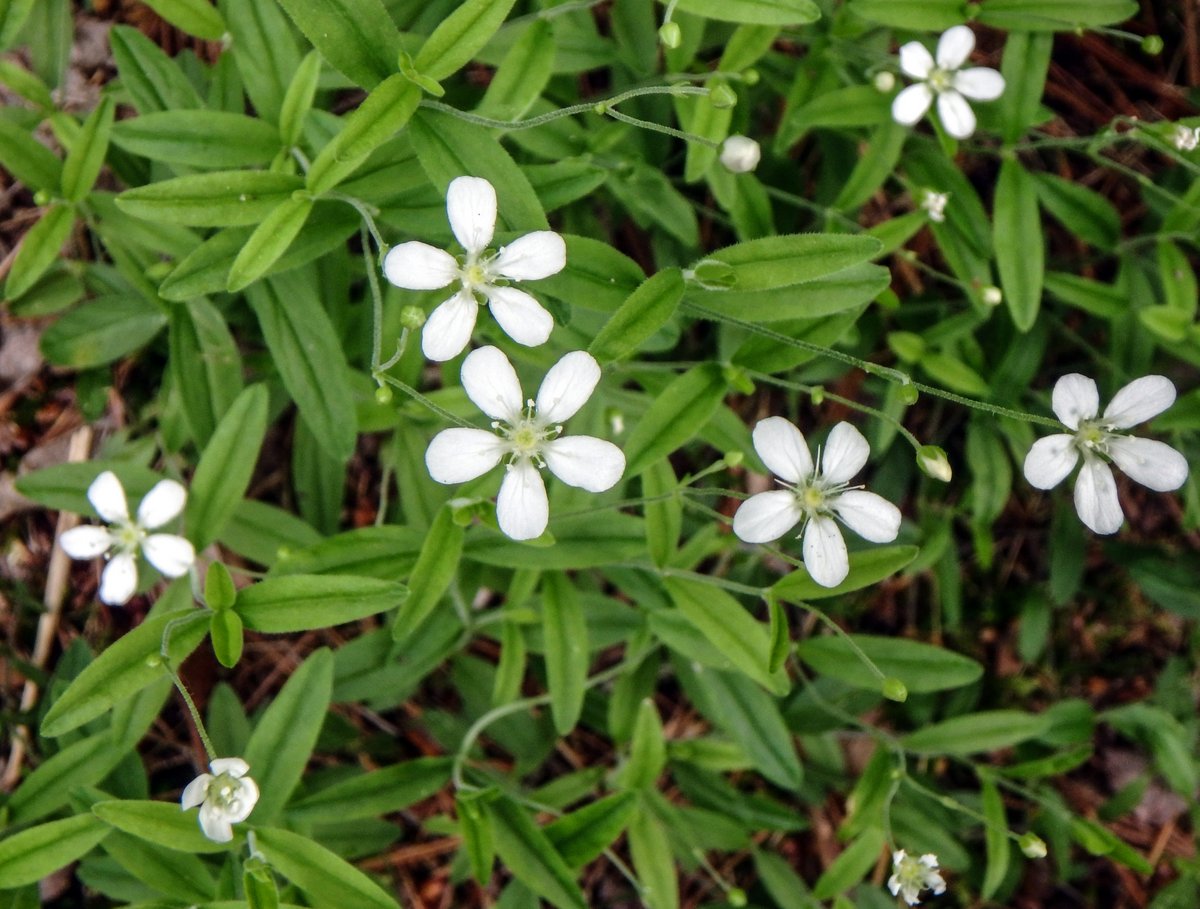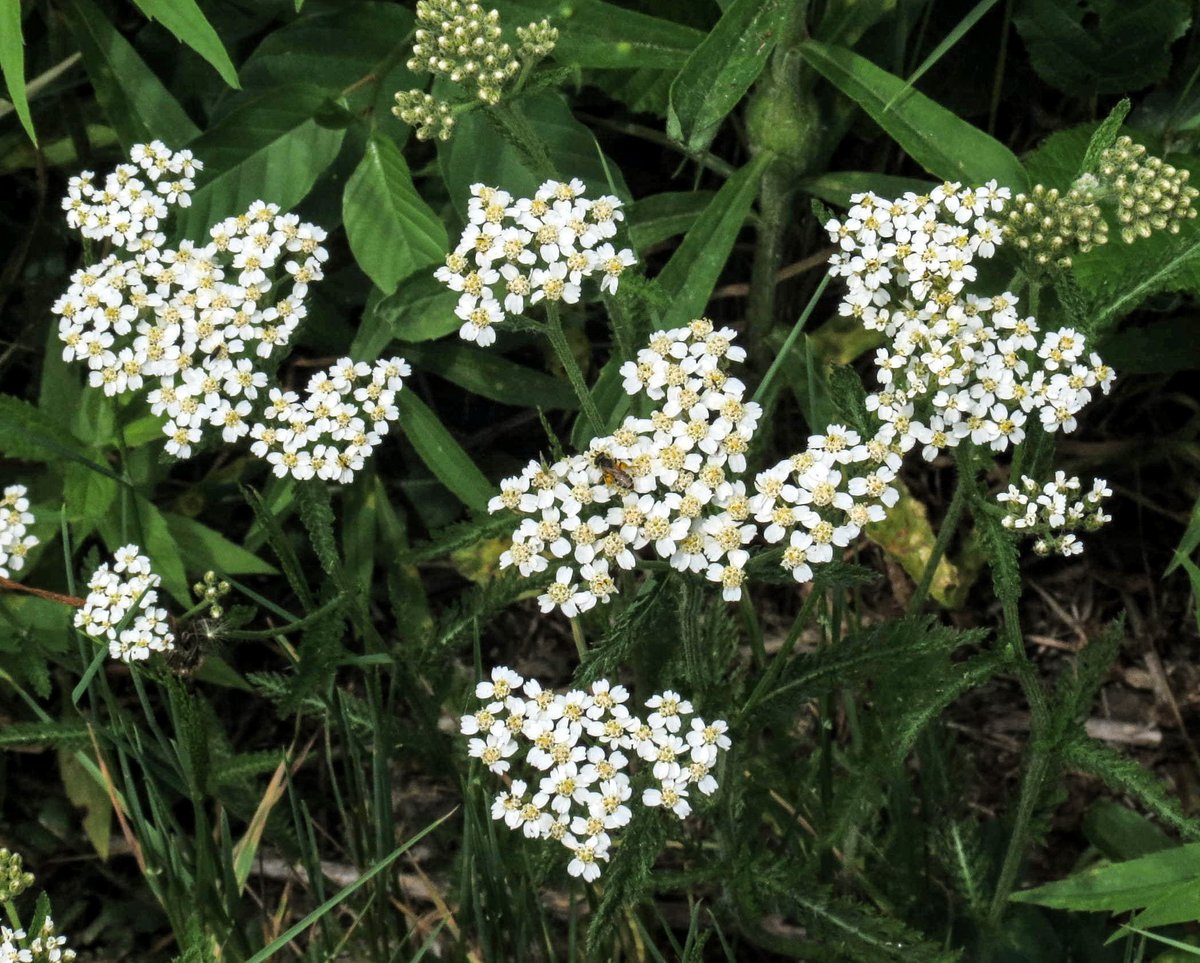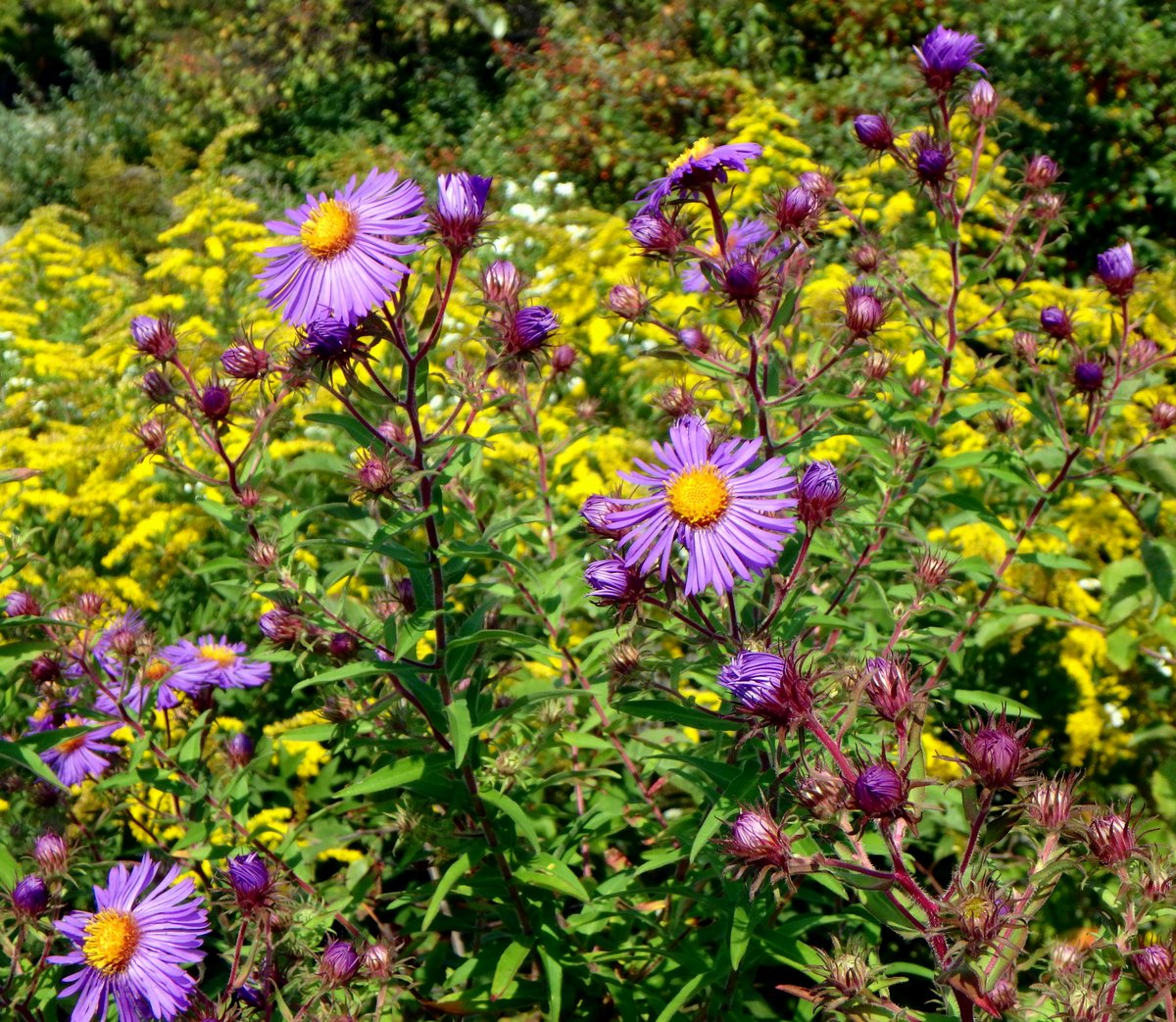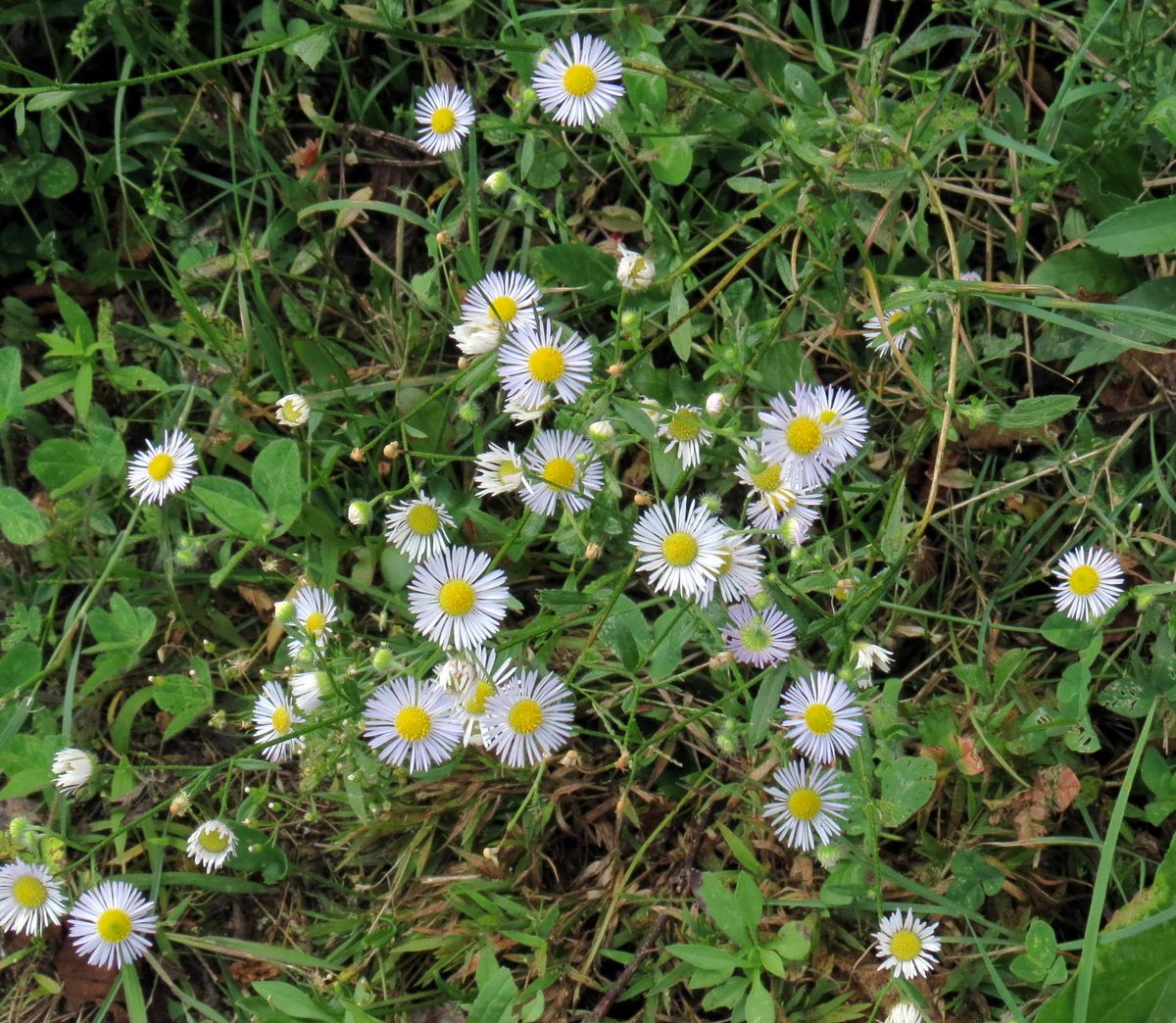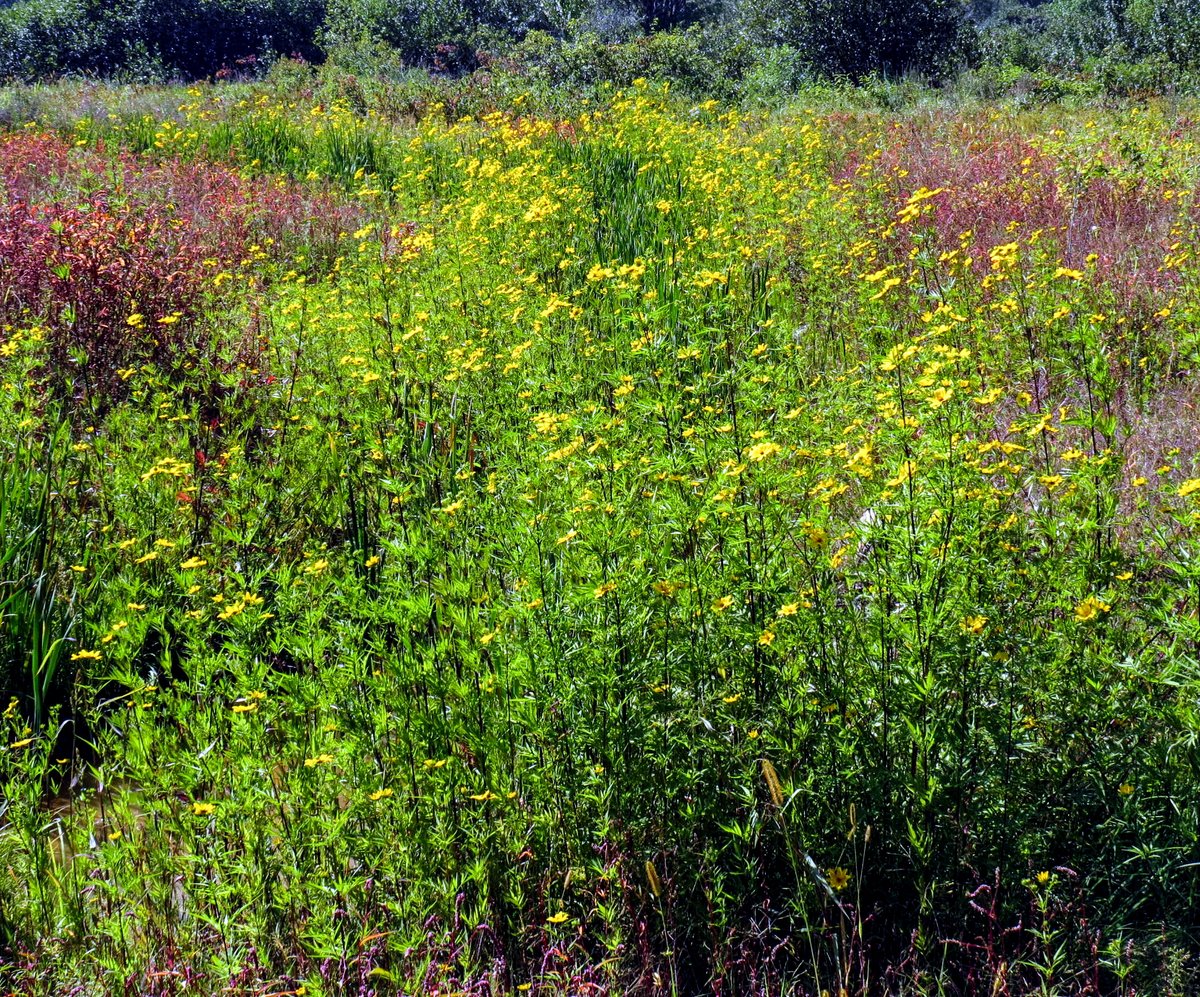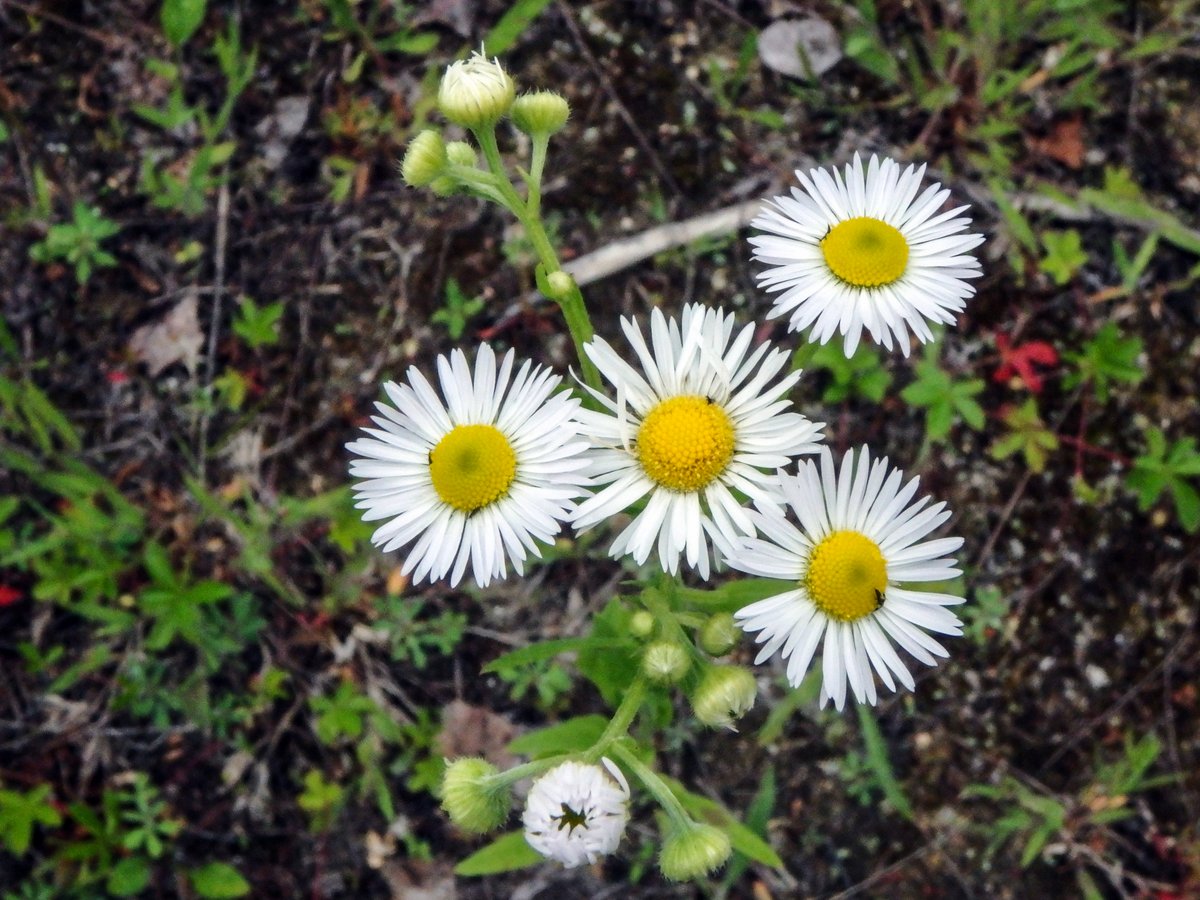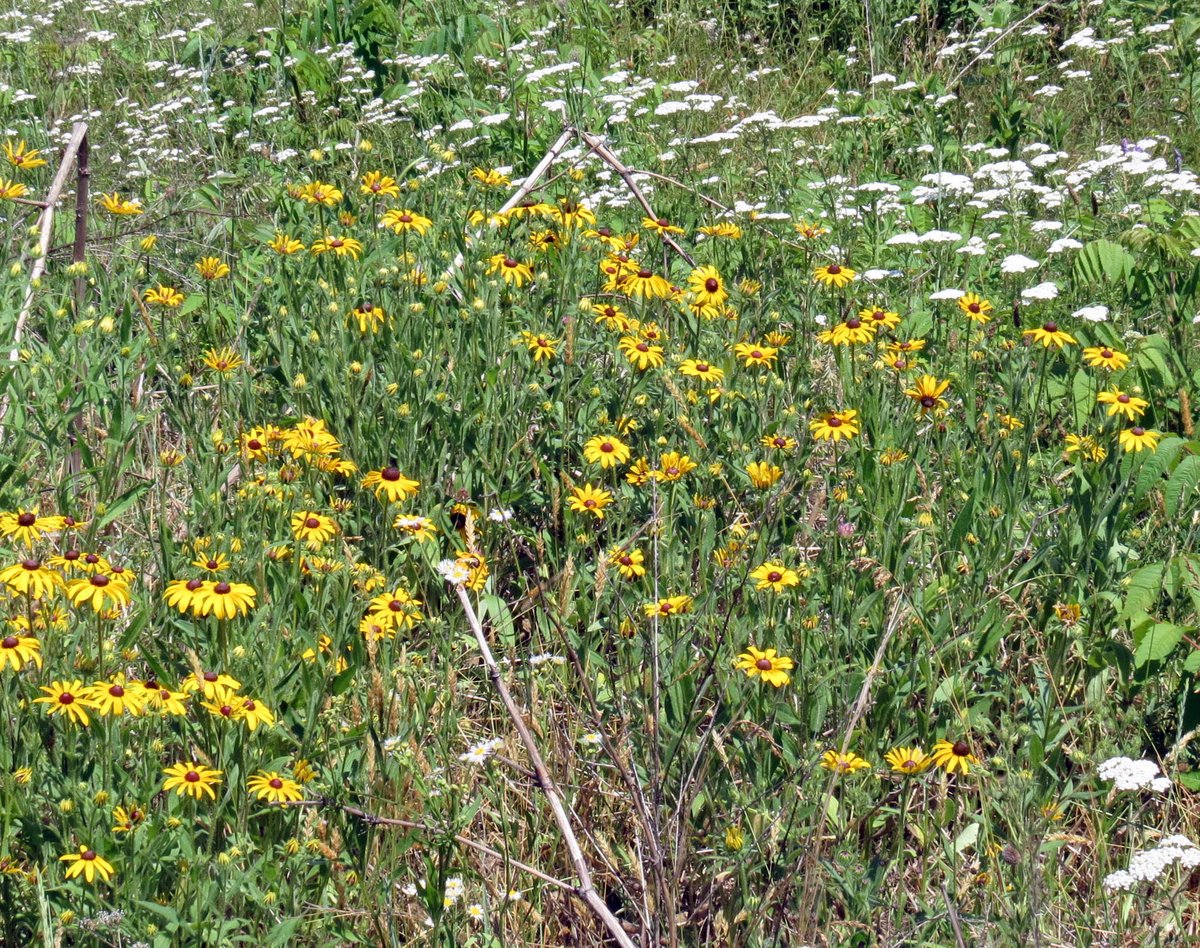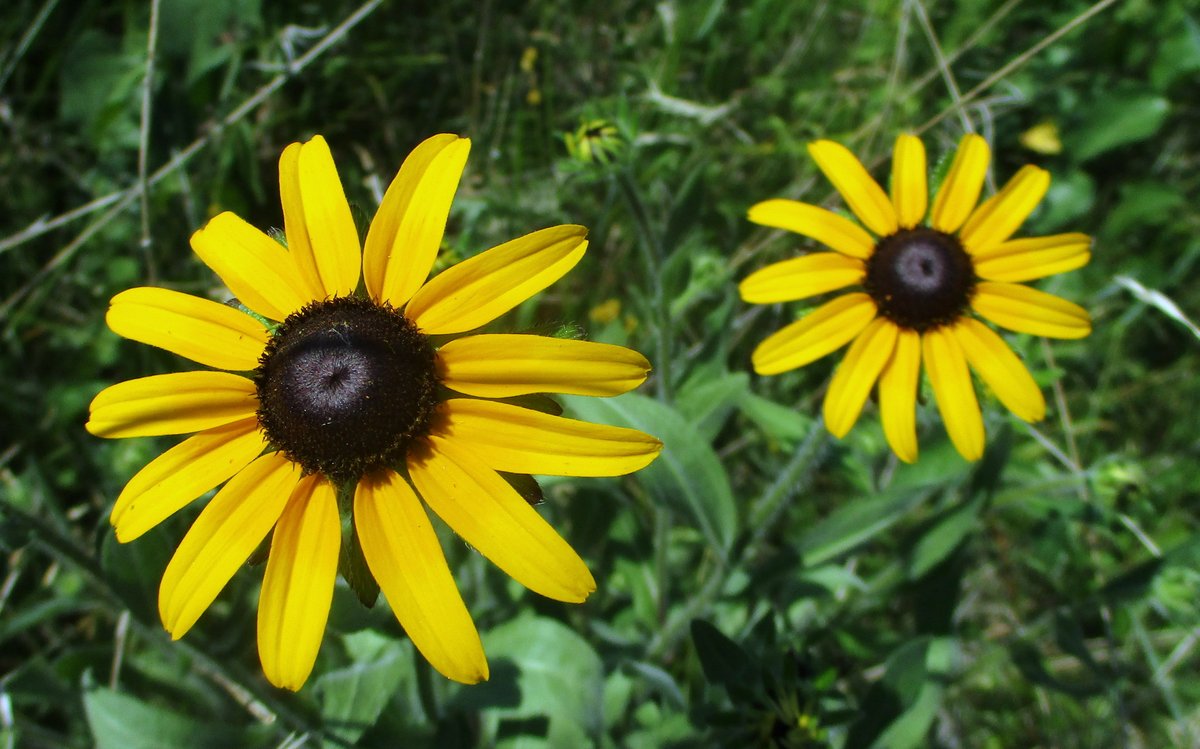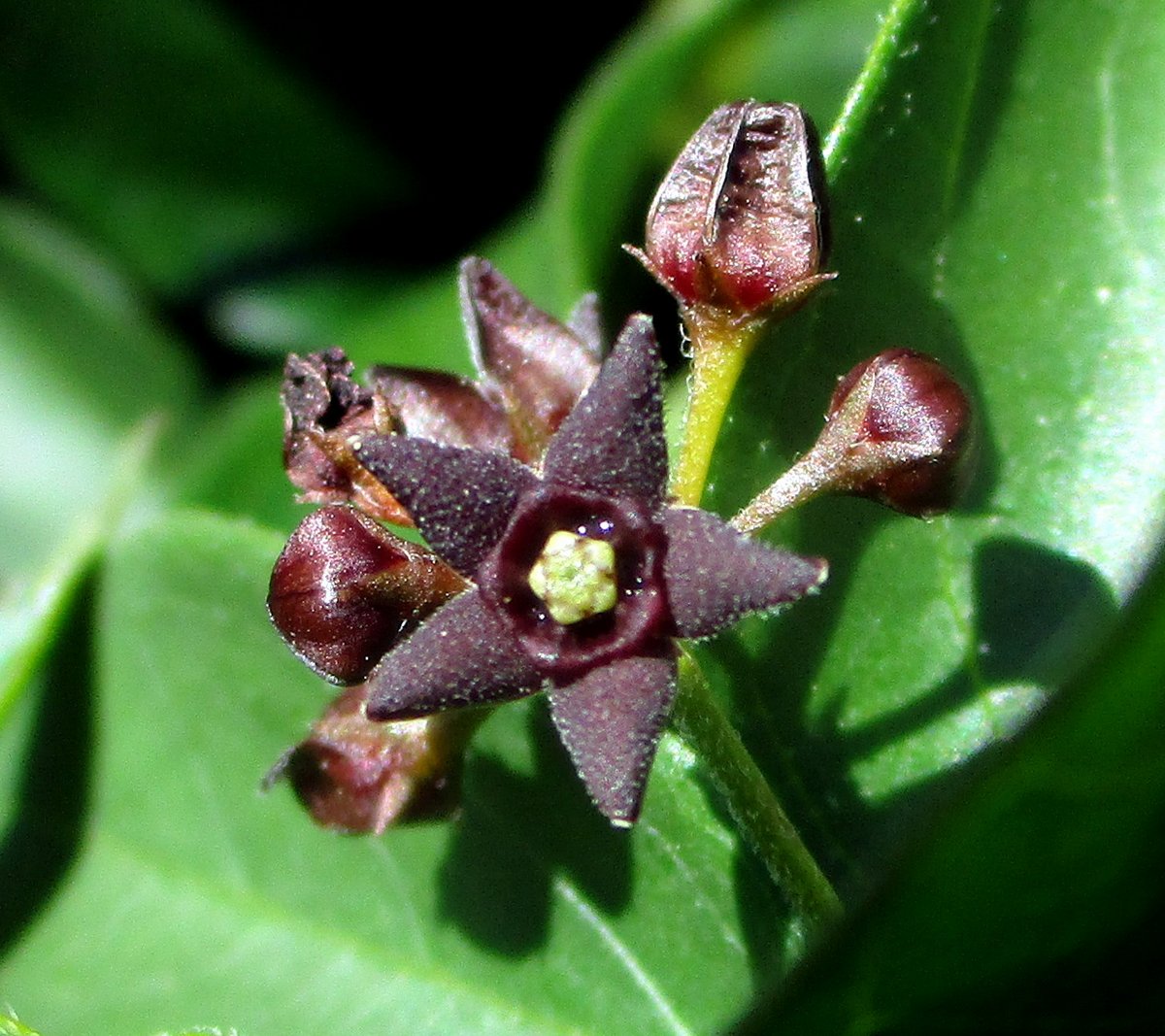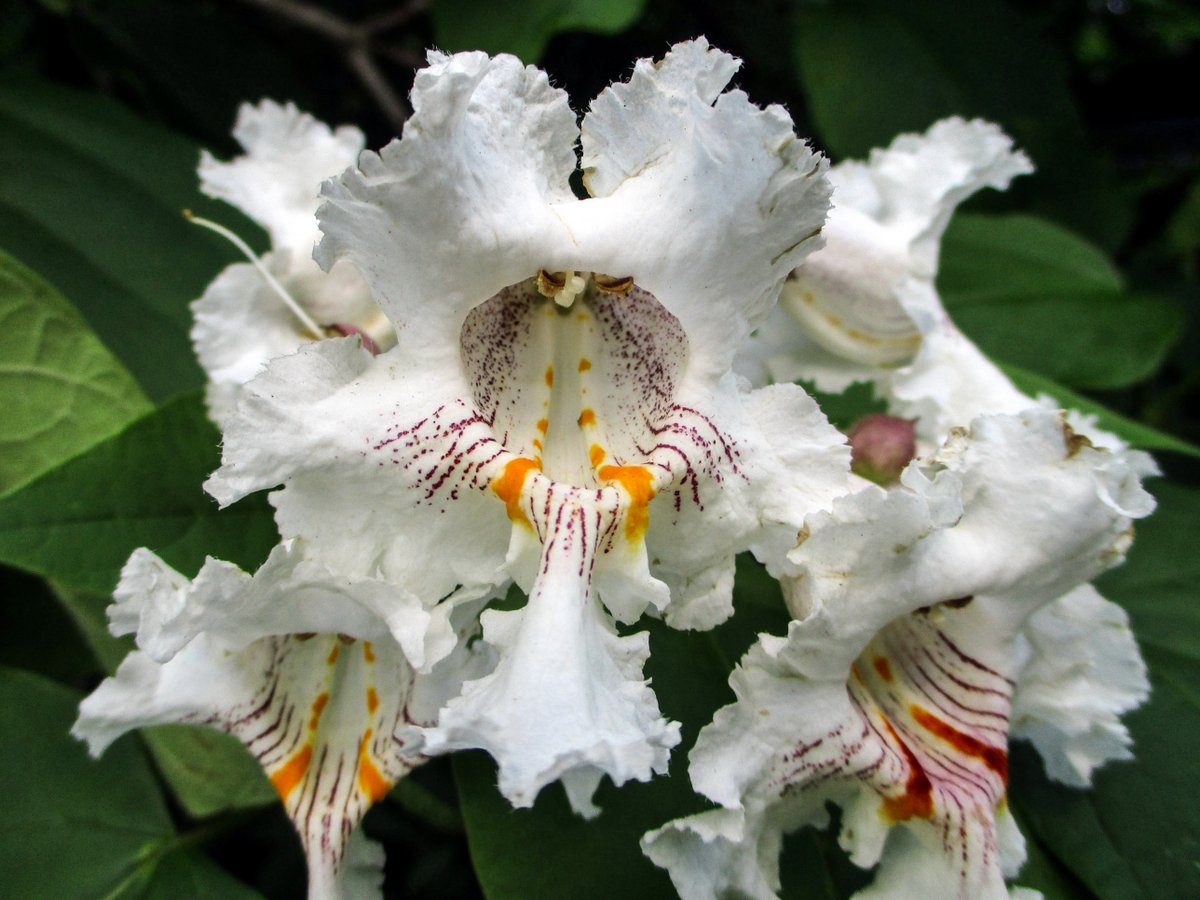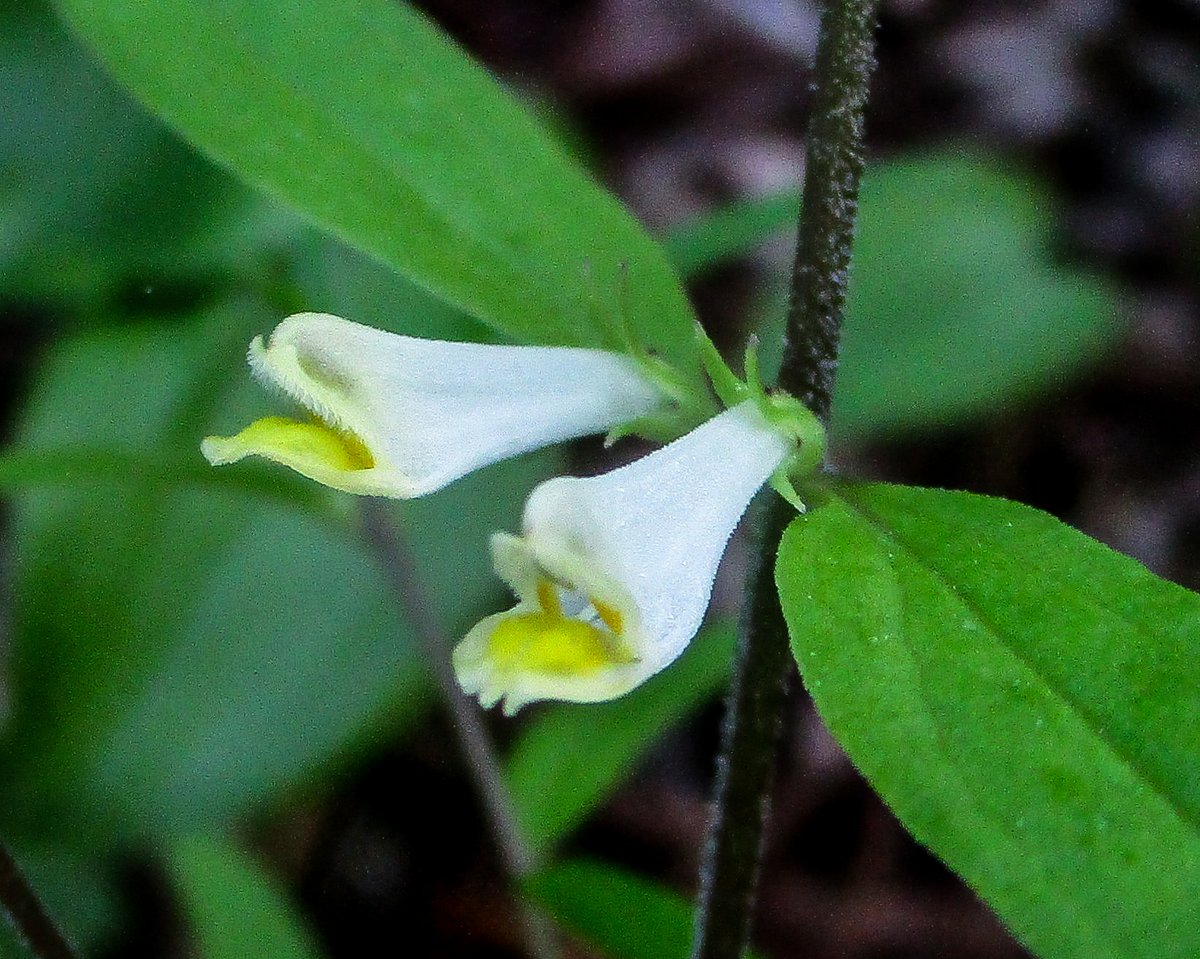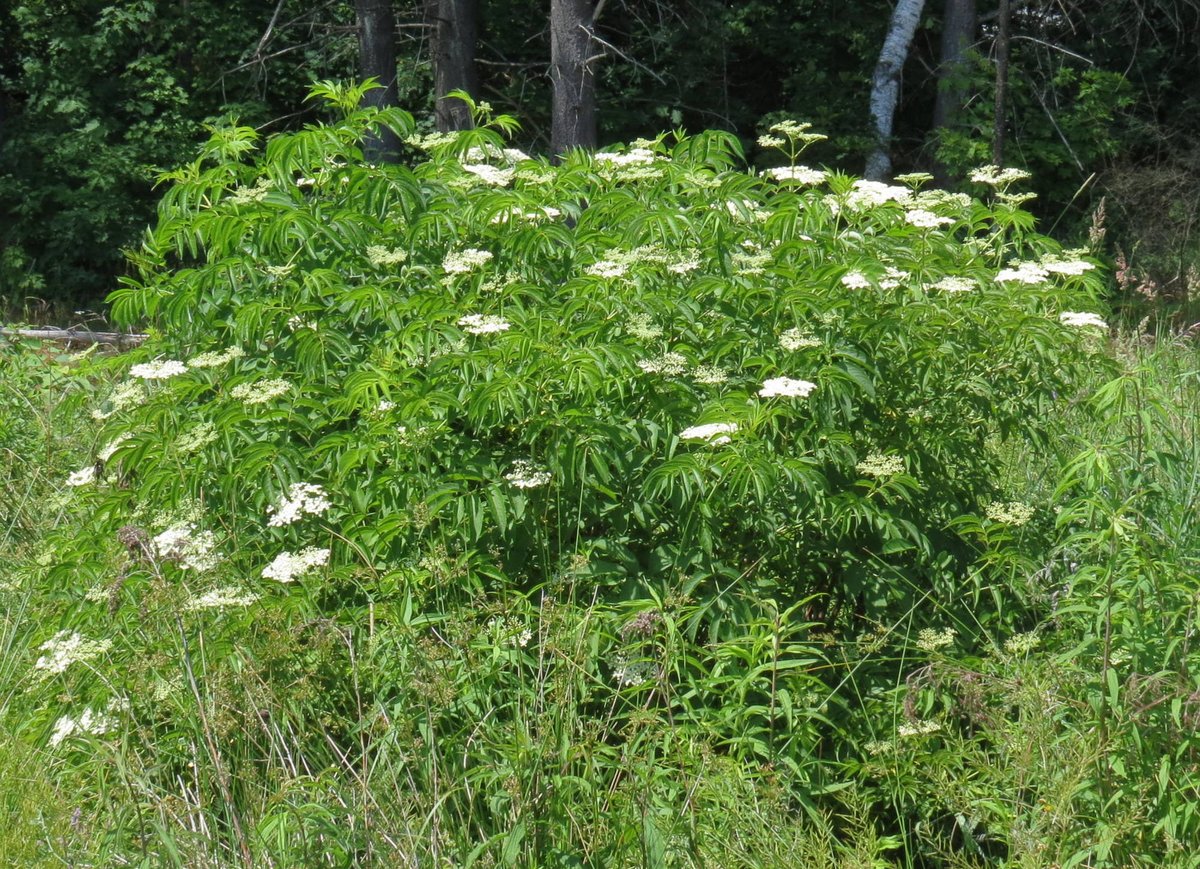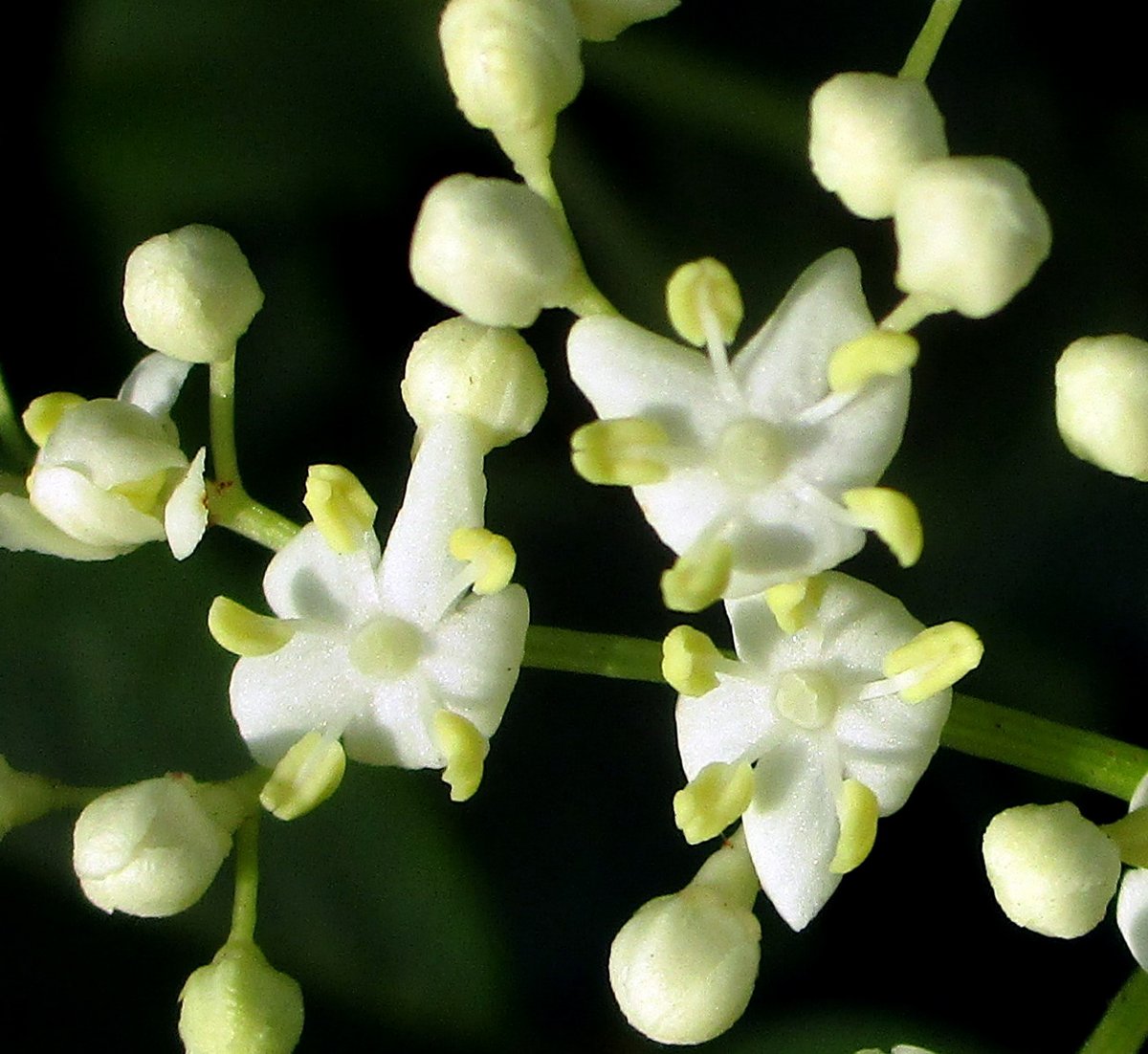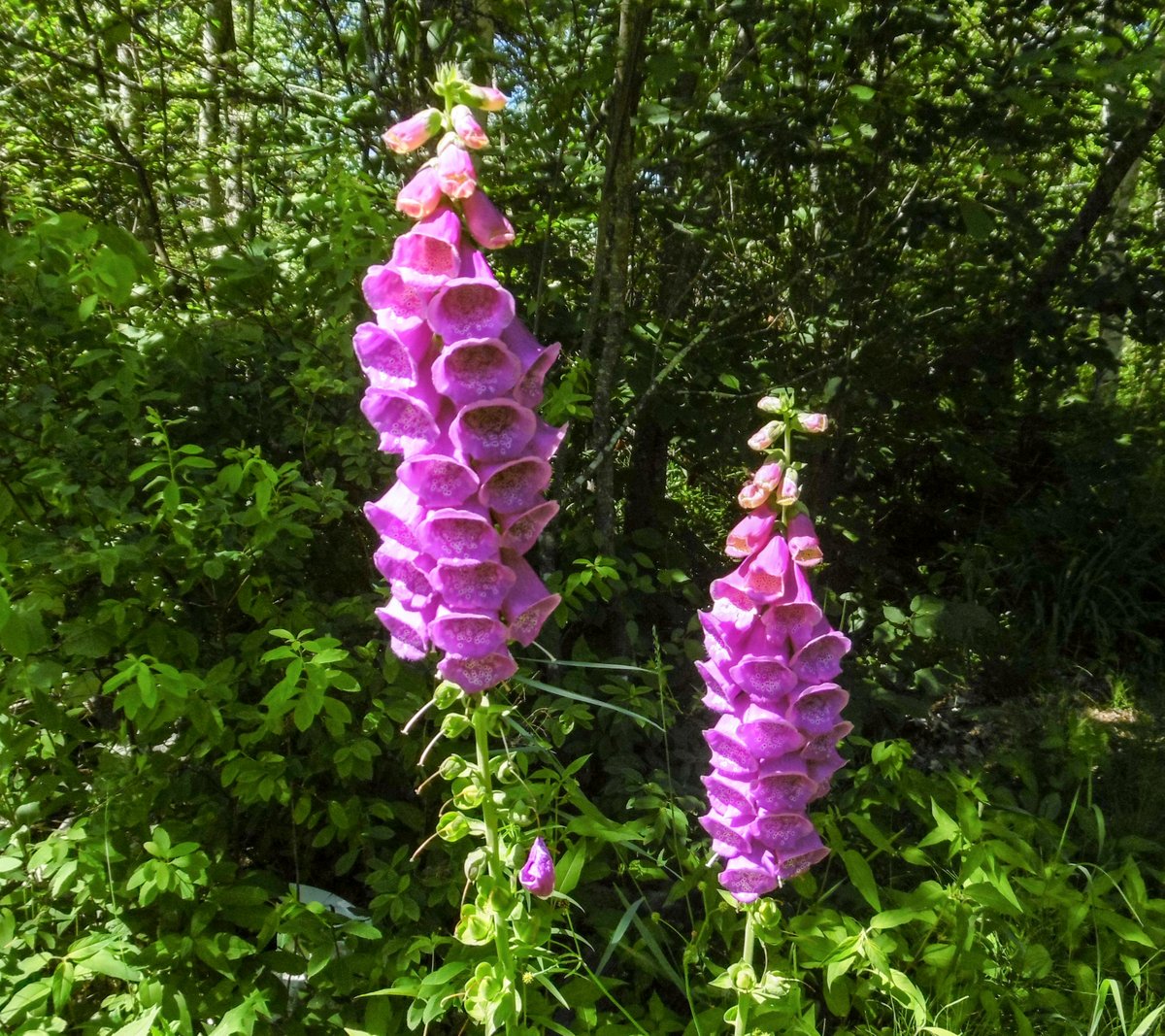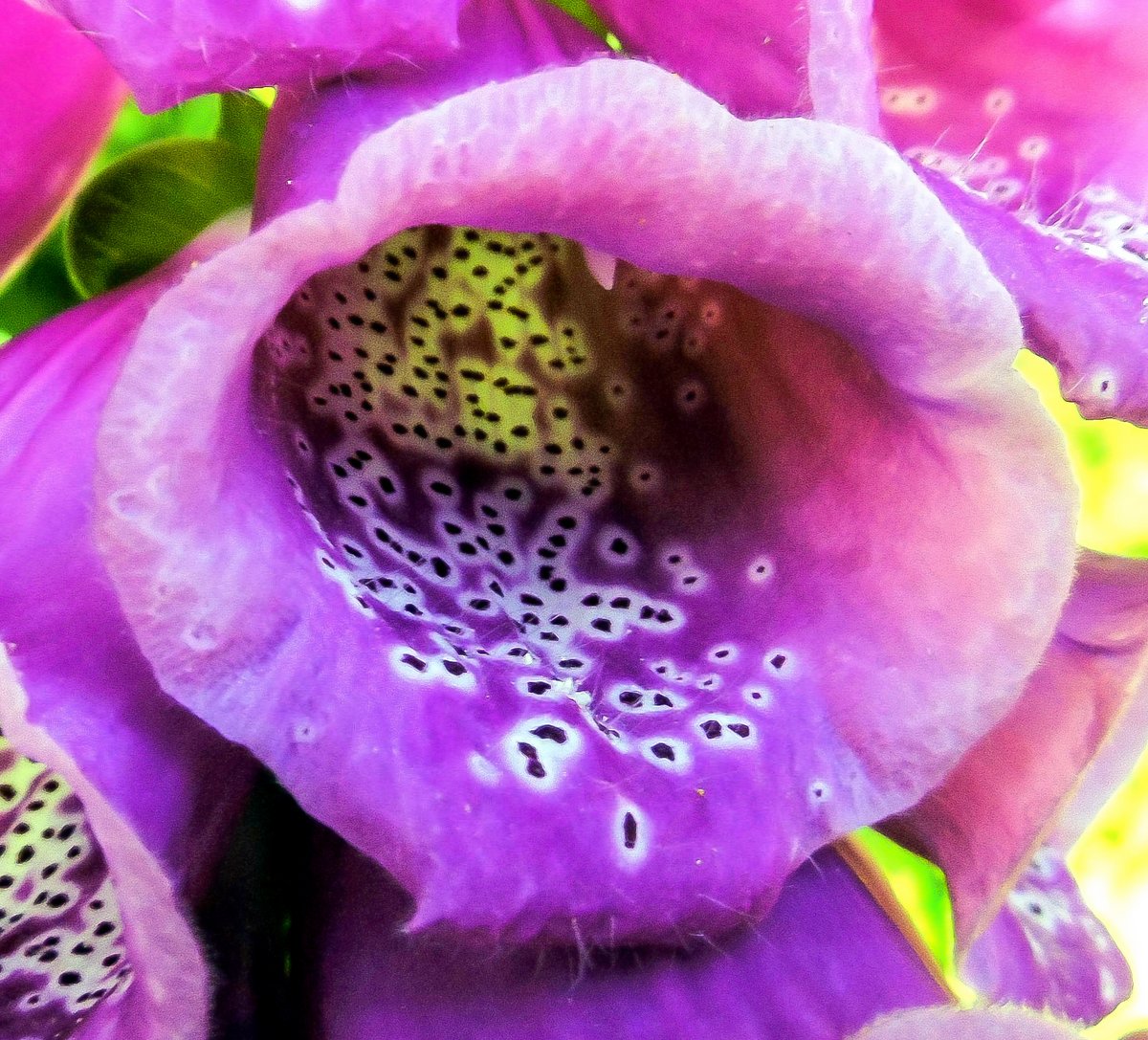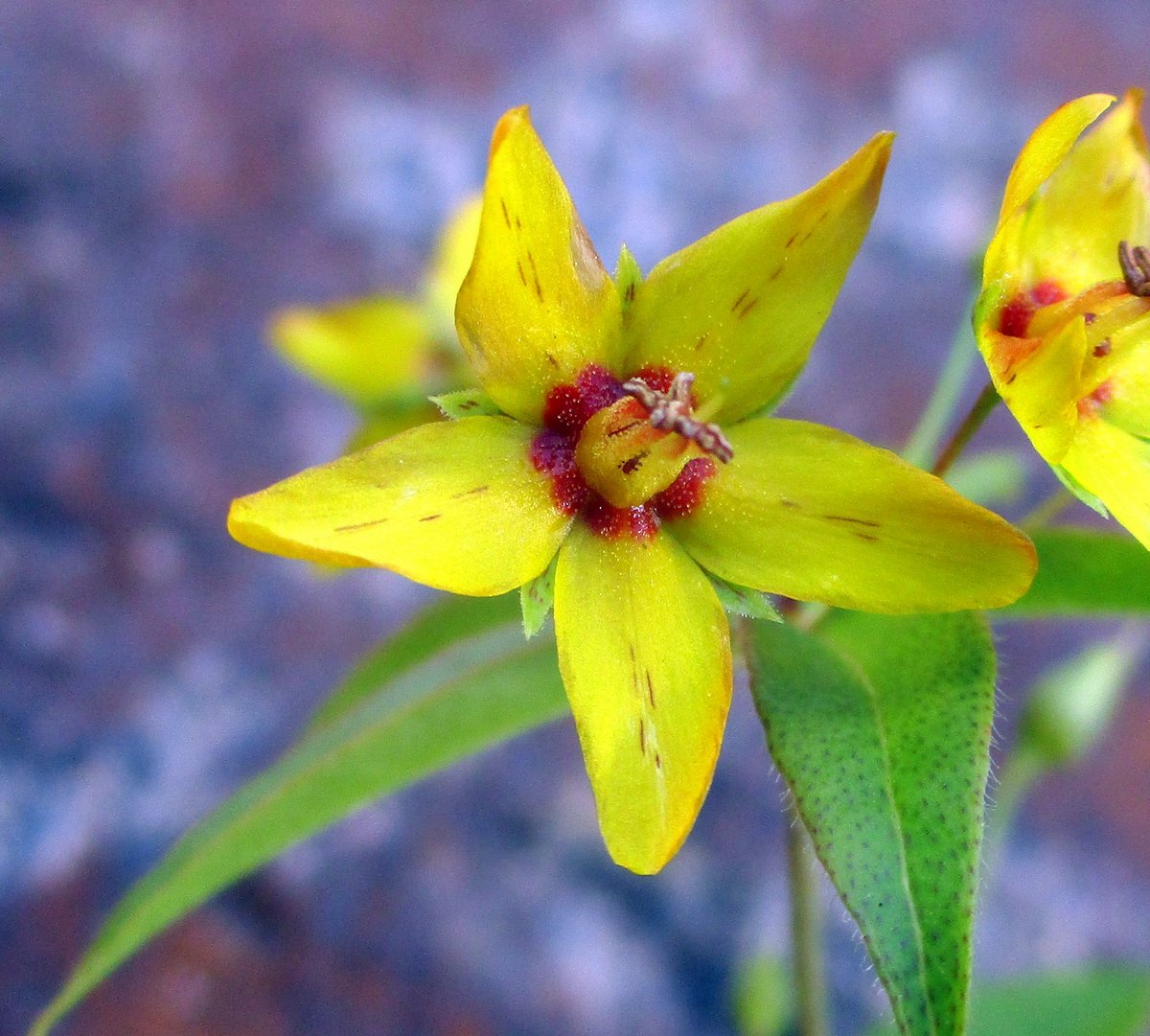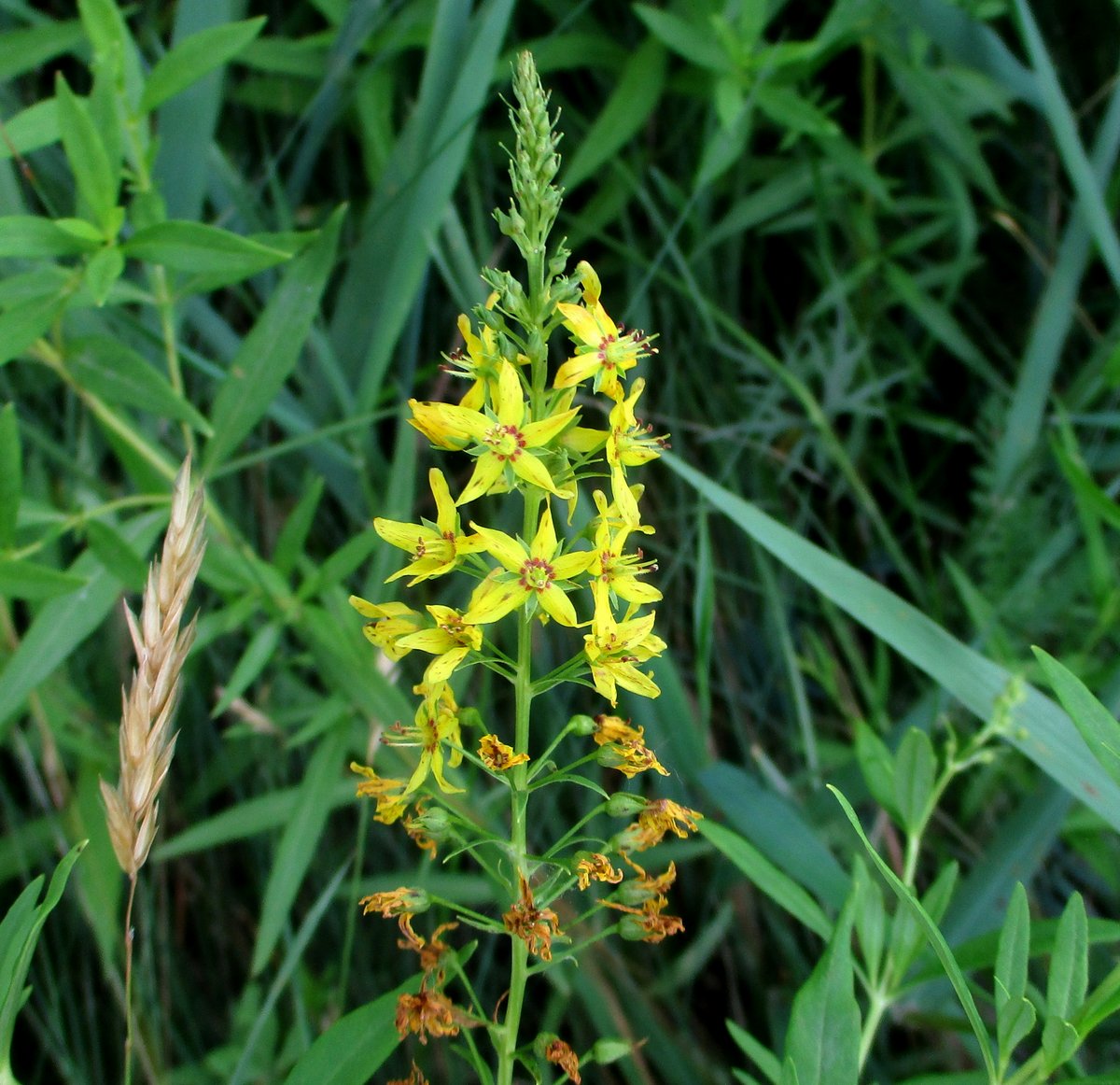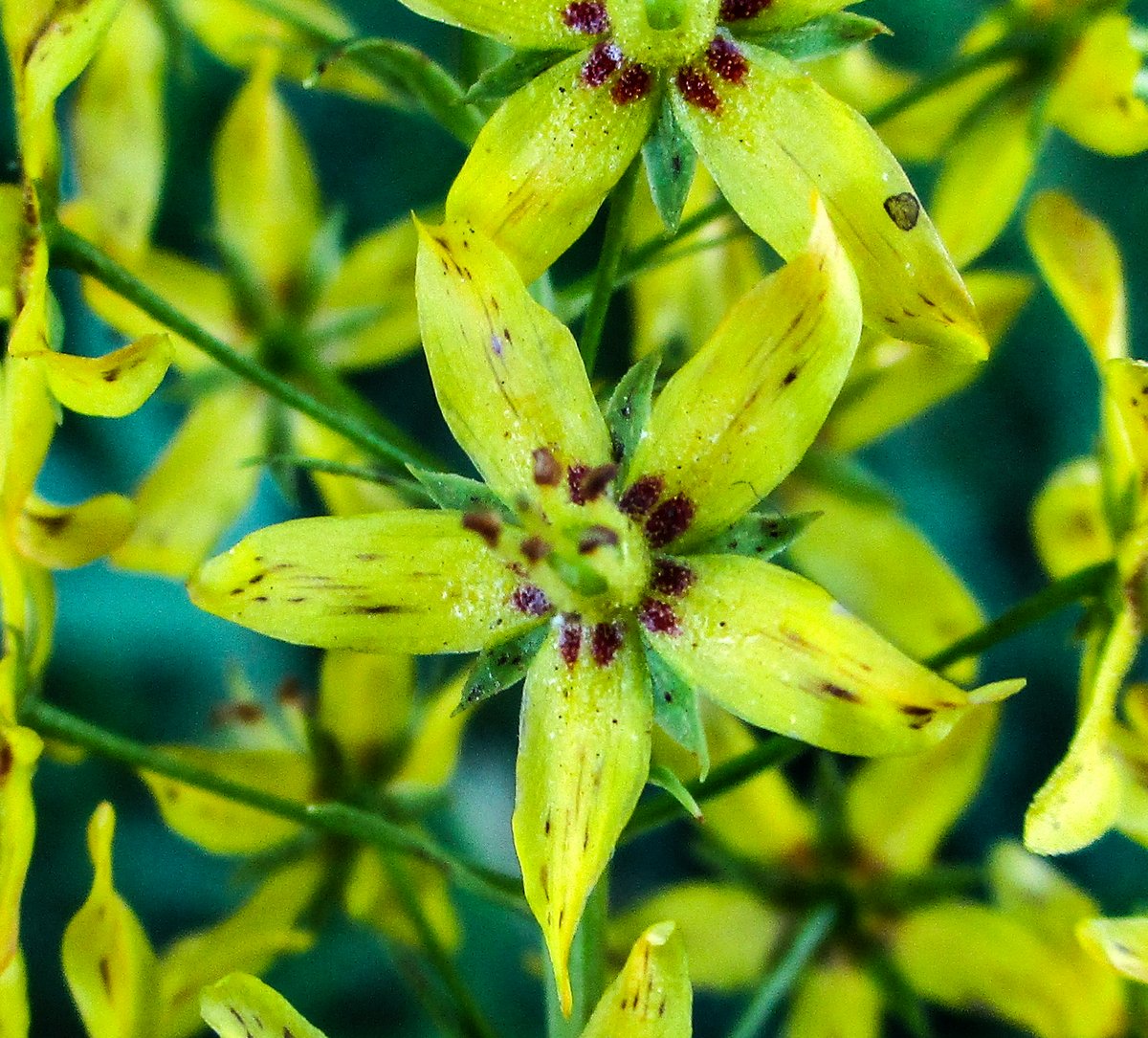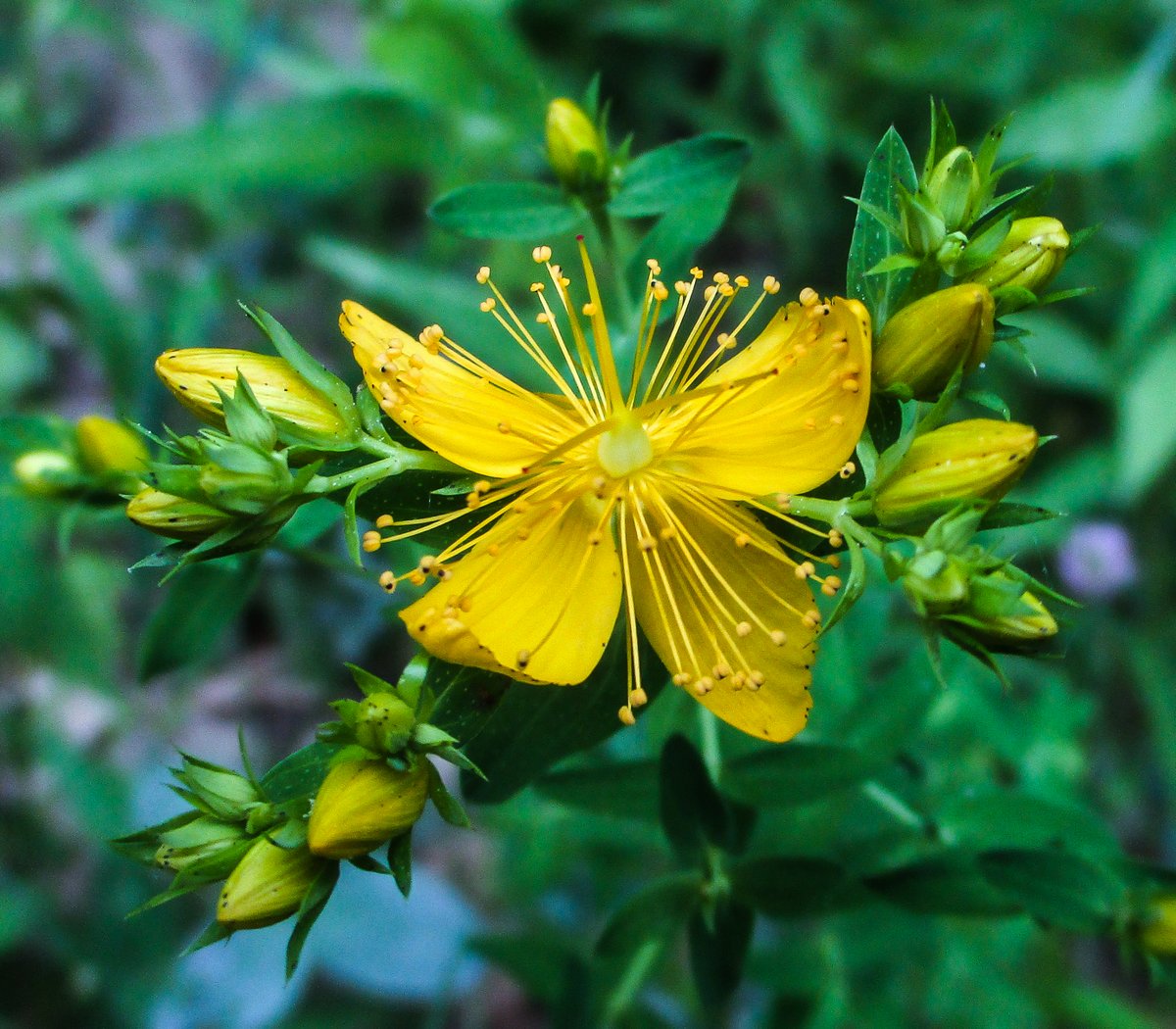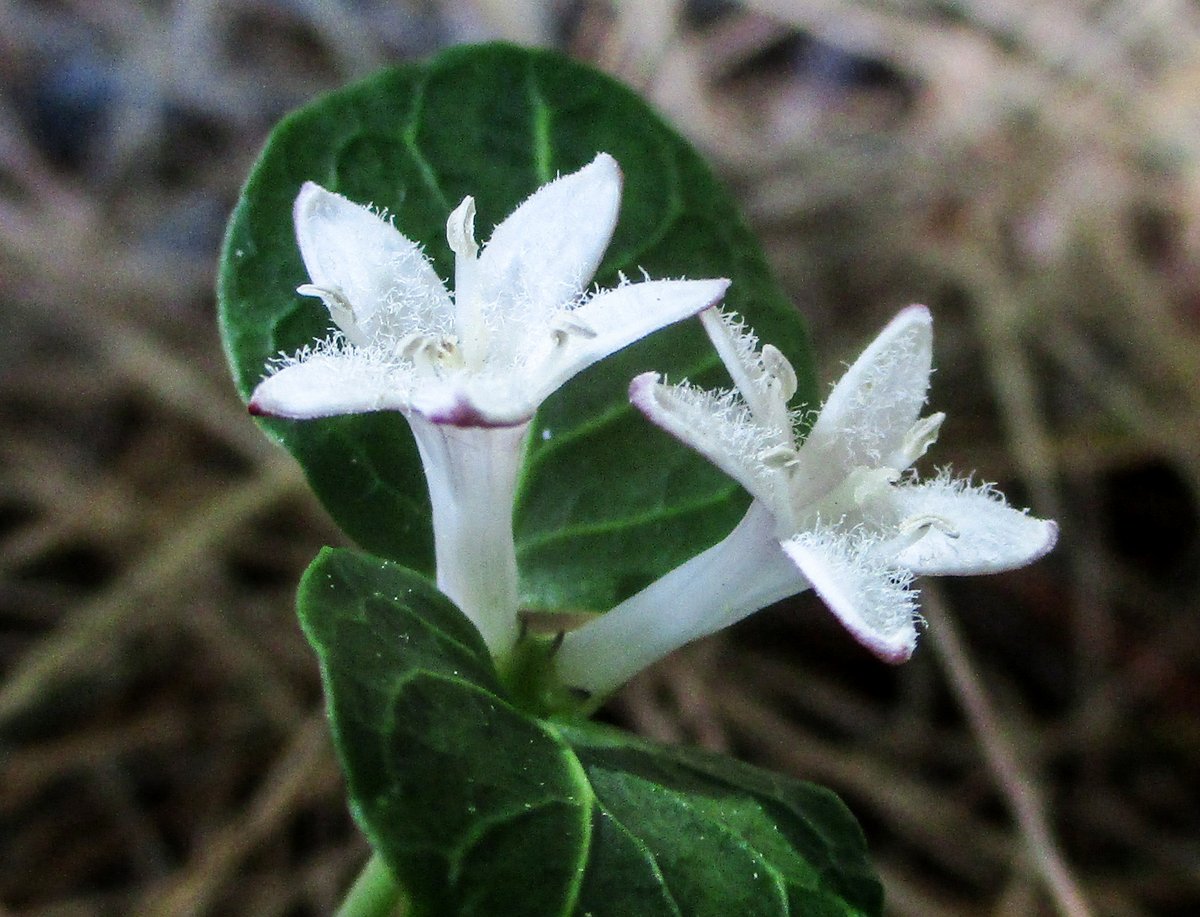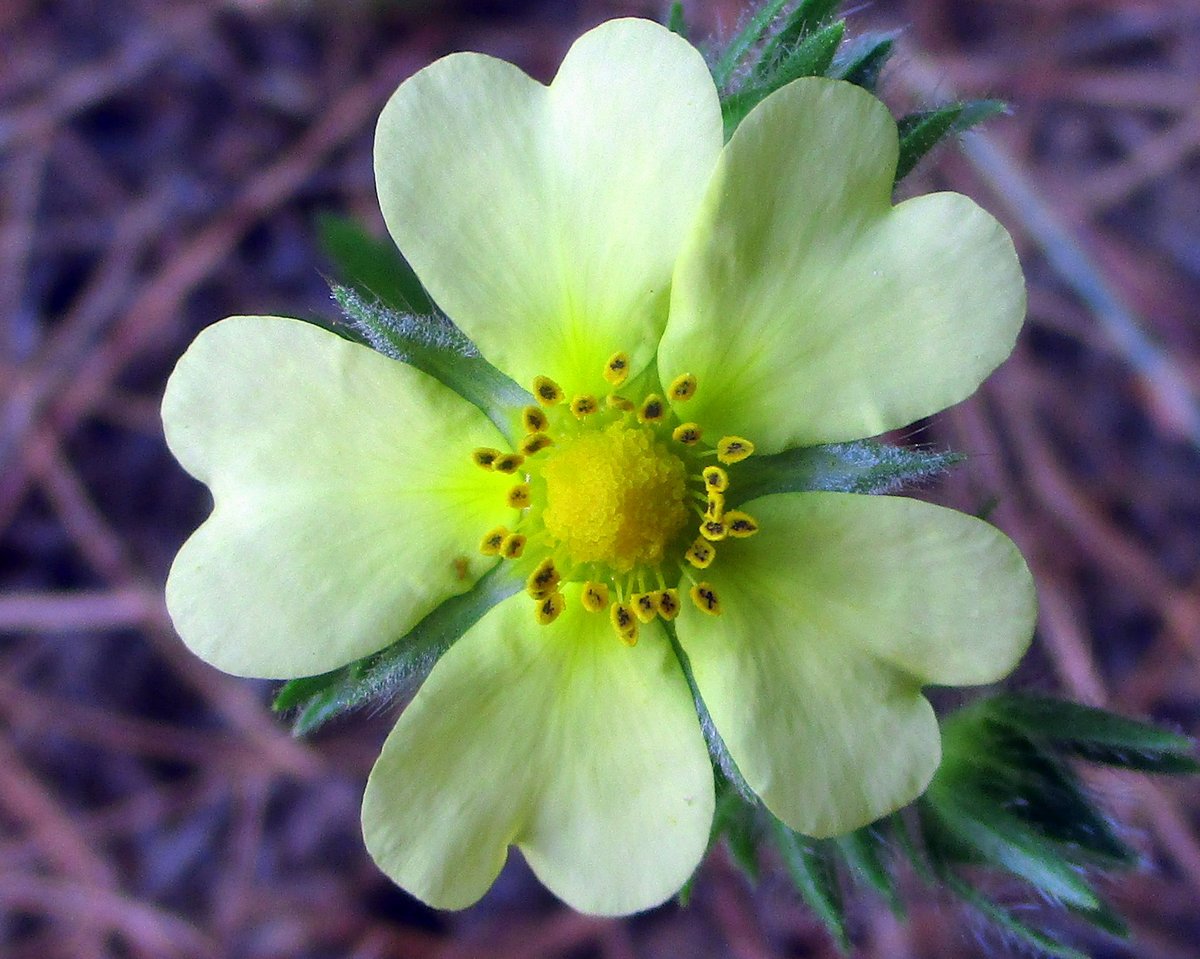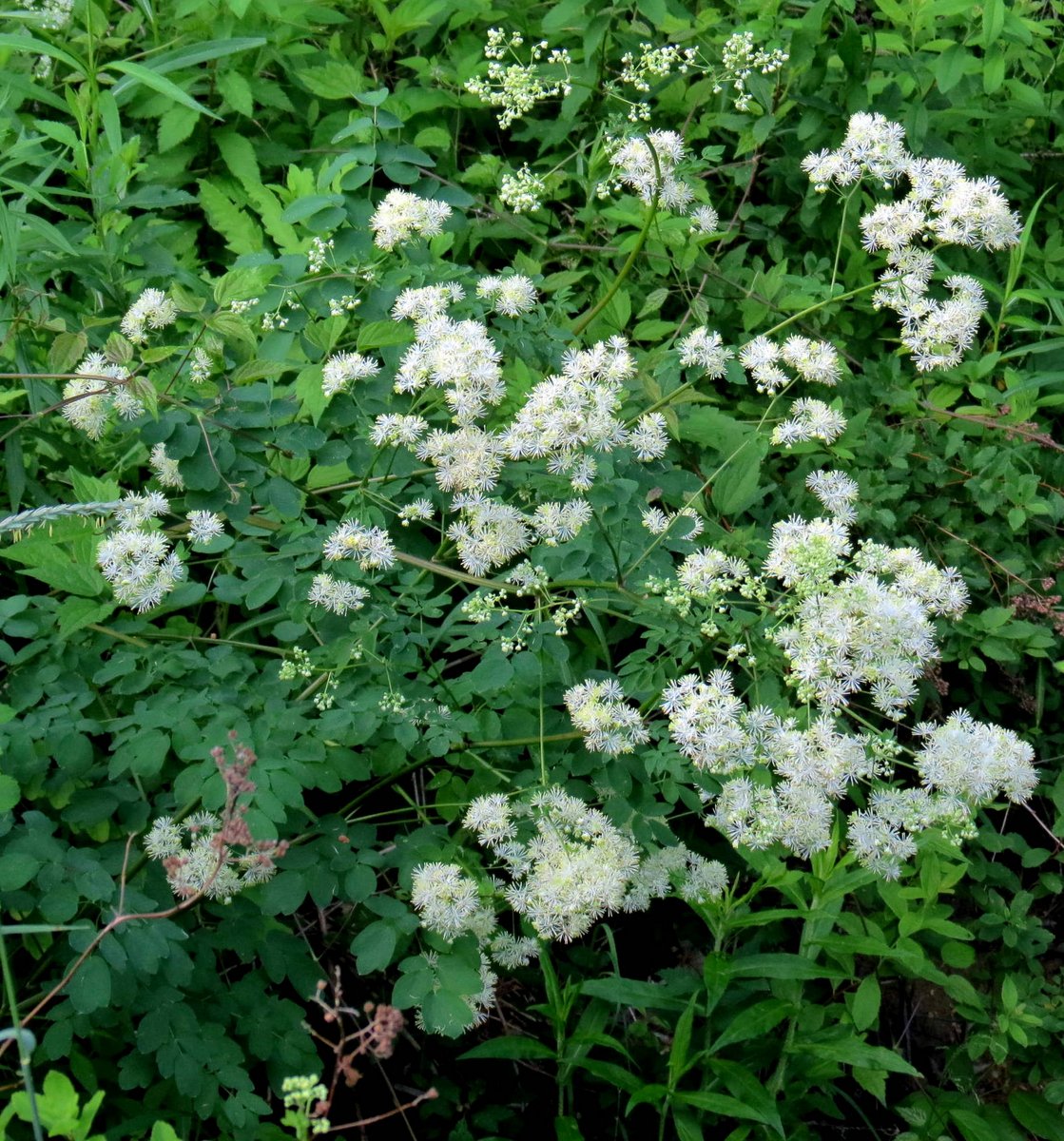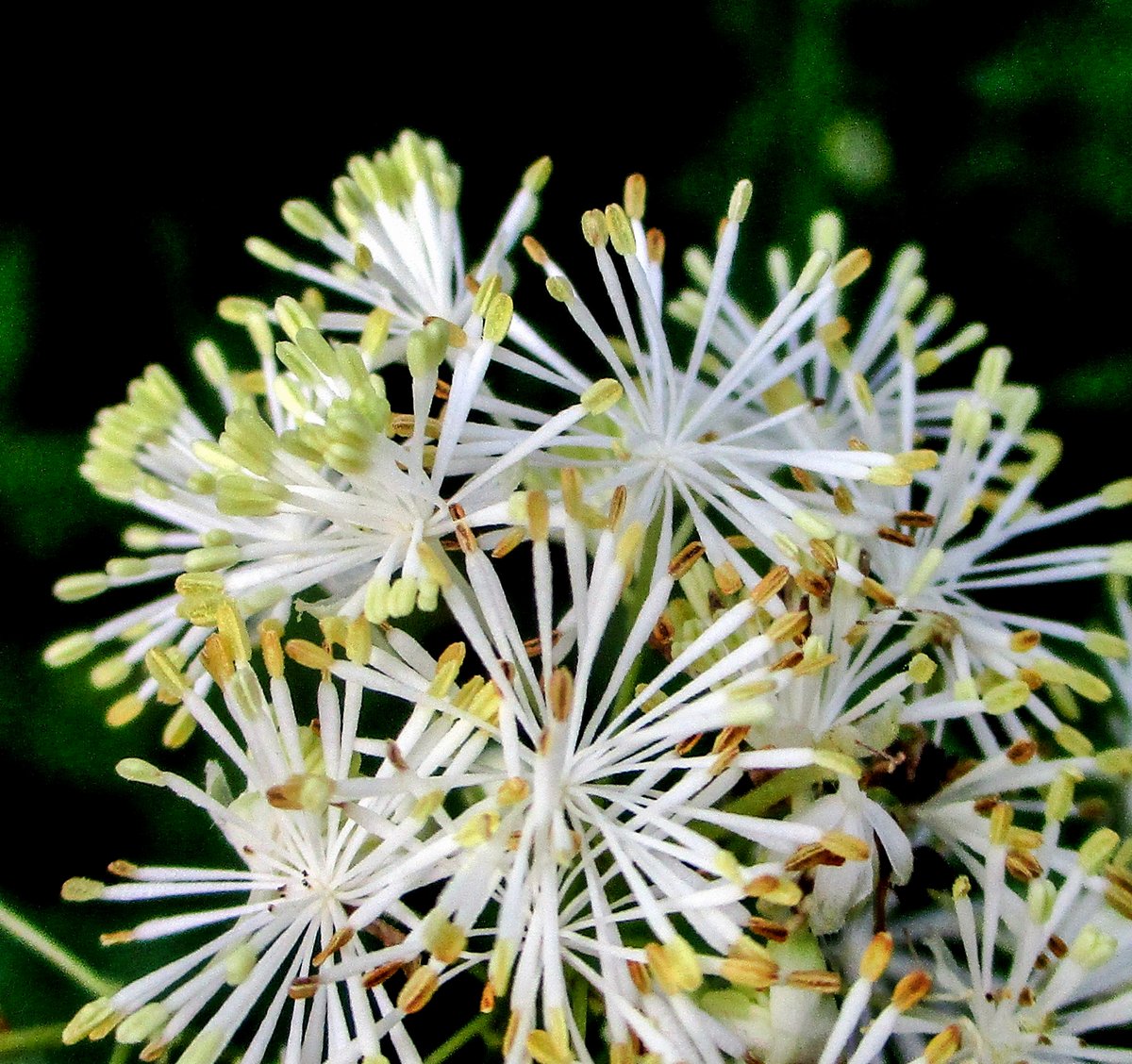
In the last post I said that the plants I showed there weren’t the kind you would find just kicking around on the side of the road, but in this post these plants are exactly what you will find on the side of the road. They’re called weeds, but that doesn’t mean they aren’t beautiful. Just look at the crown vetch seen above. I’ve said here before that if I (as an engineer) were to design a flower, I couldn’t come up with one as simple, pure, and beautiful as this. It’s considered invasive now but it was originally imported to be used to stabilize embankments, and I see it still being used in that way today.

The crown vetch in the previous photo is a legume, in the same family as a pea or a bean, and you can tell that by the shape of the flower. I could bury us in botanical speak but the only thing to really know to identify a legume is that their flowers have a standard and a keel. The standard in this case is the half round part with the dark lines on it and the keel pokes out at us from the lower middle part of the standard. That’s really all you need to know to identify a legume when it is flowering. The reproductive parts are inside the boat shaped keel, and that’s why you see insects trying to pry it open. Sometimes “wings” can appear on either side of the keel, but not always. Just scroll back and forth between the crown vetch and bird’s foot trefoil and you’ll see that the flowers closely resemble each other.
Or, you can just ignore all of the above and simply enjoy them. My knowing what their names are and how they function doesn’t mean I can love them any more deeply than someone who knows nothing about them. In fact, carrying around a sack full of botanical baggage can at times get in the way of seeing a flower for what it truly is, which is simply one of the many ways that nature expresses itself.
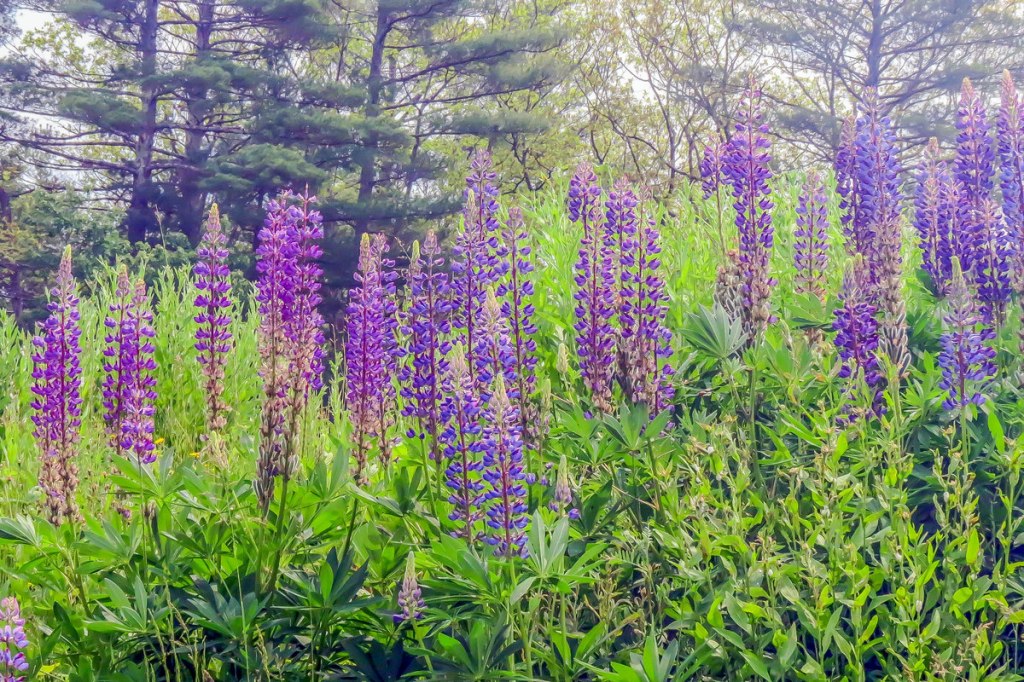
Now come the lupines, which are also legumes. I’m not sure what has gotten into our lupines this year. I’ve never seen them stand so straight and tall. In the past this group, which grows on a roadside embankment, has been much shorter and almost deformed. It must be the rain. It’s easy to see what a year of below average rainfall is like when you have a year of average rainfall to compare it with. After two summers of drought this month we’ve had at least some rain for 22 out of 30 days, and though that’s above average we’re seeing plants respond well, without any symptoms of over watering. Historically, we average about an inch per week.

I like the crepe paper appearance of mallow petals but I don’t see them very often. I know of only two places where they grow beside the road. I know nothing about how they can grow wild in such a limited way, but I have a feeling the plants I know must be garden escapees. Other well-known plants in this family include hibiscus, hollyhocks, and rose of Sharon; all plants with large flowers like this plant has.

But this plant, a dwarf mallow, has flowers that are only about an inch across. I found a few plants growing near the foundation of an old mill building last year and though the maintenance man weed whacks the place regularly he can’t keep them down.

Though spreading dogbane doesn’t look like a milkweed it is in the same family and if you cut its stem you’ll see the same white, sticky sap come oozing out. Milkweeds are notorious for trapping unwary insects and I’ve seen plenty trapped by dogbane. The pretty little fragrant, pink striped flowers might be the diameter of an aspirin at their opening. Native Americans pounded the stems and made a strong thread from the tough fibers which they used to make nets for hunting rabbits, among other things. I find the plants growing in clearings and the shaded edges of forests. It prefers partial shade.

I like to see flowering grasses and I’ve admired them for many years but I didn’t recognize this one so I had to look it up. It’s called wheat grass and though I’m sure I must have seen it hundreds of times, it seems new to me. Its bright yellow flowers mean it stands out from any surrounding vegetation.

The name “Jack go to bed at noon” taught me to watch for goat’s beard flowers in the morning, because all you’ll find is closed buds in the afternoon. I can think of a few flowers that have similar quirks; marsh St. Johnswort won’t open unless it is in full sunshine, which is often about 3:00 pm. Goat’s beard isn’t really common here and I only know of one place to find it. The flowers are followed by huge, spherical seed heads that look like giant dandelion seed heads. They always seem cartoonish like a child’s drawing, and they make me smile.

Golden hop clover is another legume. It’s a small plant that might reach ankle high on a good day and, since bird’s foot trefoil blossoms at the same time, it’s an easy plant to miss. But the flowers make it worth taking a closer look; this one’s inner light was so bright it actually lit up the underside of the leaf beside it. This is another invasive plant that was imported on purpose in 1800 to be used as a pasture crop. It now appears in most states on the east and west coasts, and much of Canada, but it is not generally considered aggressively invasive. Each pretty yellow flower head is packed with golden yellow pea-like flowers. I see it growing close enough to roadsides to be run over, and in sandy waste areas as well.

Though some plants in the nightshade family are edible, others are highly poisonous. The bittersweet nightshade in the above photo falls somewhere in between. Even toxic plants can have medicinal value if used in a certain way and this one has been used since ancient times. These days it is used to treat ringworm, skin diseases and even asthma. If its flowers are pollinated the plant will have small, shiny, bright red berries that look like tiny Roma tomatoes in late summer, and they are why the plant can be dangerous. The berries at first taste bitter and are usually immediately spit out but if kept in the mouth before long their taste becomes sweet, and that’s where the name bittersweet comes from. I remember as a boy I could never get past the strange foul odor the plant has, so I was never tempted by its berries. Bruising it in any way releases this odor and it’s a real stinker, with an odor that can be detected from a few feet away.
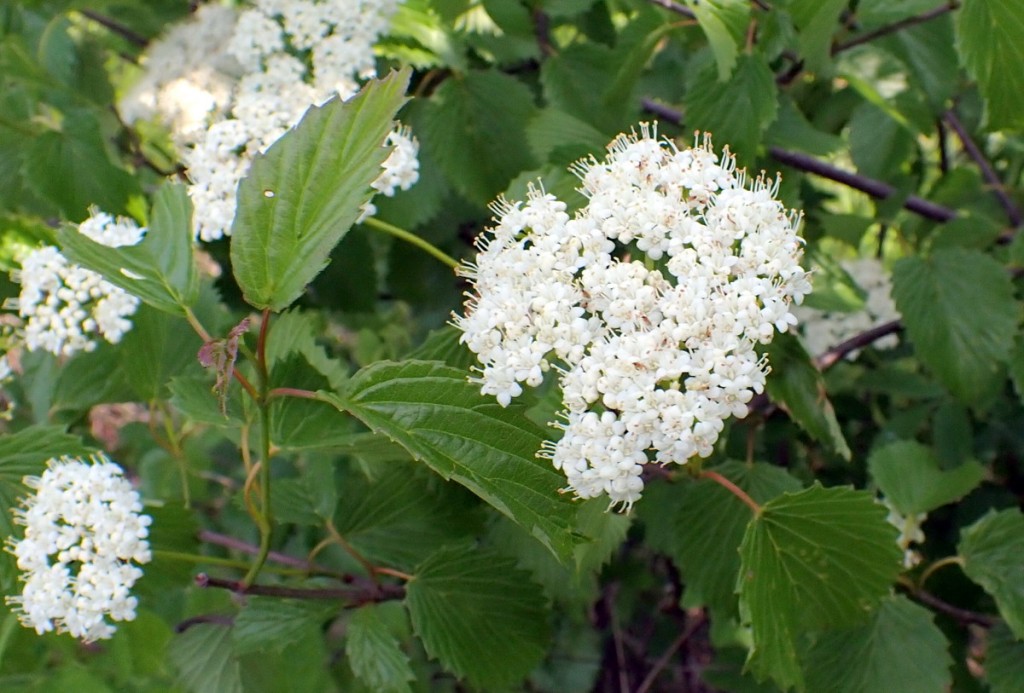
As this arrowwood shows, viburnums are still blooming. But their time is almost done, just in time for the native dogwoods to start blooming. The simplest way to know which is which is to look closely at the flowers. Viburnum flowers have five petals and dogwoods have four petals. One thing distinctive about arrowwood that separates it from other viburnums is its leaf’s shape and shine. It is said that this plant’s common name comes from Native Americans using the straight stems for arrow shafts. They also used the shrub medicinally and its fruit as food.

I was just reading that insects prefer a single, rather than a double flower because they don’t have to work as hard to get at what they want, and after looking at a single rose I can believe it. A single flowered rose is defined as having four to eight petals per flower. A double flowered rose has seventeen to twenty five petals, according to the American Rose Society. This flower says “here I am” and there is hardly any work involved in getting at its reproductive parts. We have three native roses and a few others which are garden escapees, so roses are one of those flowers that are easy to stumble upon.

This particular bush had so many bumblebees on it they were bumping into my arms as I tried to get a shot of a flower and I remembered how my son as a boy of probably five or six, was convinced that bumblebees couldn’t sting. One day he caught one and closed his hand around it and found that they could indeed sting. Luckily on this day they were too busy to bother with me.

Multiflora rose is a common small flowered rose from China that is seen just about everywhere, and that’s because it is very invasive. Birds eat the small, bright red hips and plant it everywhere. I’ve seen it climb 30 feet up into trees but it doesn’t climb with tendrils like a grape, or by twining itself around trees like oriental bittersweet. It just winds its way through the branches of surrounding shrubs and trees and uses them to prop itself up. It’s all about getting the most sunlight, and this one is an expert at it.

Though multiflora rose is one of the most invasive plants we have in this part of the country it’s also highly fragrant and I’ve always loved smelling it as I walked along rail trails. You wouldn’t think that a flower only an inch across could pack so much scent but they do, and walking by a bush full of them in June is something you don’t forget right away. The trouble in controlling this rose comes by way of its very numerous, sharp thorns and extremely long branches. Cutting just one full grown plant and pulling all of its branches out of the surrounding vegetation can take the better part of a day, and then you still have to dig the stump. By the time you’re done you’ve almost filled a pickup truck. That’s just one plant, and there are many thousands of them. That’s a good reason to pull them when they’re just getting started. Late November after the leaves have fallen is the best time to do it. But not without gloves!

Partridgeberries are ground huggers; they couldn’t grow any closer to the ground than they do, so you’re always looking down at the flowers. Looking down you don’t see how hairy they are, so to see their hairiness as you see it in the photo you have to become a ground hugger too. The tiny flowers blossom in pairs and share a single ovary, so any time you find a pea size red berry on a ground hugging plant you can check to see if it’s a partridge berry by looking for two dimples. The dimples show where the flowers grew. If the berry has no dimples it is probably an American wintergreen berry, also called a teaberry, and its strong wintergreen scent should give it away. My favorite part of a partridge berry plant is its leaves, which look like hammered metal.

Heal all is recorded in the histories of several countries before travel was recorded, so nobody seems to agree on where it originated. The name heal all comes from the way that it has been used medicinally for centuries on nearly every continent to cure virtually any ailment one can name. It is also known as self-heal and is still used today for healing wounds, throat ailments, and inflammation. Several major universities are researching its possible use in the treatment of breast and liver cancer, diabetes, and other serious illnesses. Native Americans used the plant as a food and also medicinally, treating bruises, cuts, sore throats, and other ailments. I often find it in mowed lawns or along roadsides and I call them nature’s cheerleaders, because the small purple flowers always seem to be shouting Yay! Just look how happy they are; always smiling.

St. John’s wort gets its common name from the way that it flowers near June 24th, which is St. Johns day, and that’s just what it did this year. Originally from Europe, the two foot tall plants with bright yellow flower clusters can be found in meadows, waste places, and along roadsides, growing in full sun. Man has had a close relationship with the plant for thousands of years; the Roman military doctor Proscurides used it to treat patients as early as the 1st century AD, and it was used by the ancient Greeks before that. It is still used today to treat depression, sleeping disorders, anxiety, and other issues.

Sulfur cinquefoil is a rough looking, knee high plant that grows in waste places and on the edges of corn fields where few people ever go, but its heart shaped, butter yellow petals are quite beautiful, in my opinion. They have that deeper yellow center that always makes them seem to shine like the summer sun.

Flowers can come with some very powerful memories and one of the most powerful for me comes with black eyed Susans. My first thought as soon as I see it is “fall” no matter when it blooms, and that thought always seems to come with a touch of melancholy, especially when it comes in June. This year thanks to this plant I was thinking of fall even before summer had officially arrived. None of this means I don’t like the plant; I think its flowers are very pretty, especially those with a splash of maroon on the petals. I suppose if life wasn’t occasionally tinged with a little sadness then joy wouldn’t seem so precious, but someday I’m going to have to sit with this one and ask “why do you do this to me?’

Shy little wood sorrel barely reaches your boot tops and its pretty flowers often hide behind its leaves so you have to do a bit of hunting if you want to see them. Heavy rain had dirtied the face of this one a bit but we can still see its beautiful stripes and the yellow spot on each petal. I always have to smile when I see the spots because they look as if they were painted on as an afterthought, there only to attract insects. The plant likes shady, moist places. I’ve only found it in only two places so I couldn’t say it was common, but it’s out there.
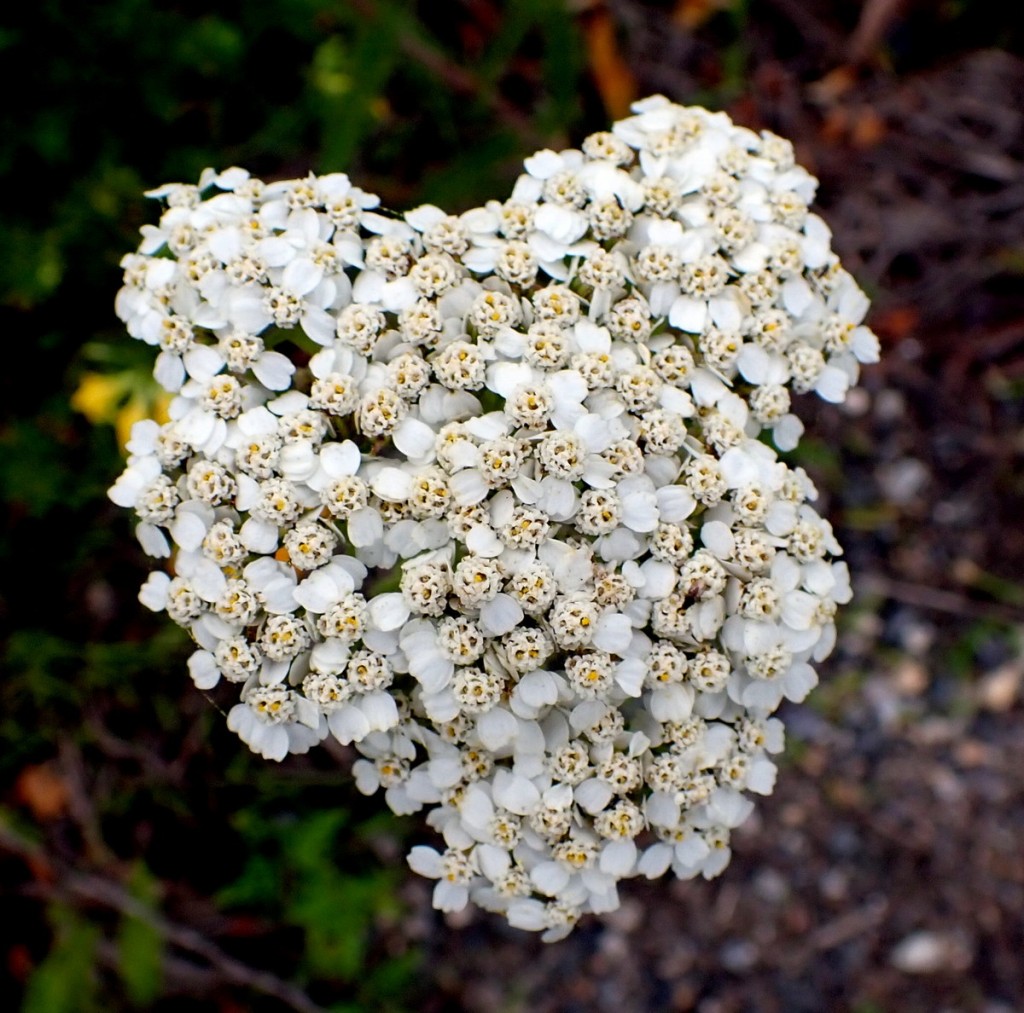
Yarrow is a common roadside weed now considered by many to be the lowest of the low, but it was once so valuable it was traded throughout the world, and today it is found on almost every continent on earth. It is mentioned in the Chinese I Ching, which is said to pre date recorded history, and has been found in excavations of neanderthal graves. It was a valuable healing herb; one of the nine “holy herbs,” and was known as the soldier’s woundwort and herbe militaris for centuries; used even during the American civil war to stop the flow of blood. Native Americans knew it well and used it for everything from snake bites to deodorant. Once so highly prized throughout the known world by emperors, healers, and sages, today people don’t even pretend to try to not run it over when they park their cars on the roadside.

Roadside weeds aren’t special things or magic things, but they are things that can put just a little magic into everyday life and help make it a little more special. They ask for nothing but bring pleasure, and help us slow down so we can get our share of life’s beauty in full measure. There is more than enough to go around, so we might as well see all we can. Just walk along a roadside and see if they don’t put a smile on your face.

I almost forgot to include fireworks in honor of Independence Day. Nature’s fireworks that is, in the form of tall meadow rue. I’ve always thought that the orange tipped male flowers, which always appear on or near the 4th, looked just like exploding fireworks. I hope everyone who wants to, gets to see the real thing this year. It’s looking like a chance of showers here this year but as I remember it there was almost always a chance of showers when firework displays were involved.
Take the time to observe the simple and ponder upon the seemingly insignificant. You’ll find a wealth of depth and beauty. ~Melanie Charlene
Thanks for stopping in. I hope everyone has a safe and happy 4th!



